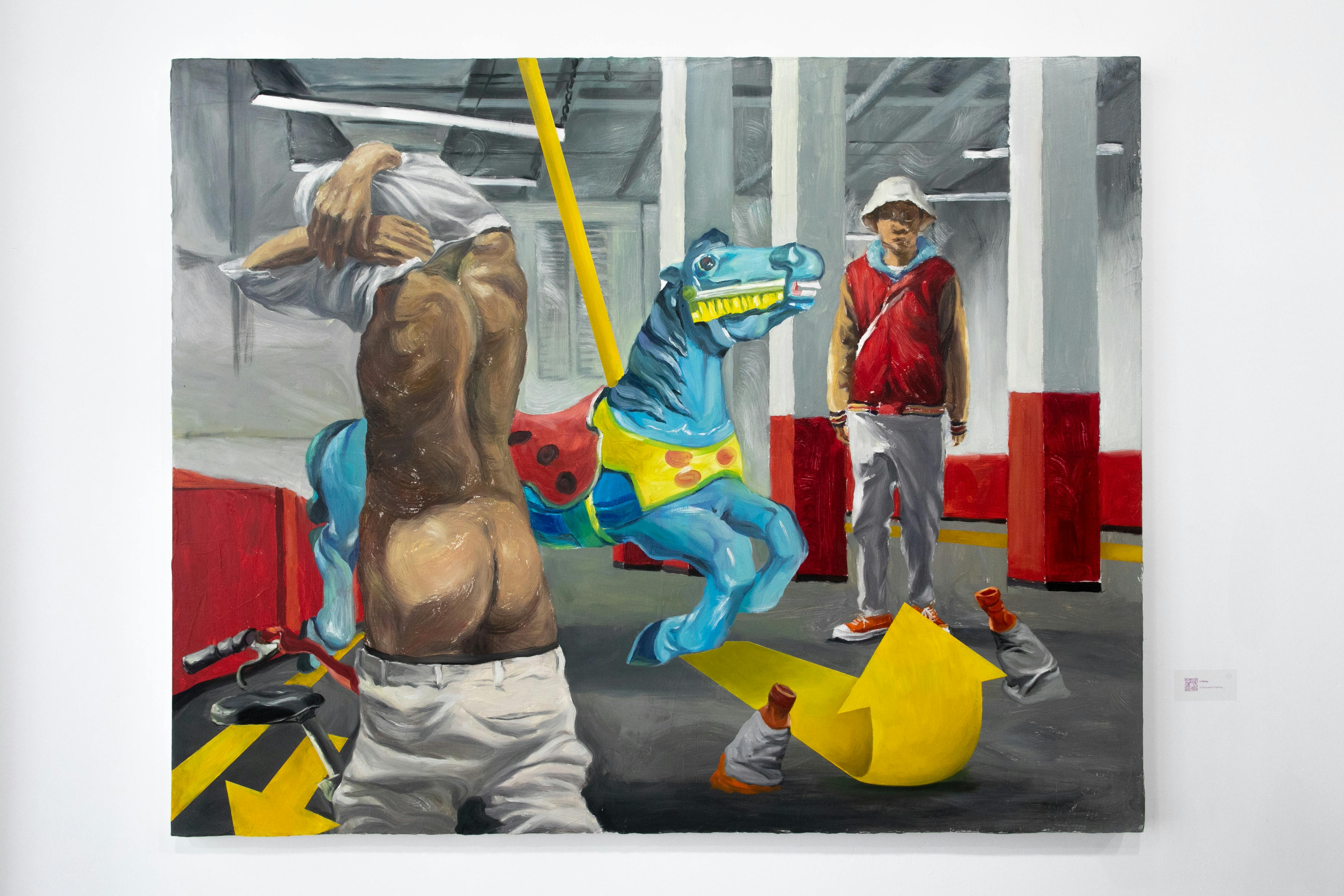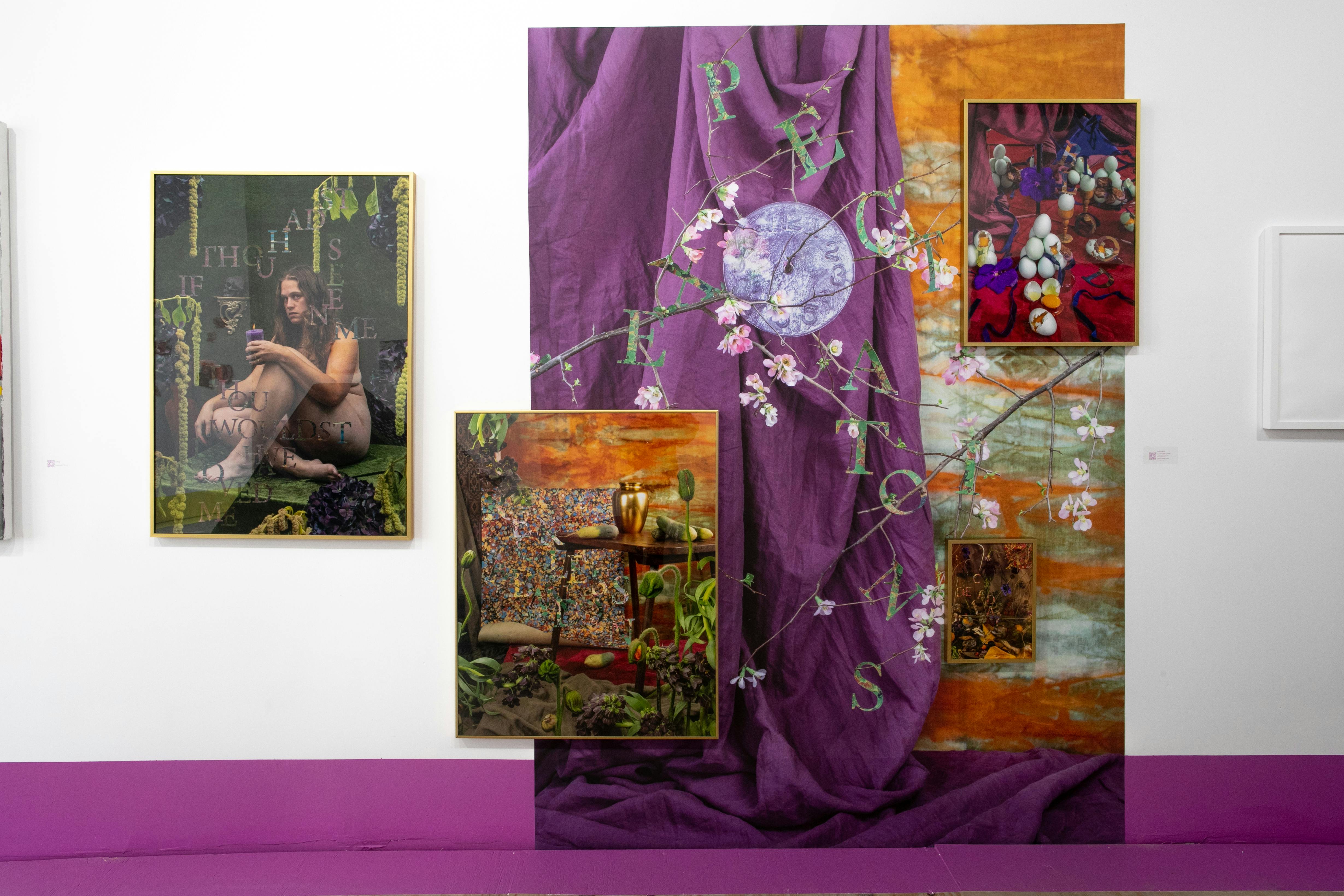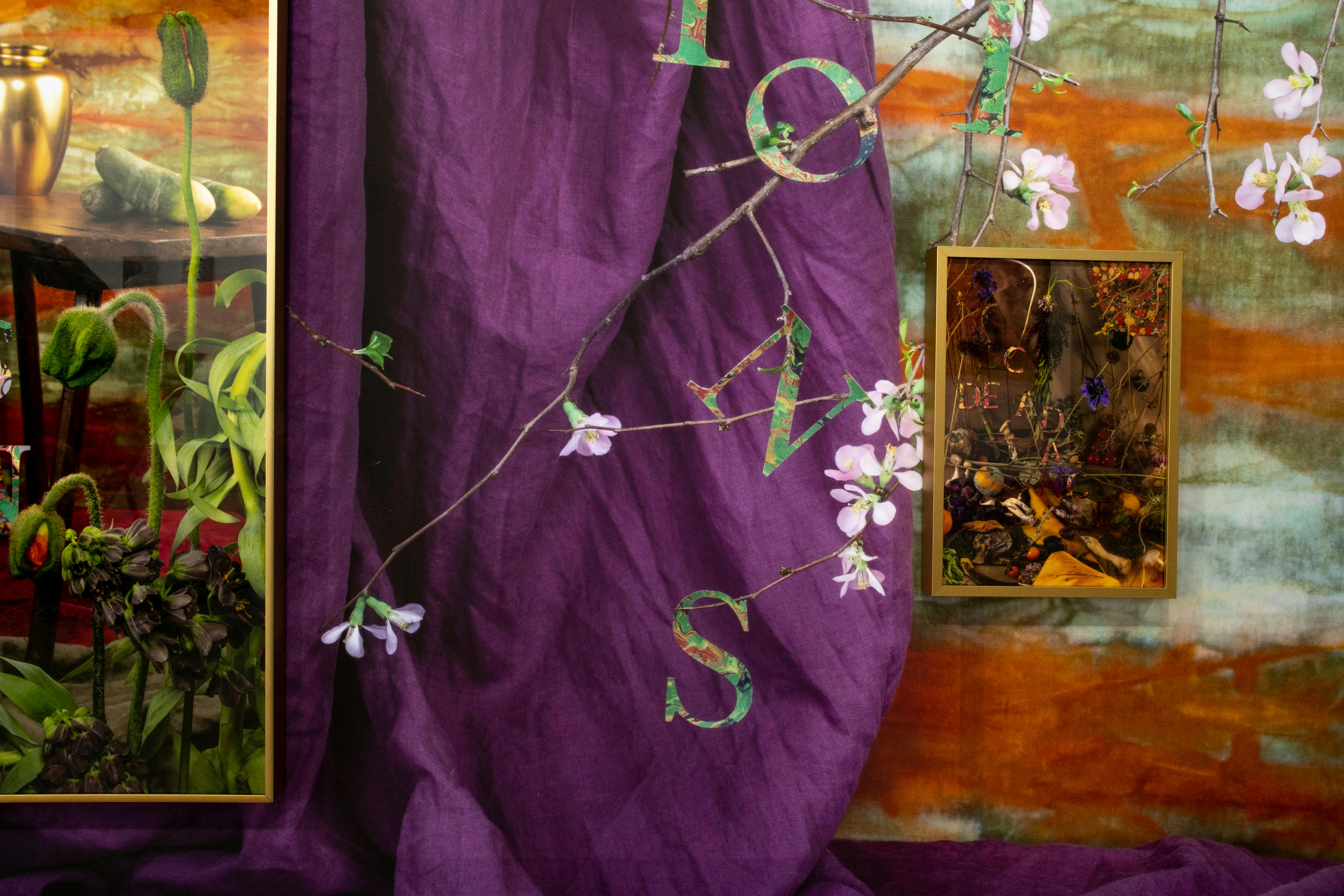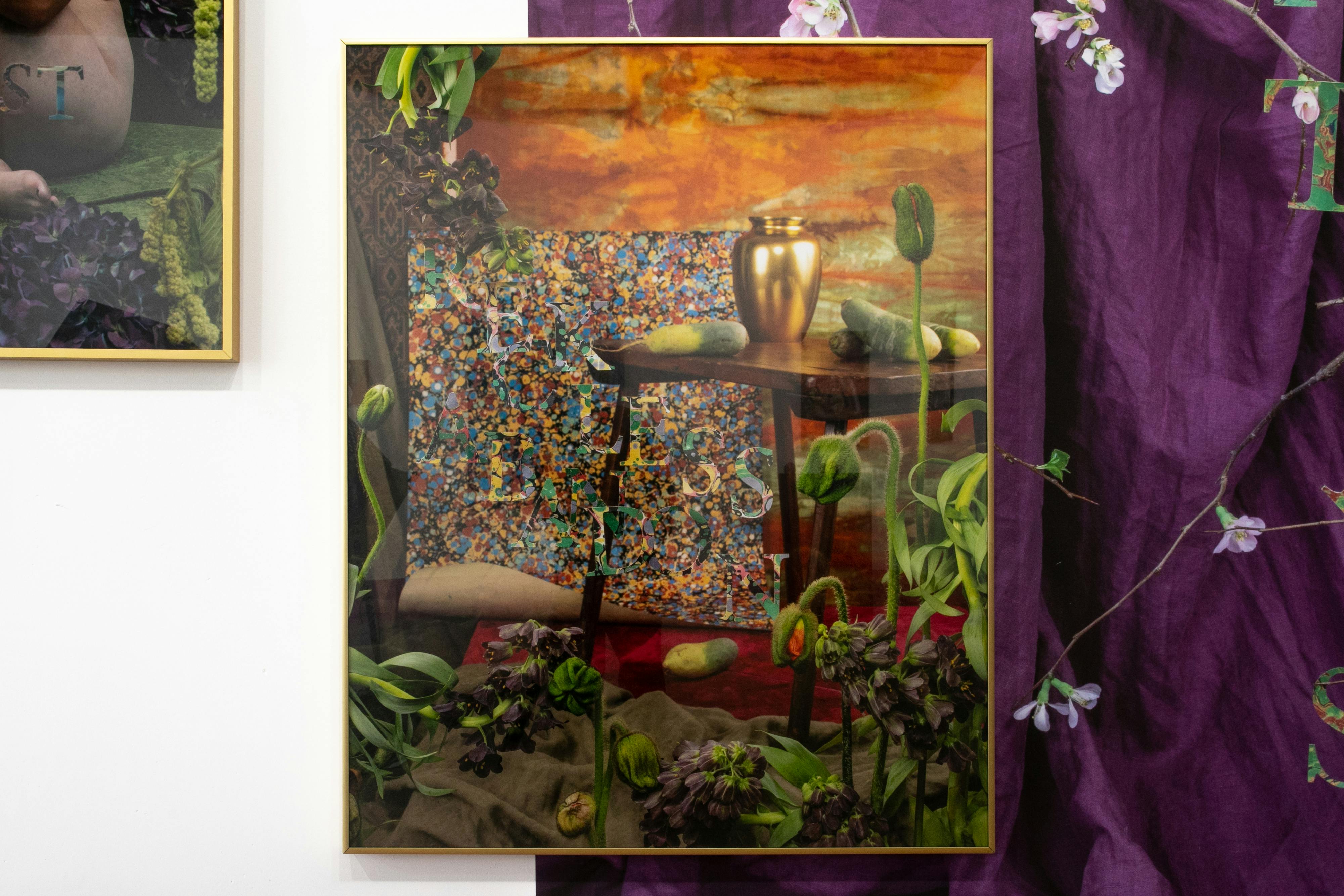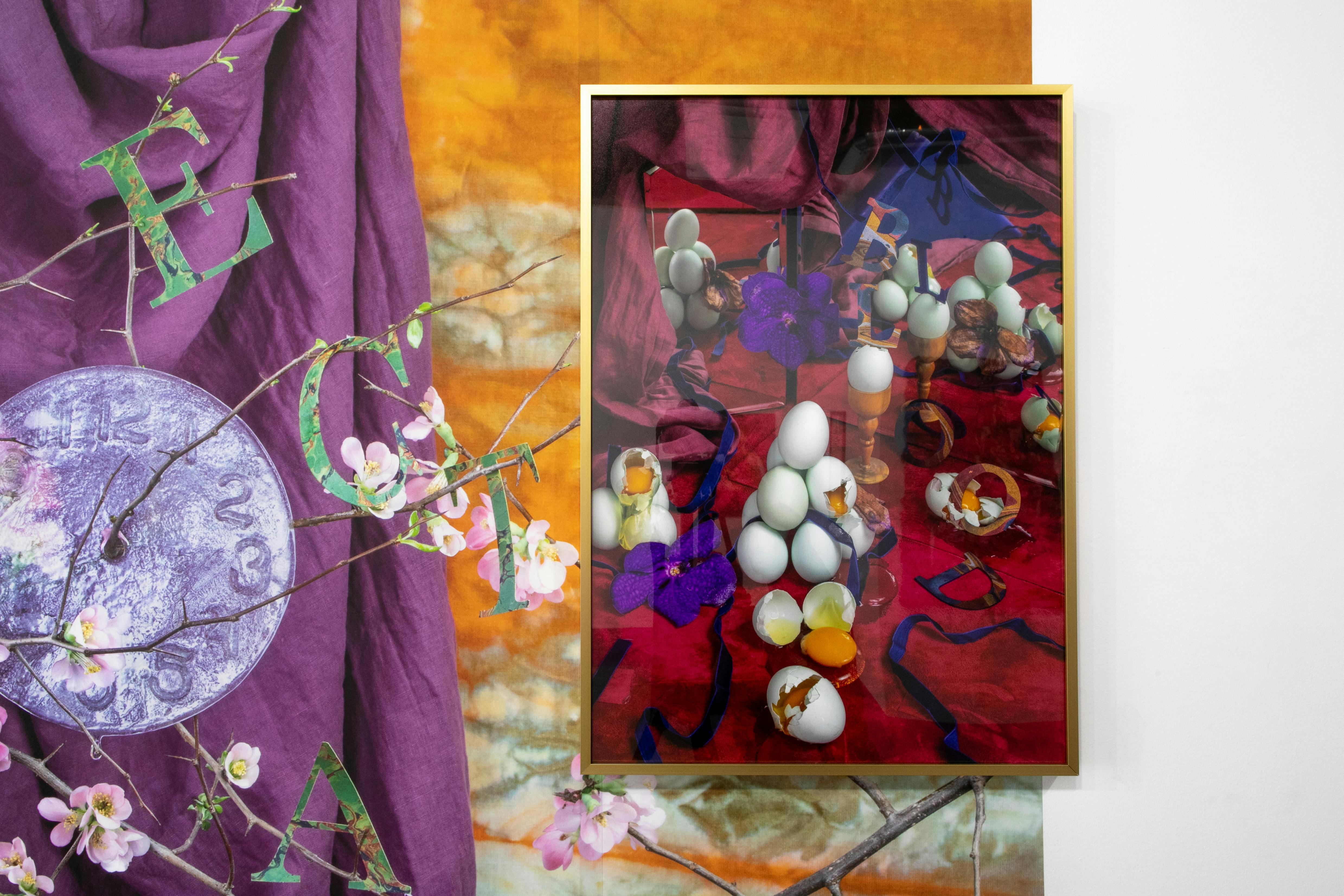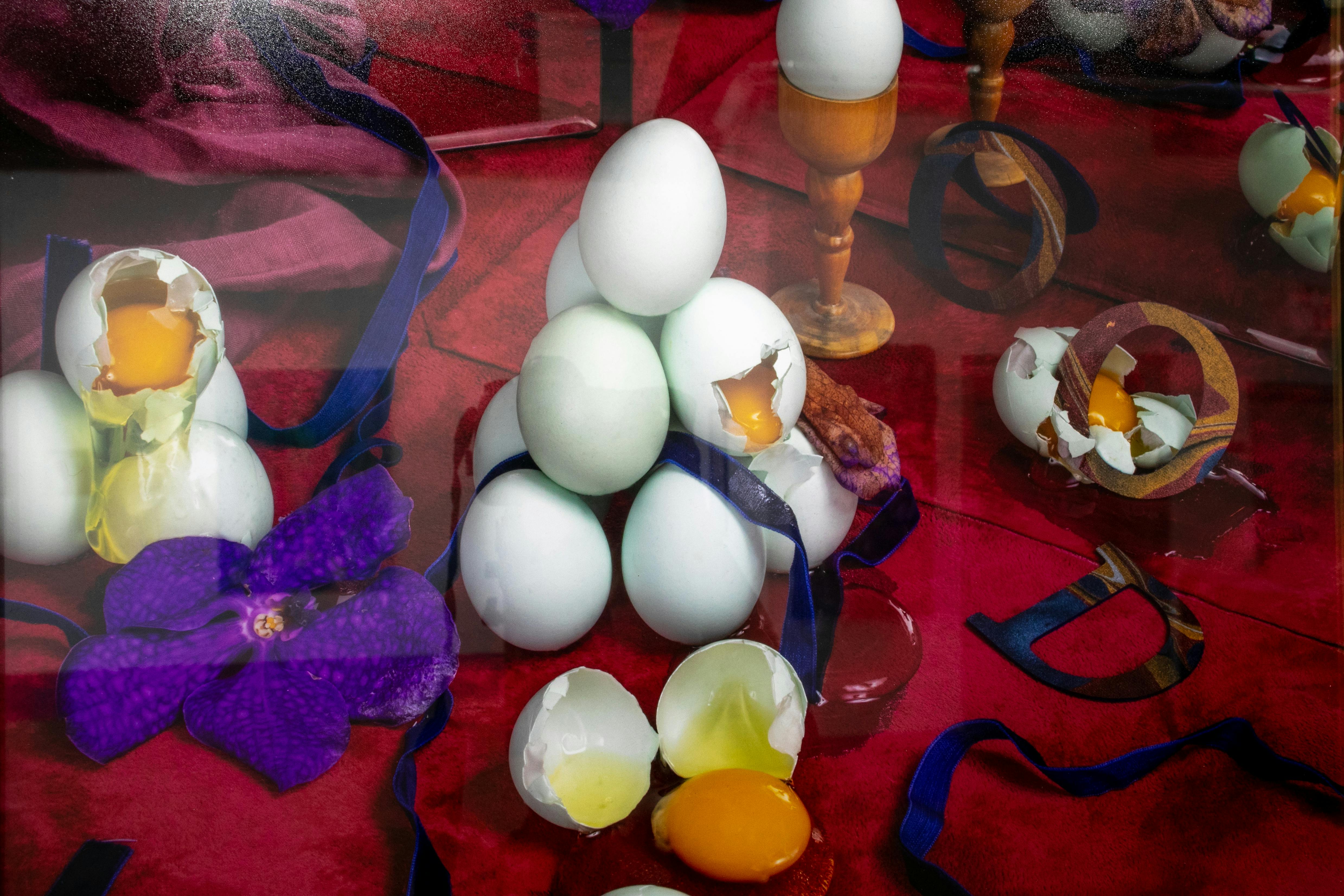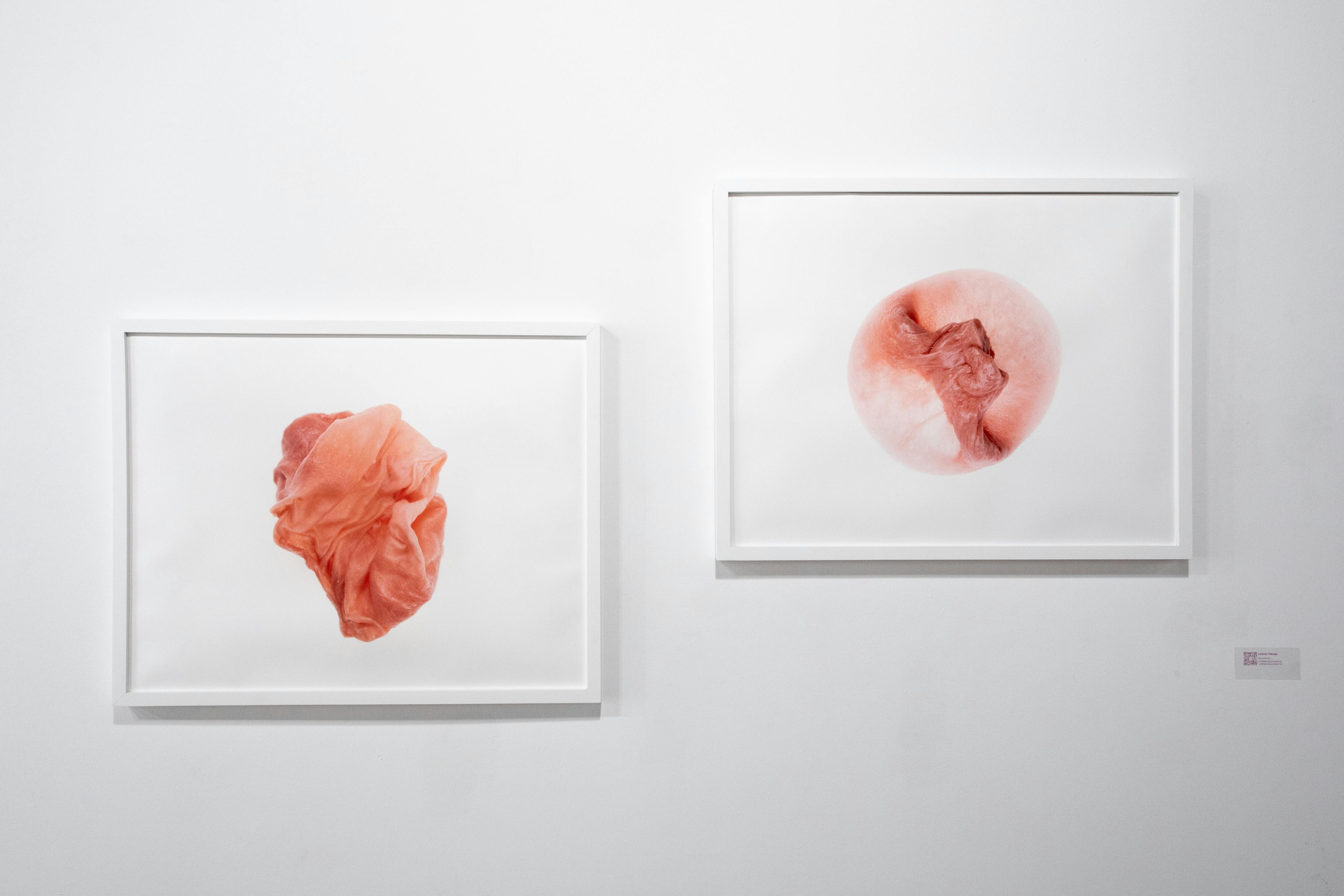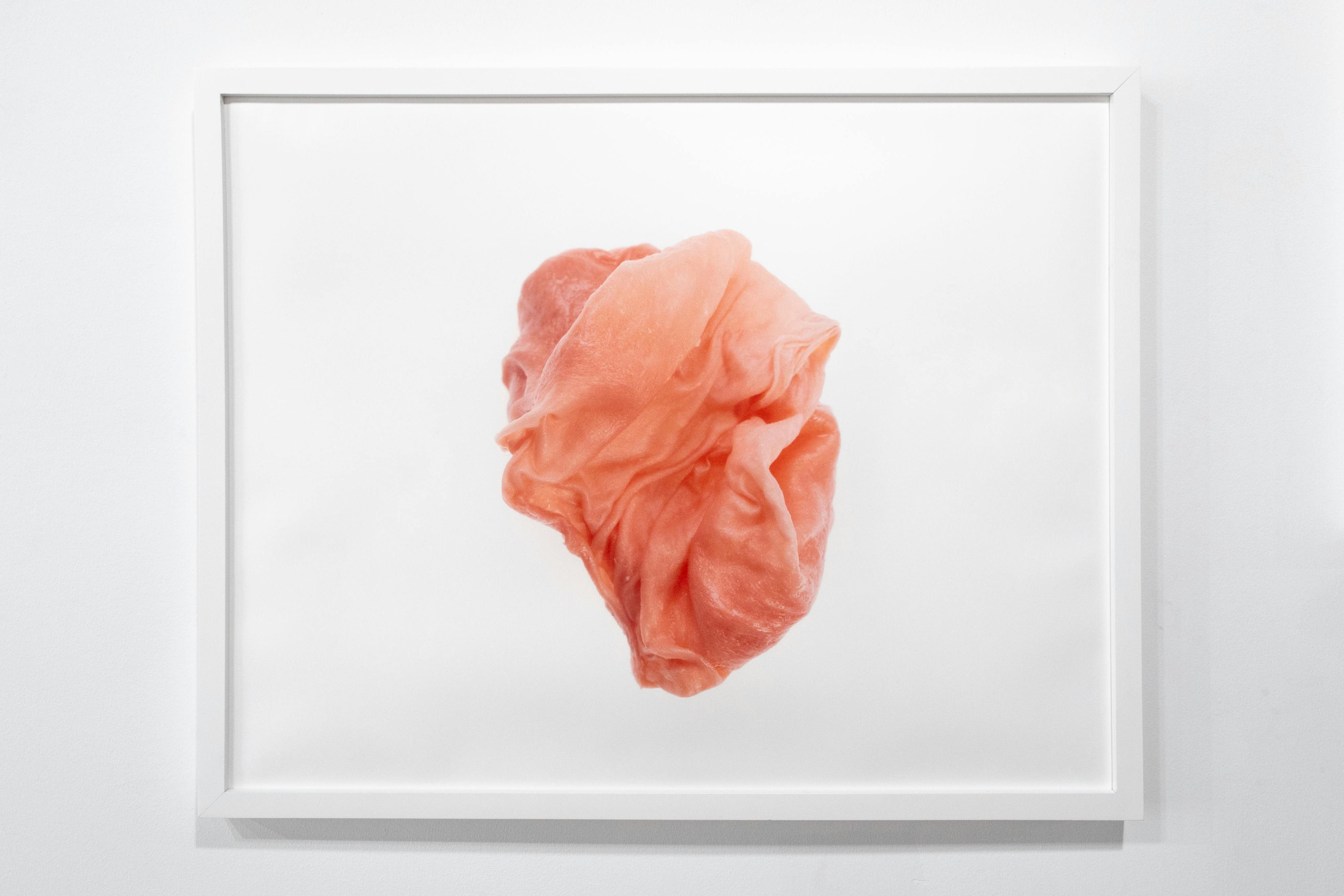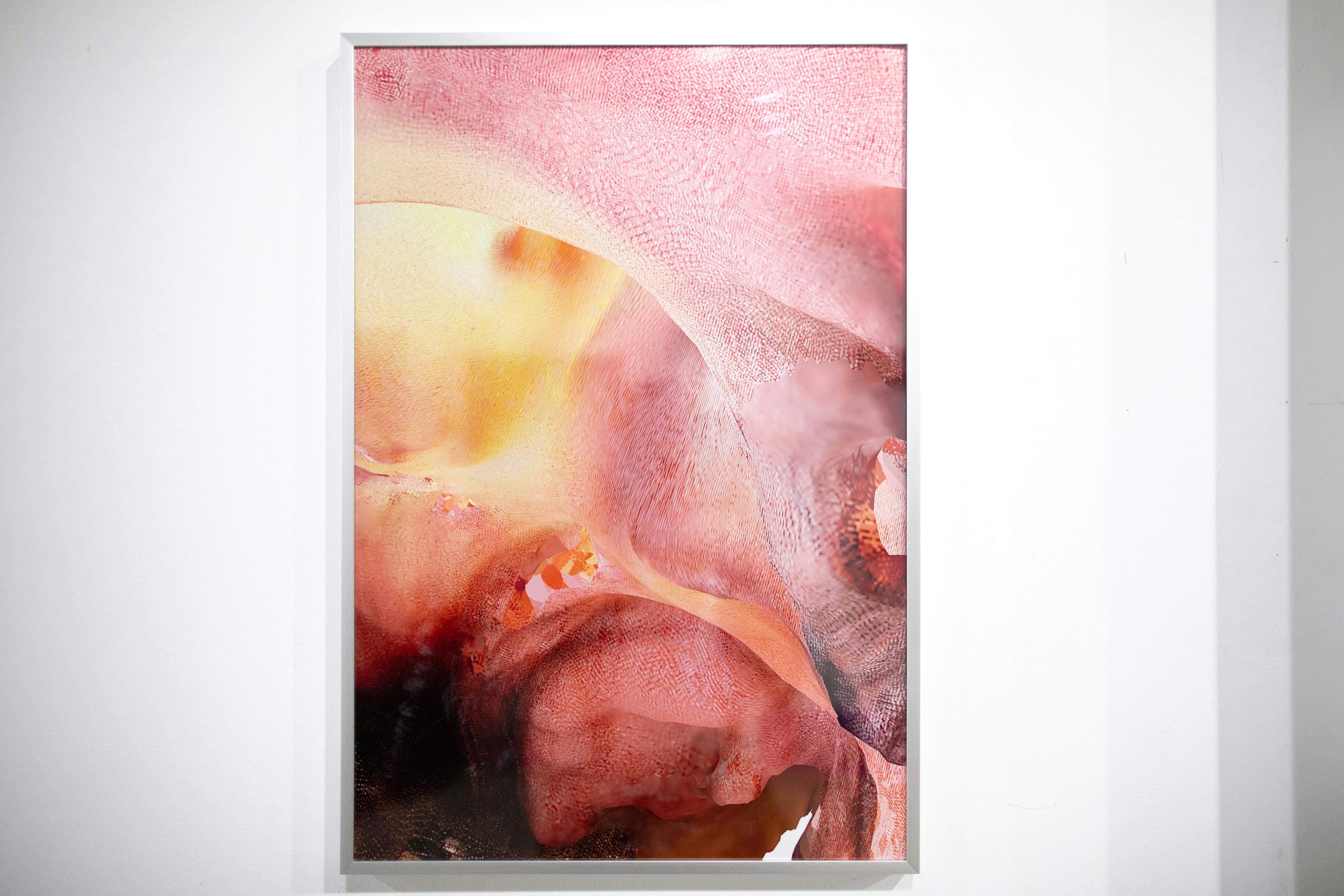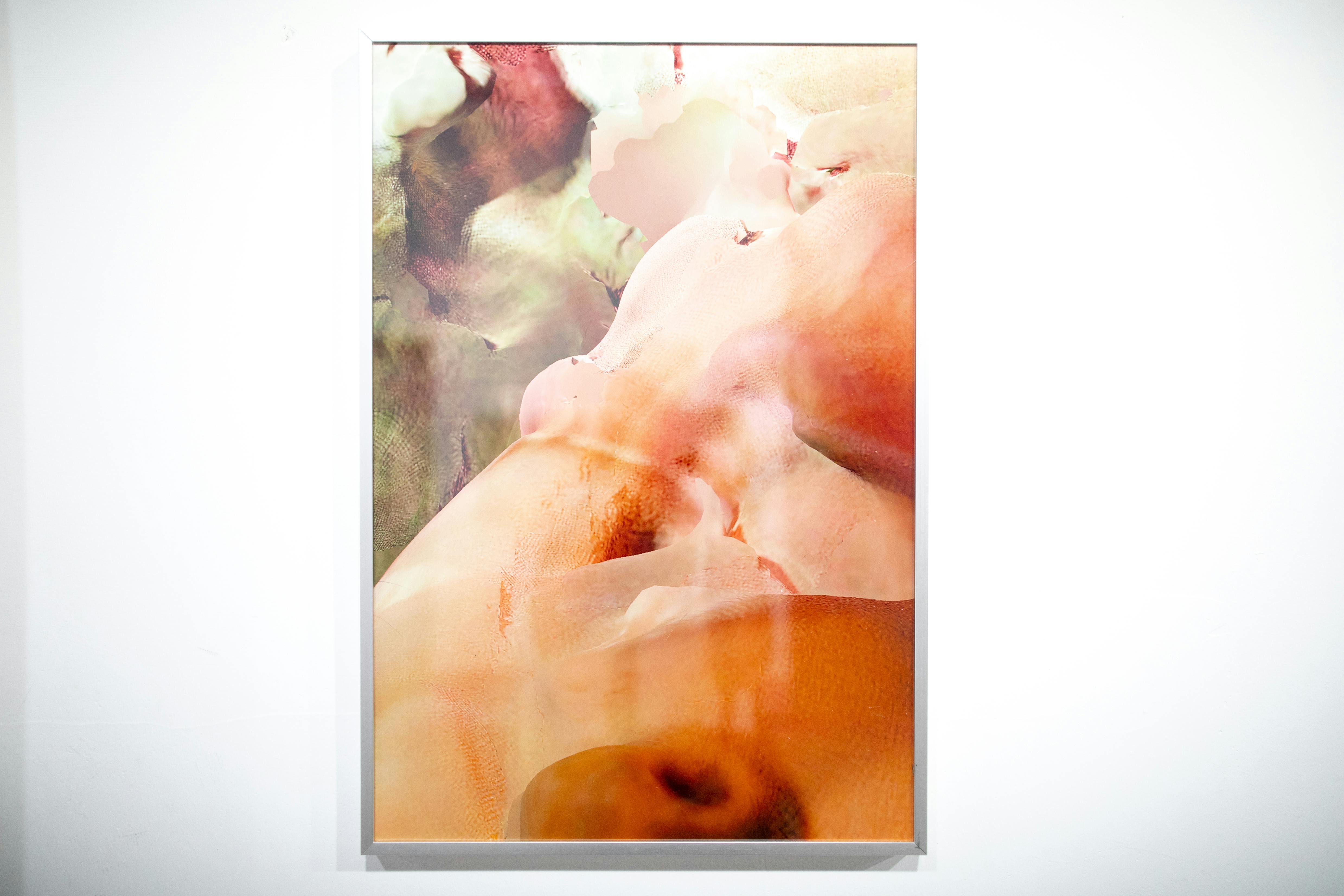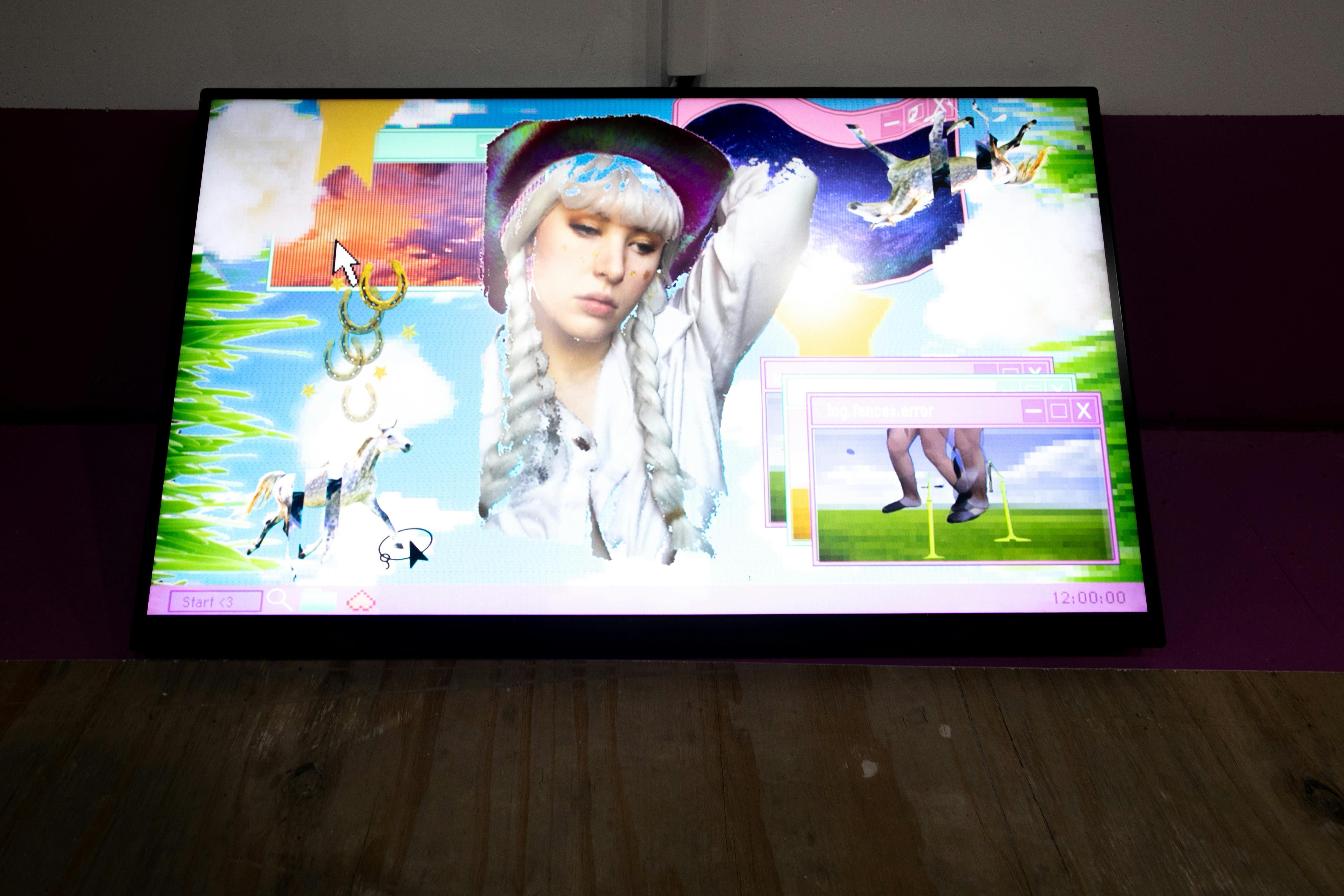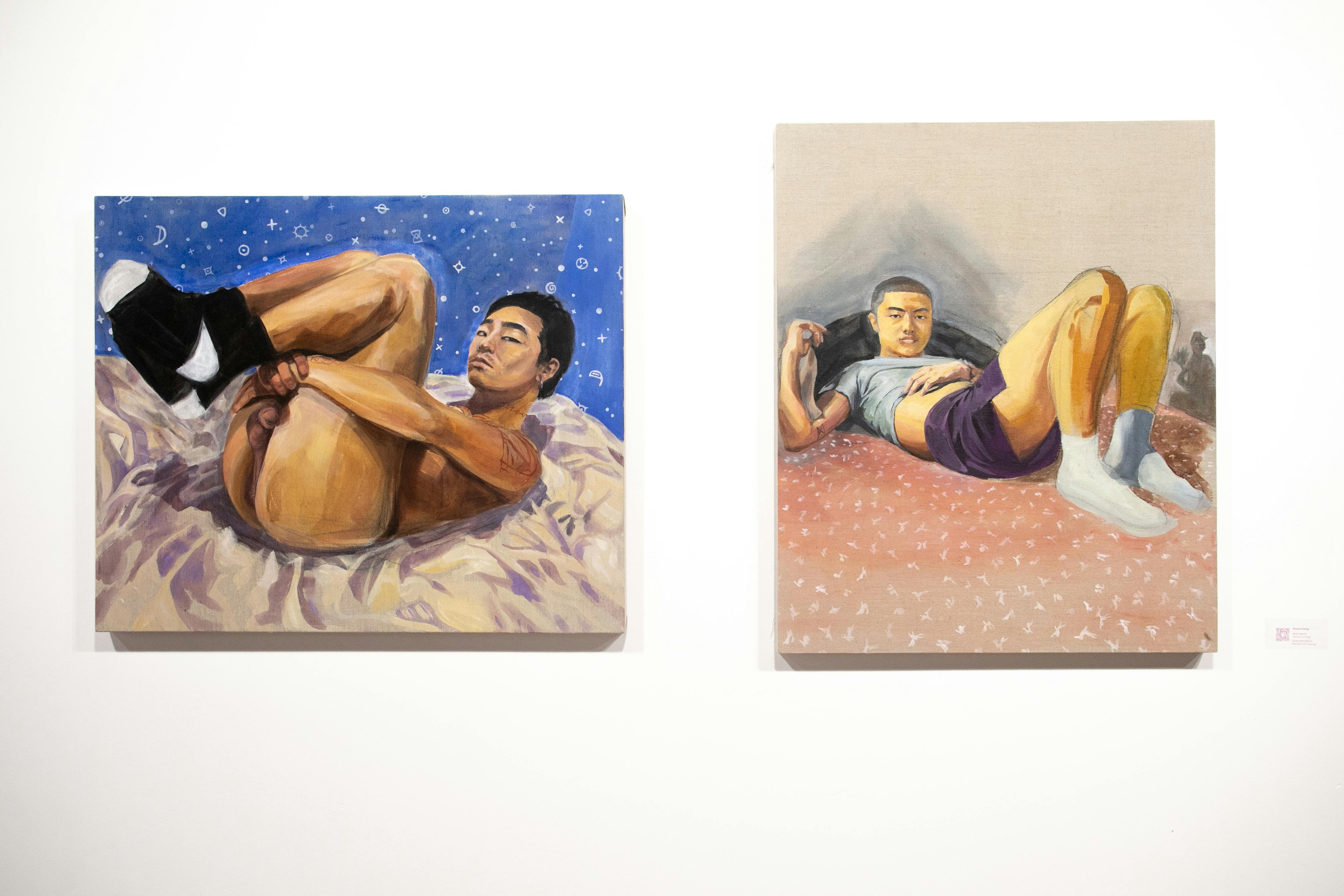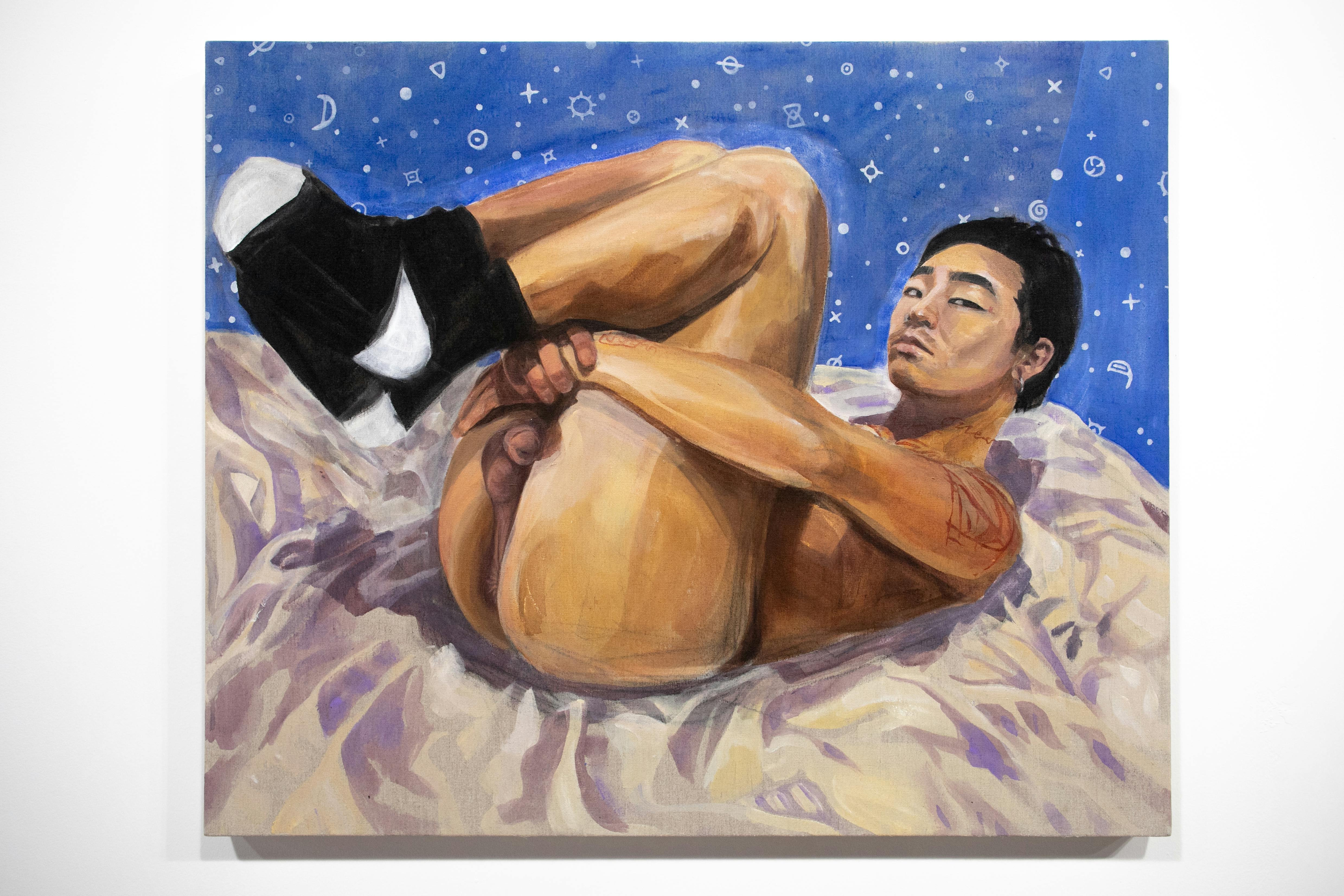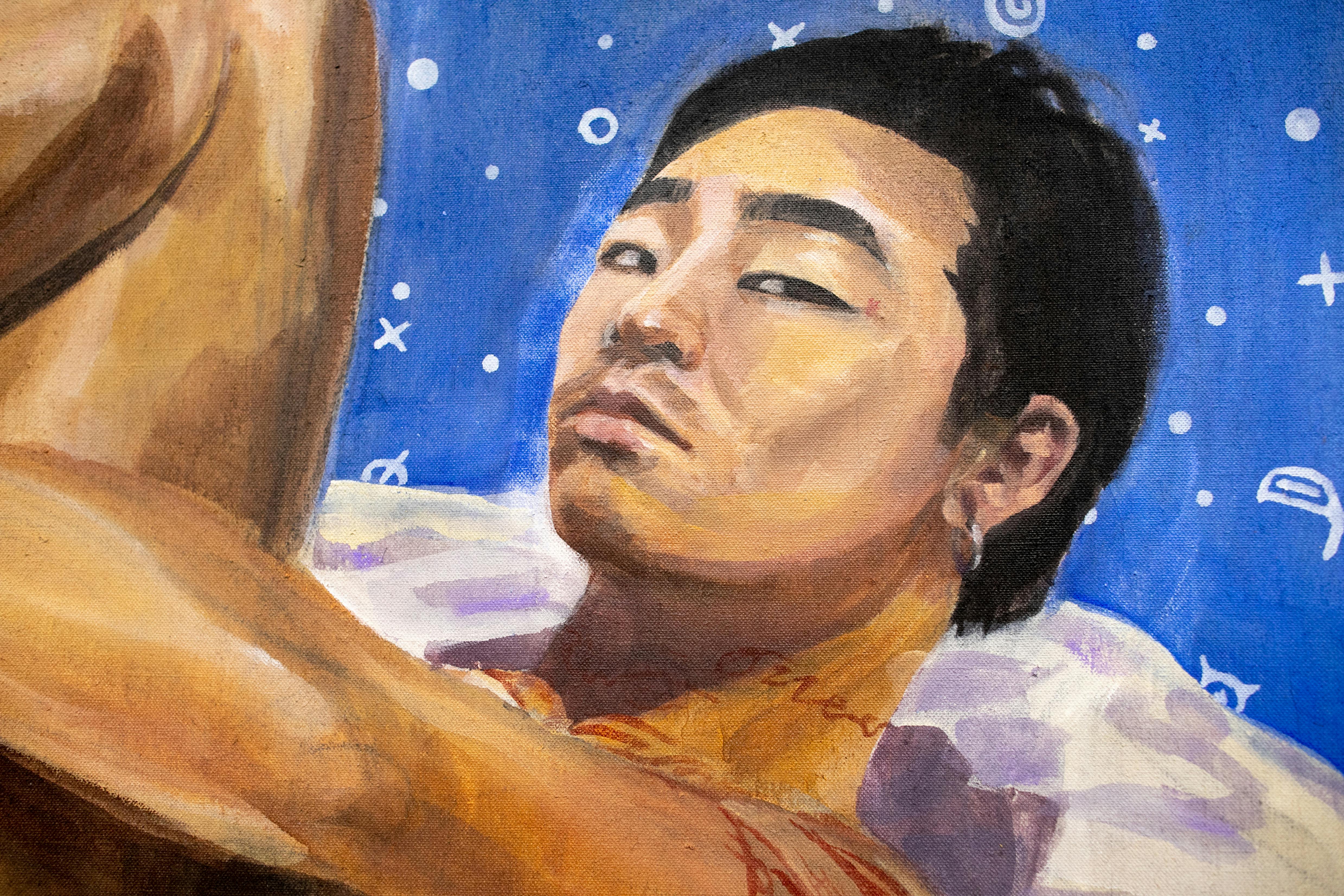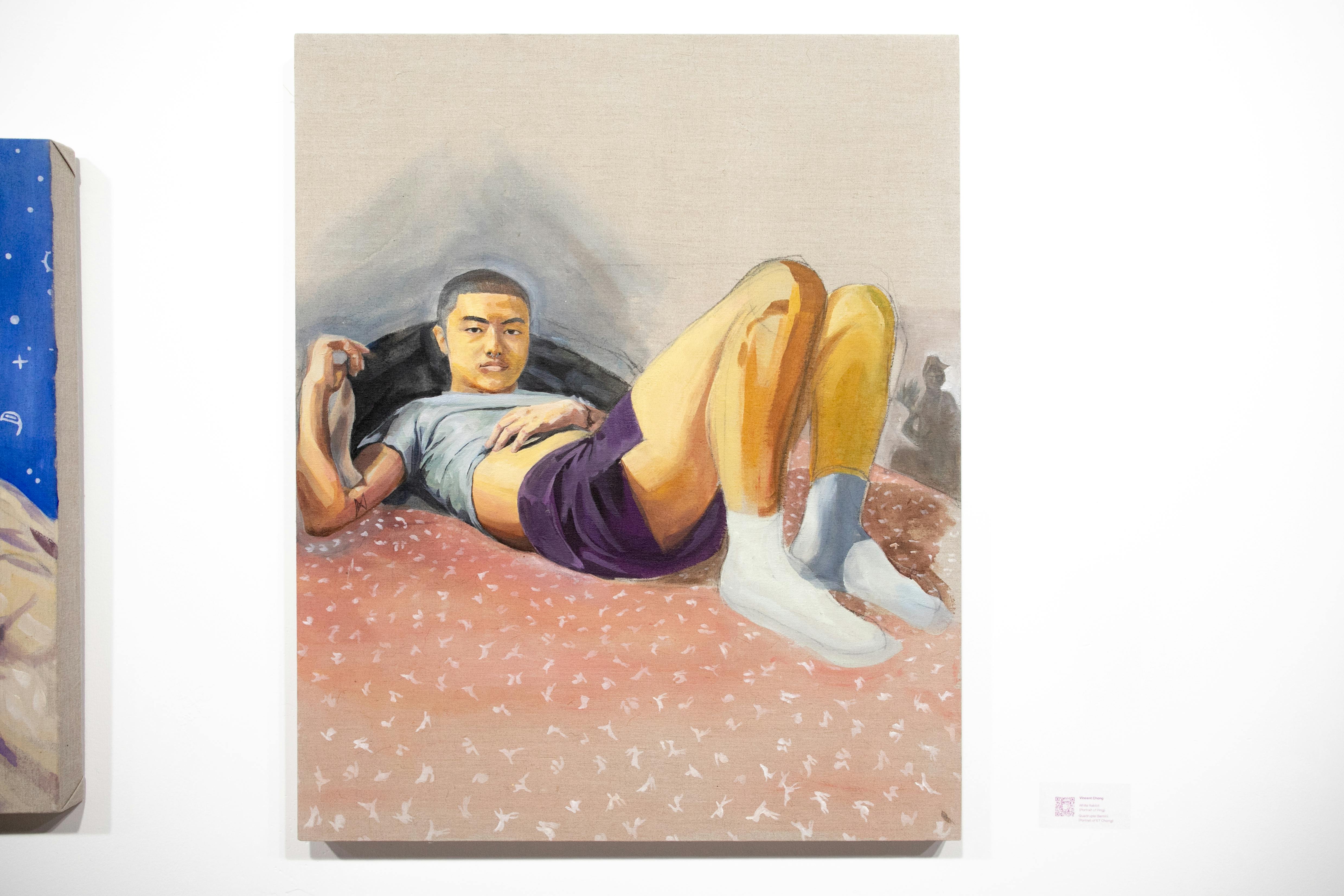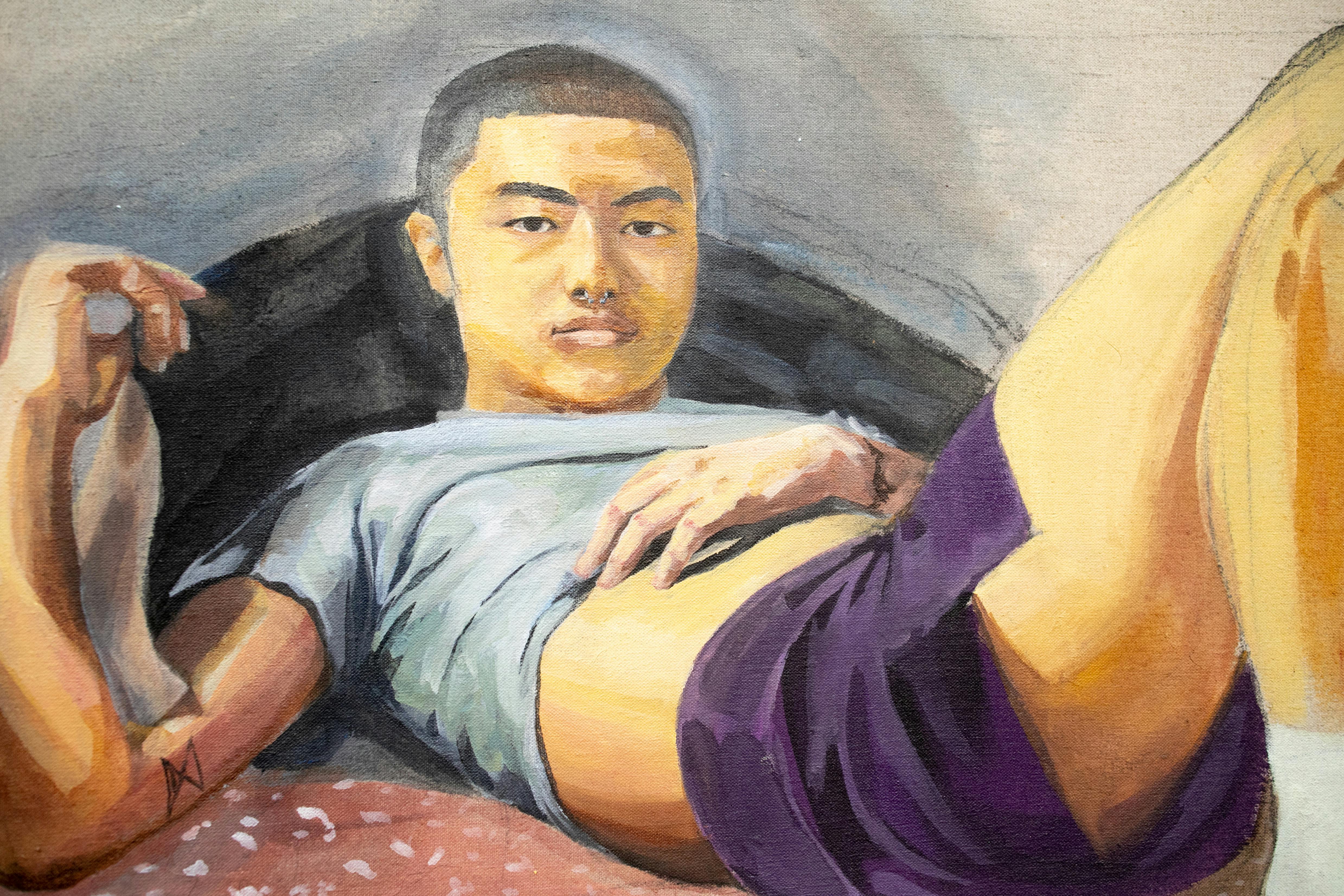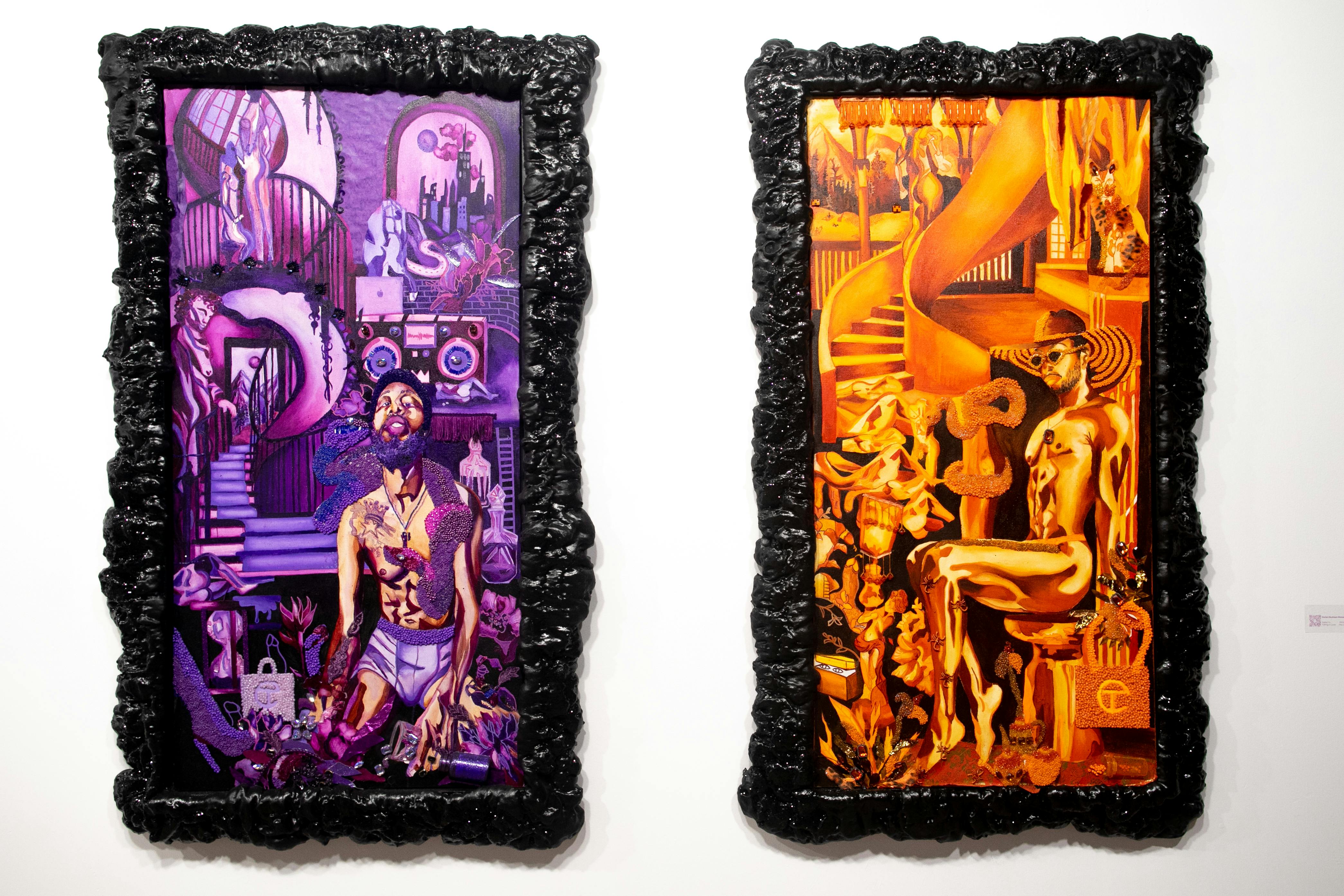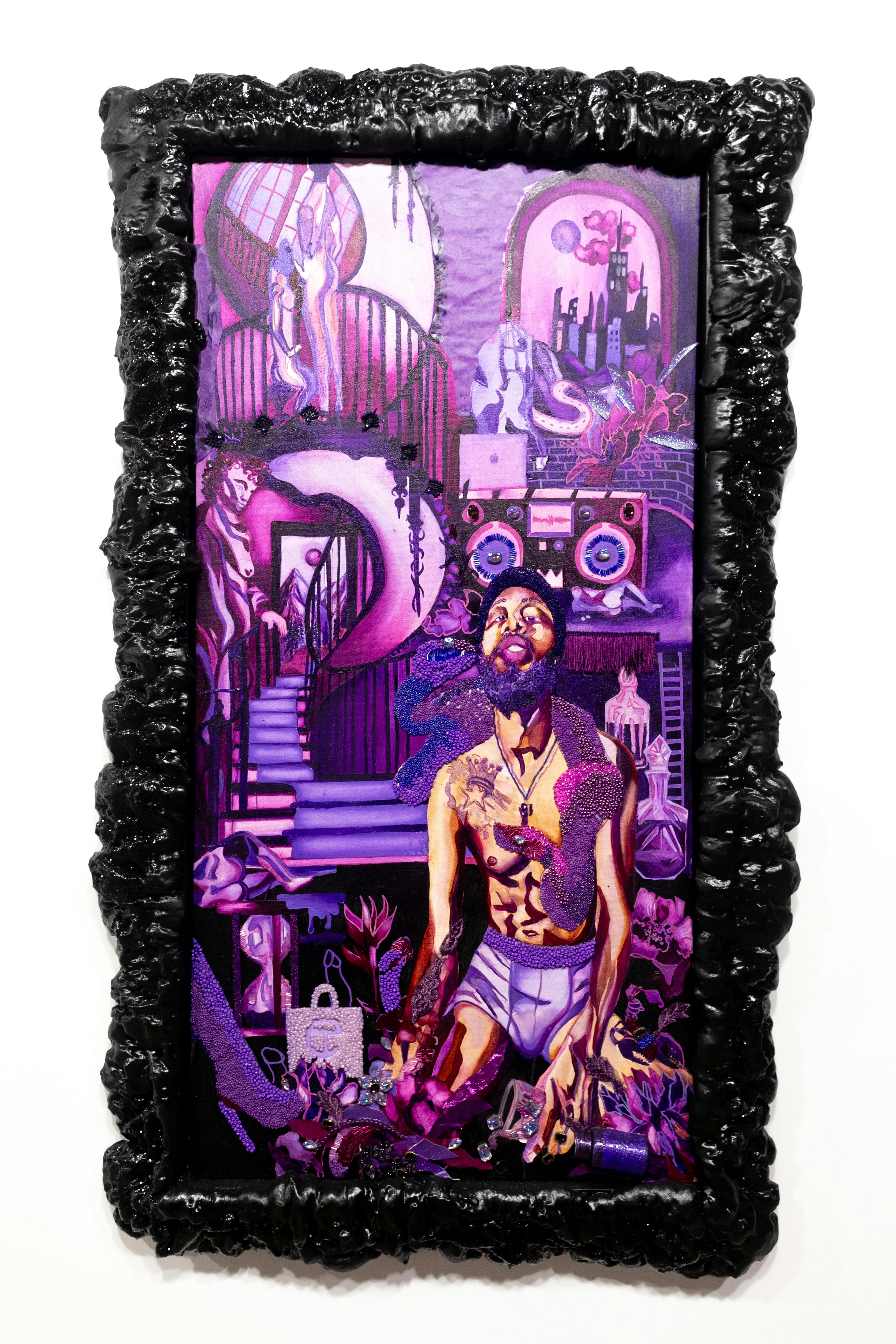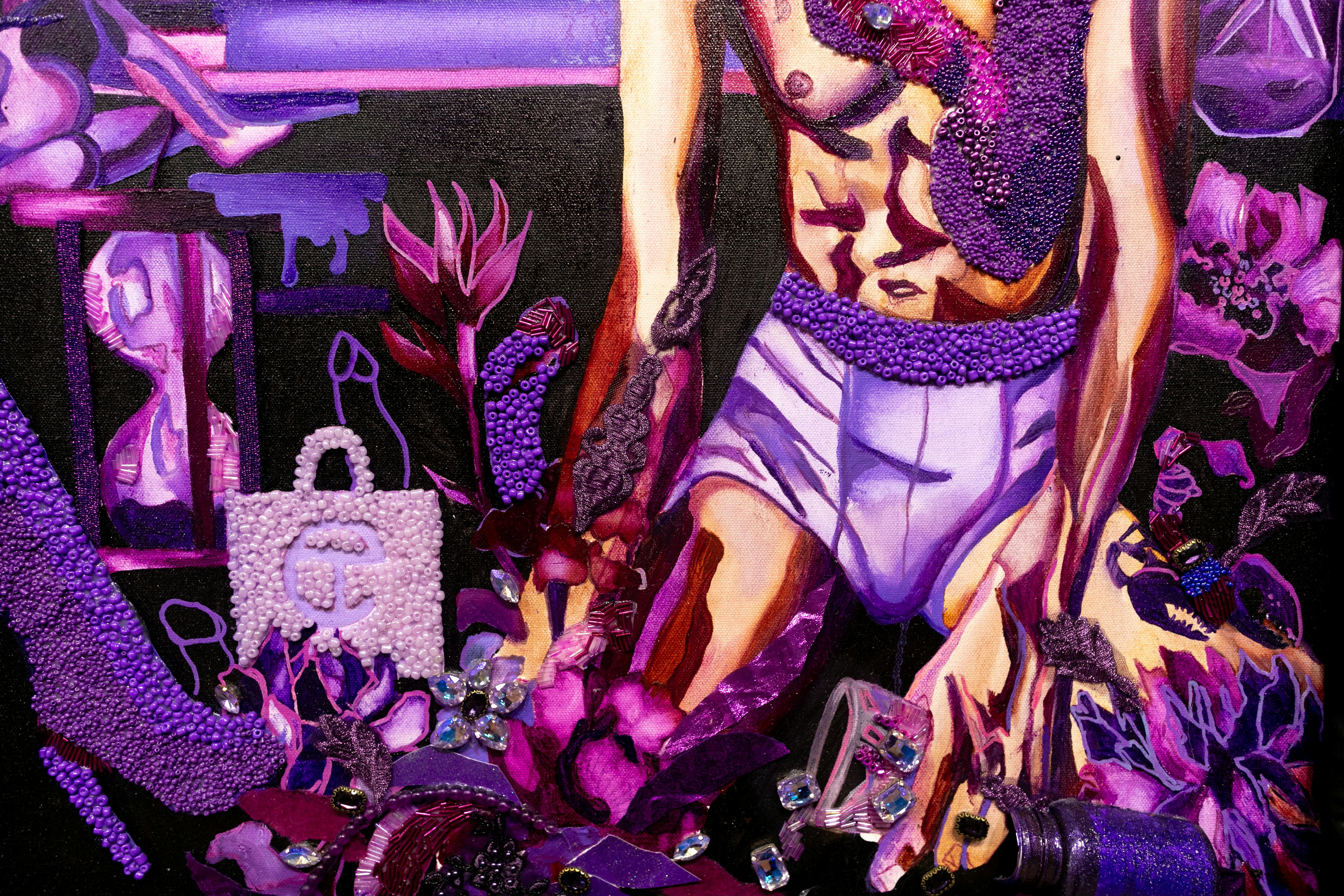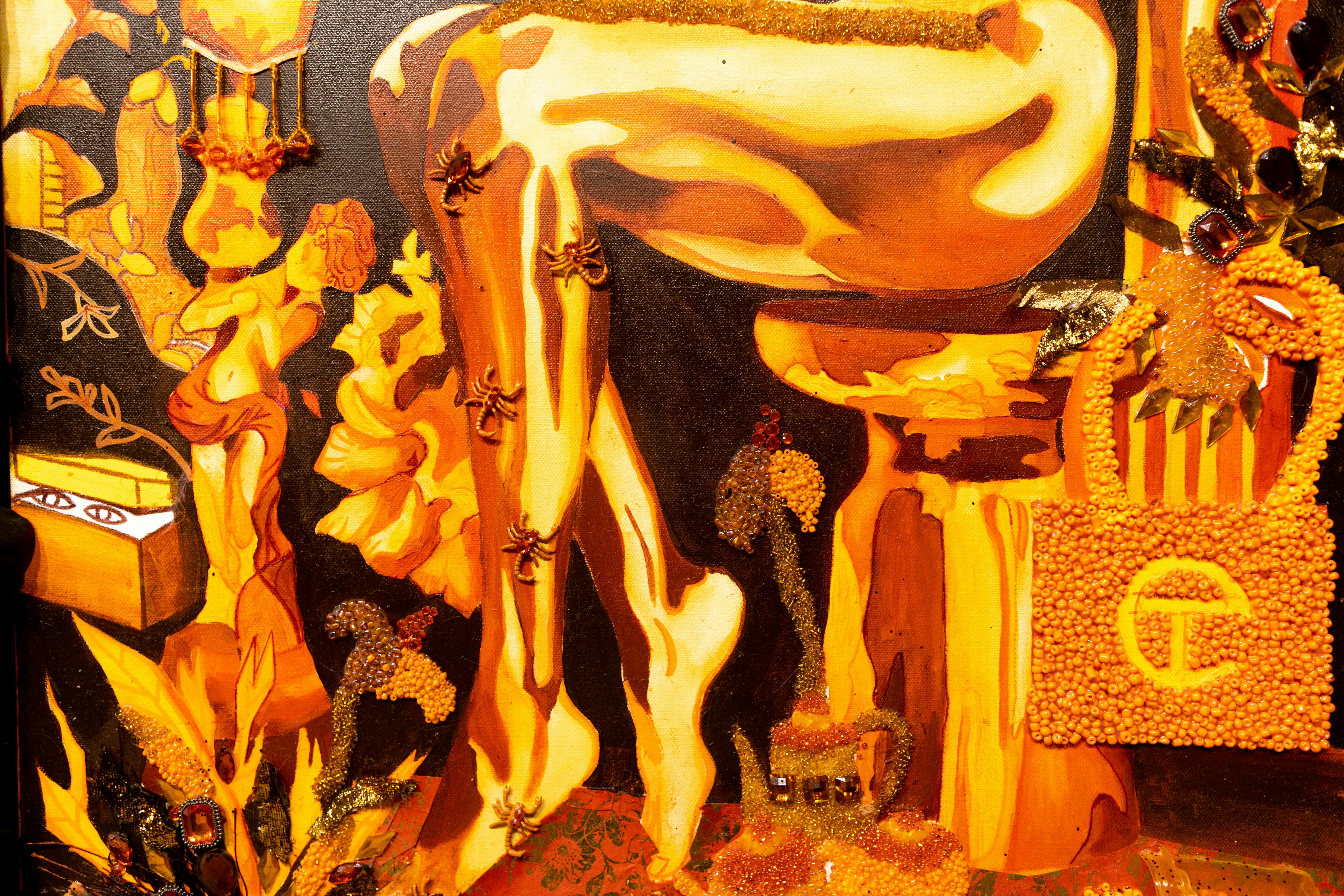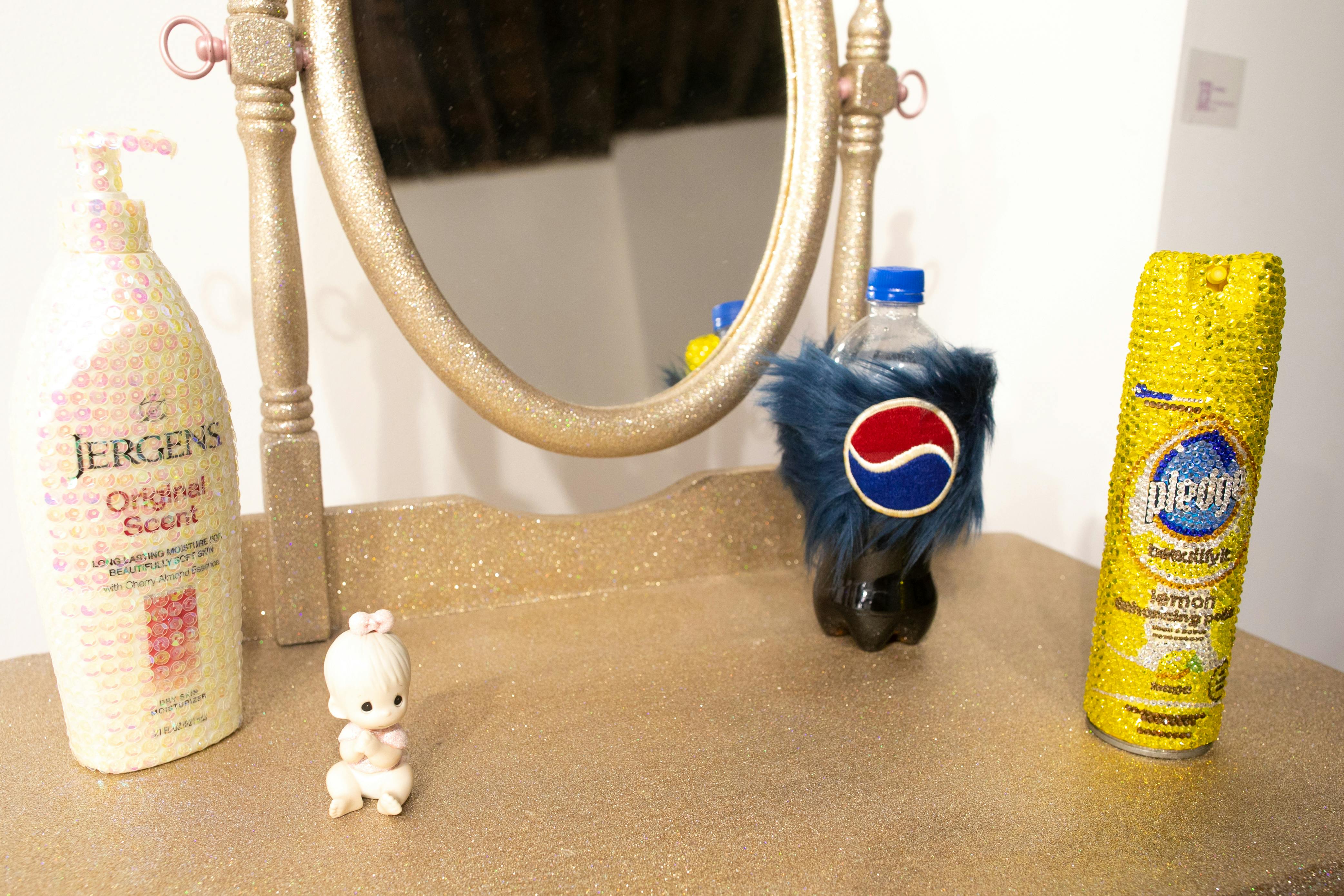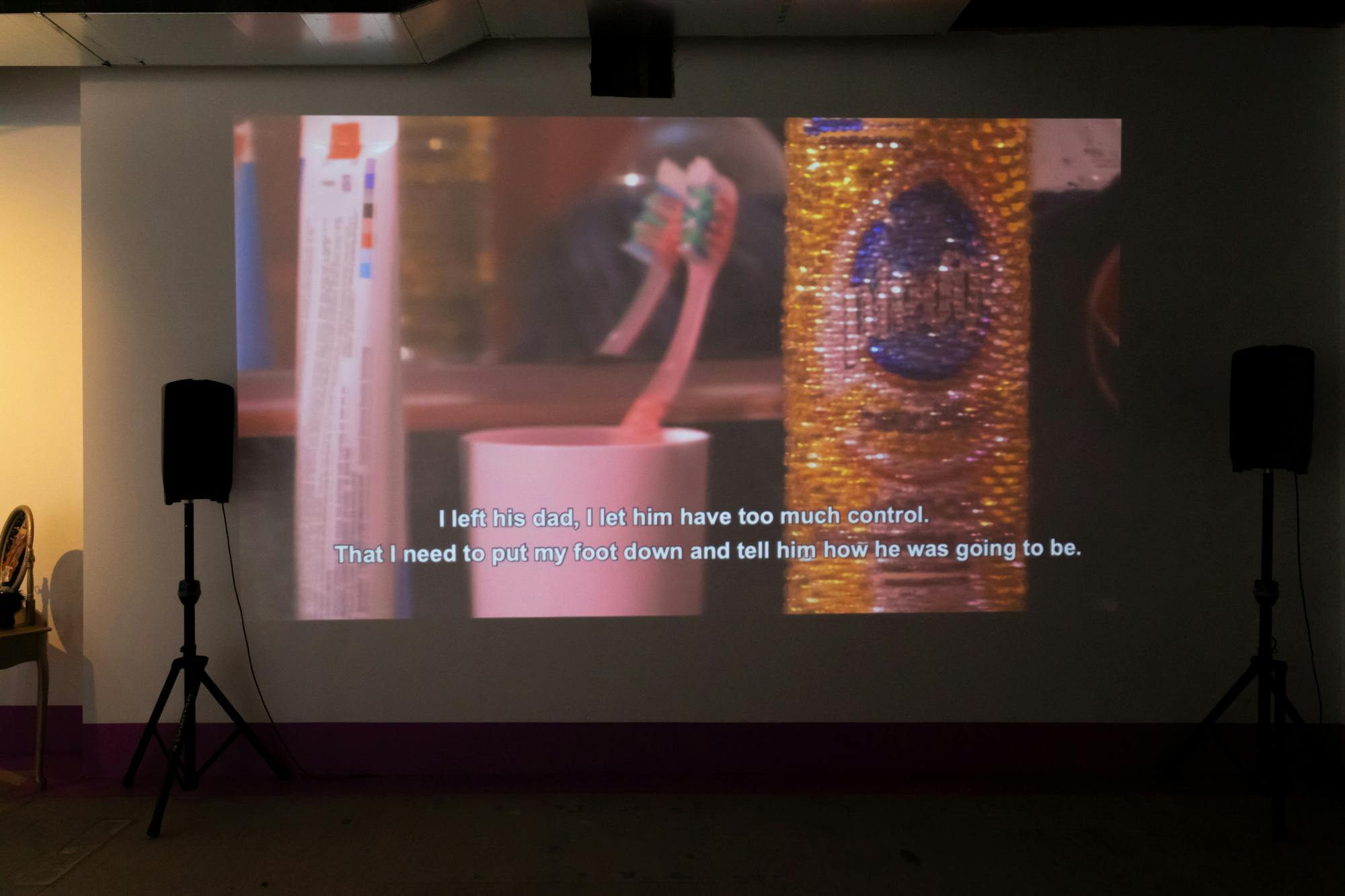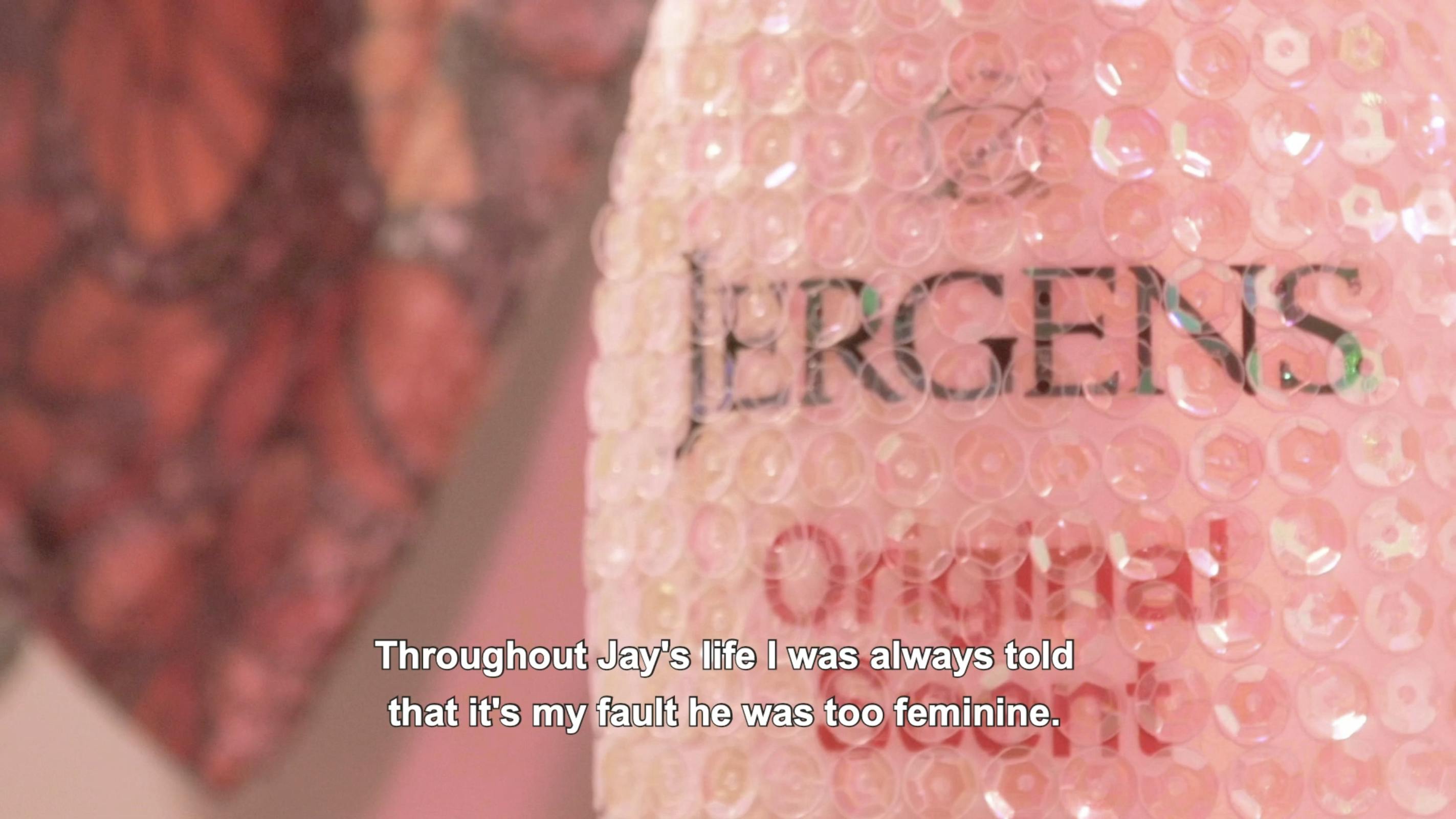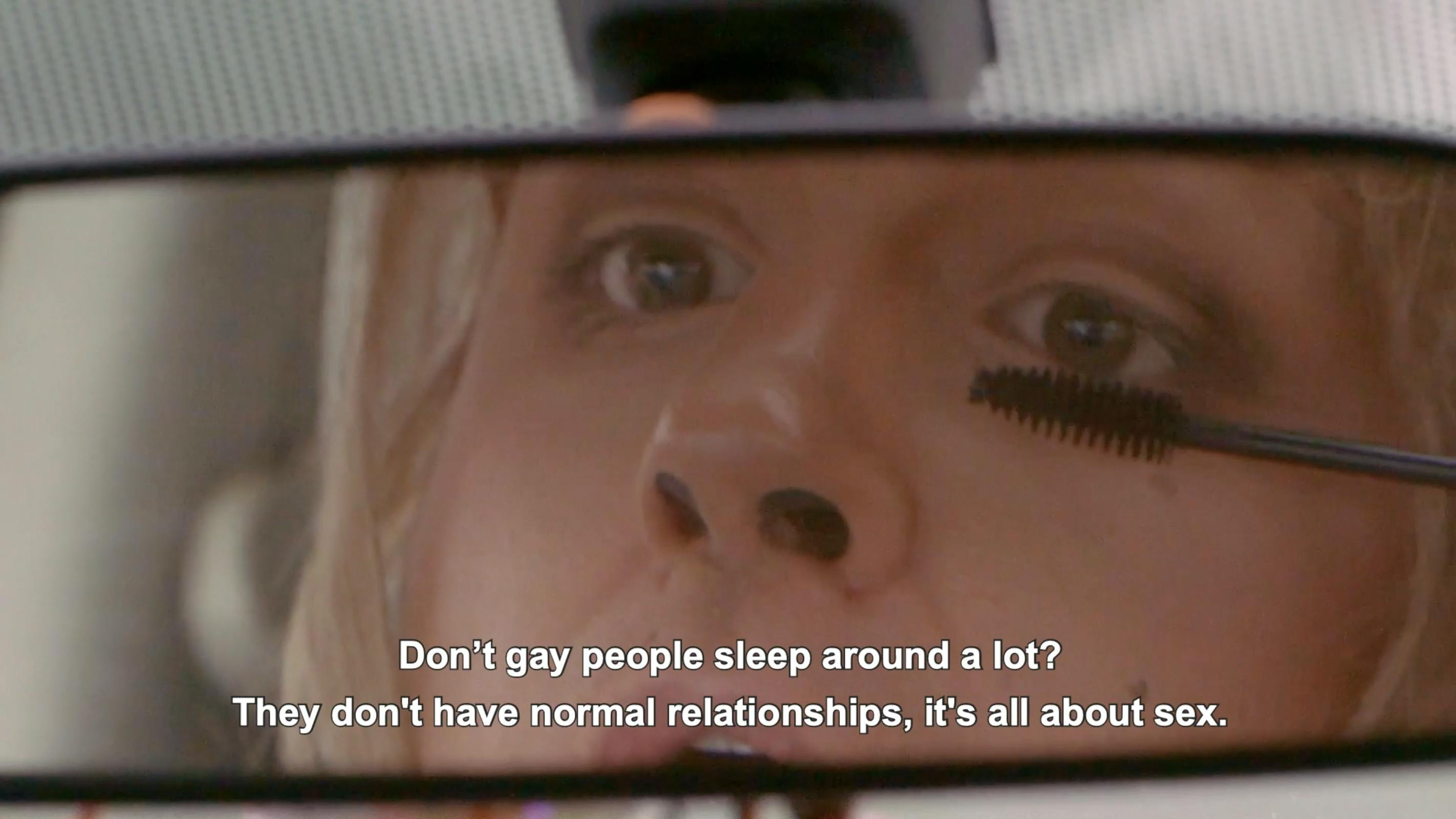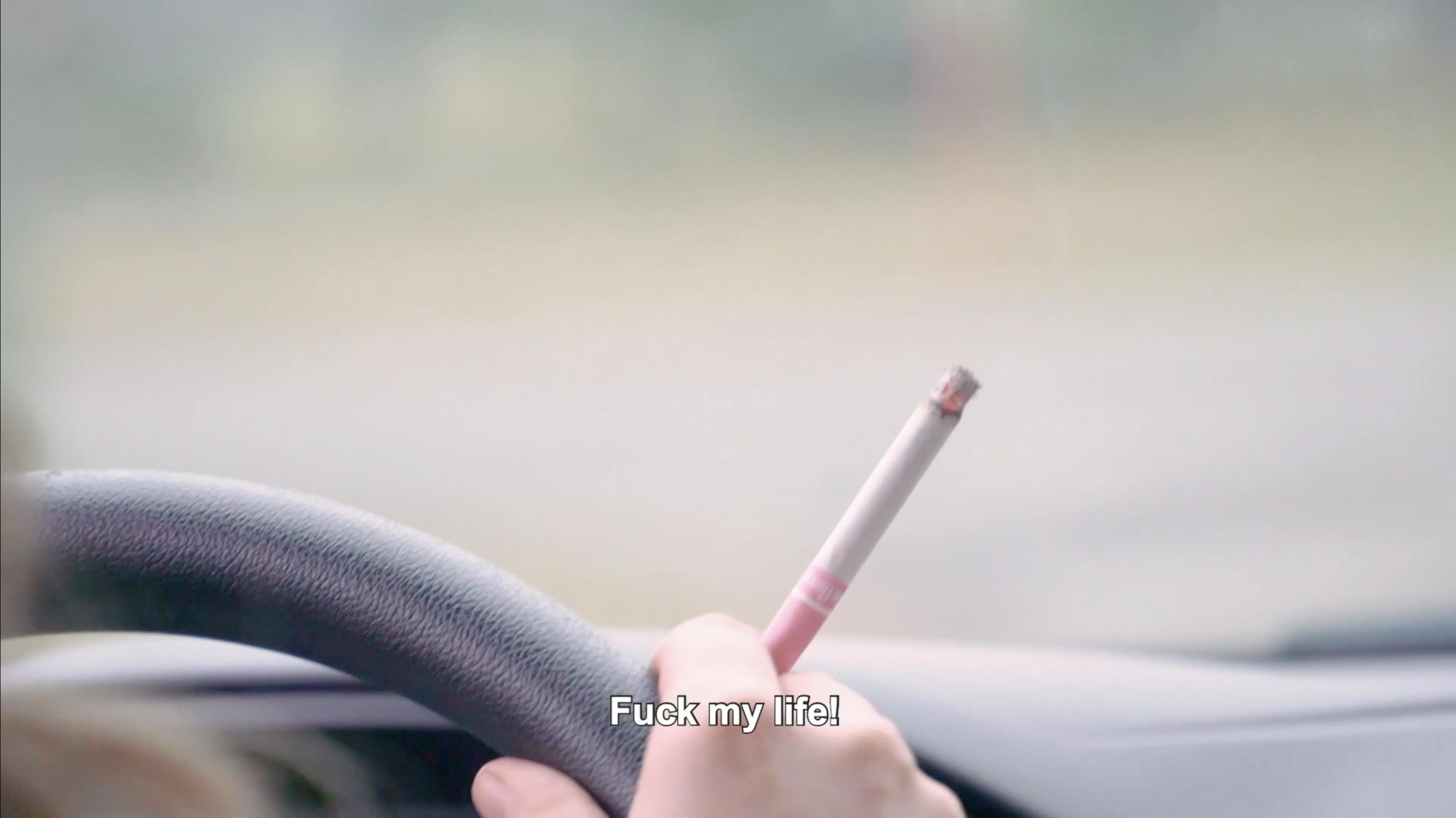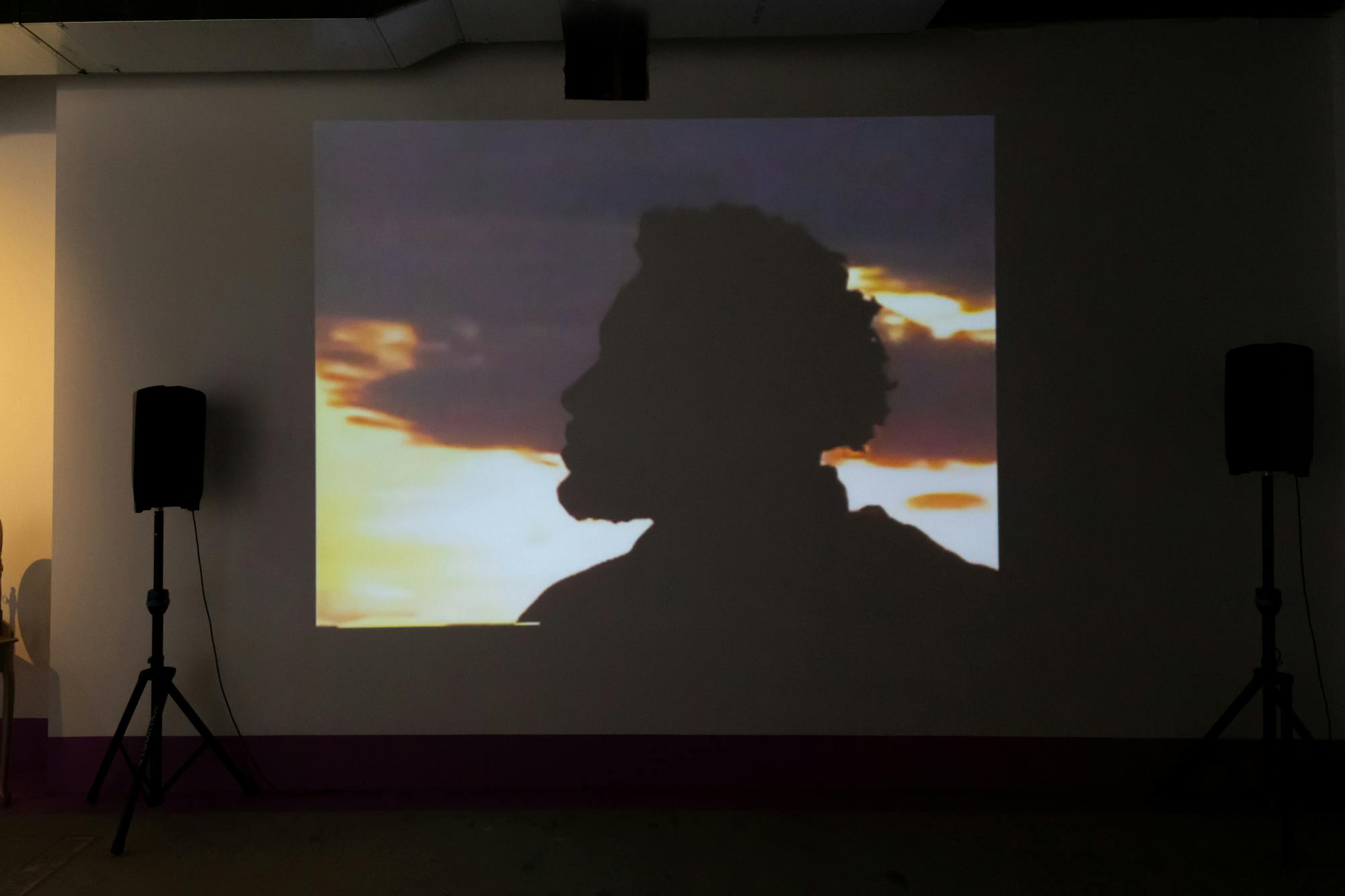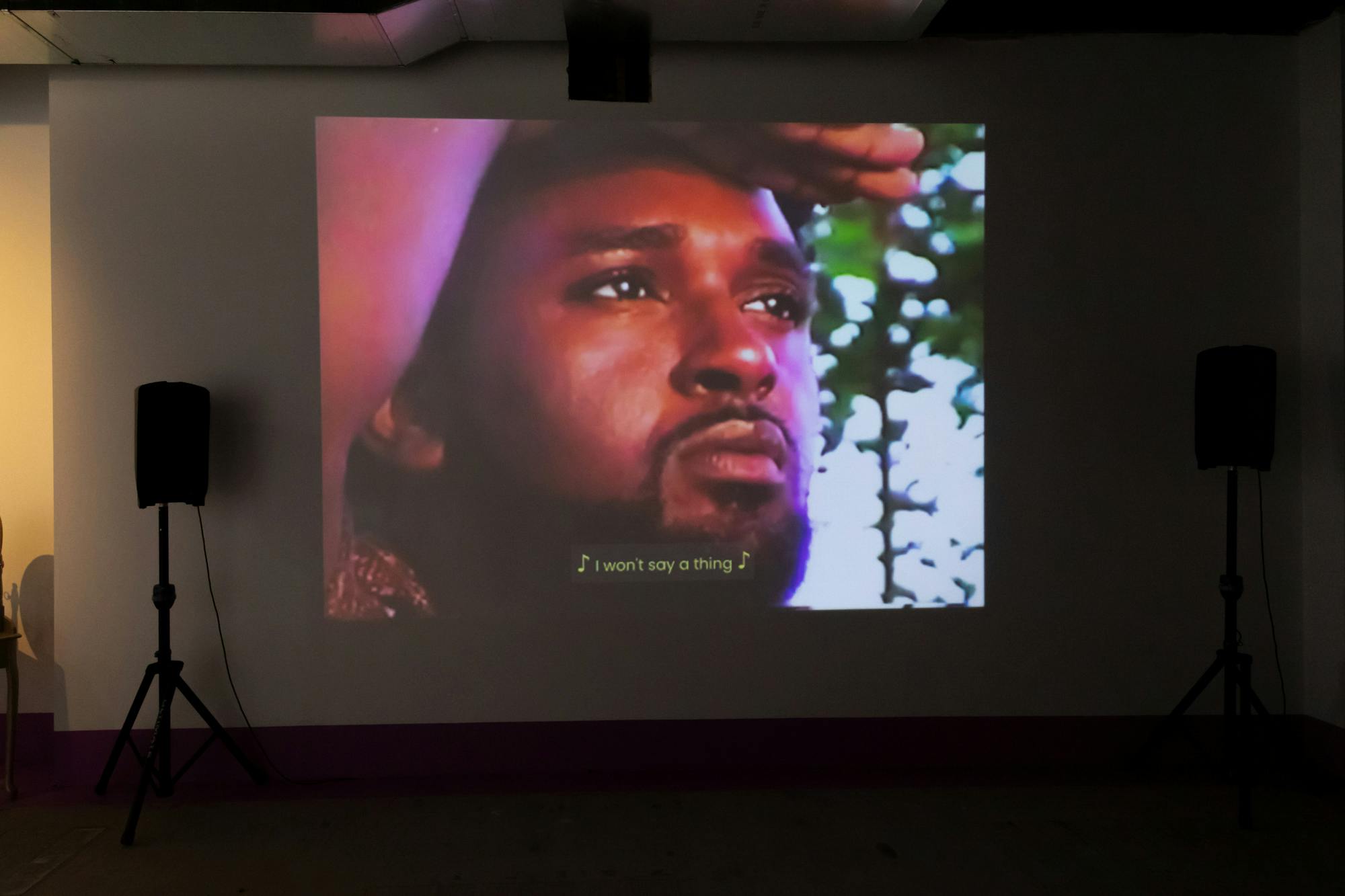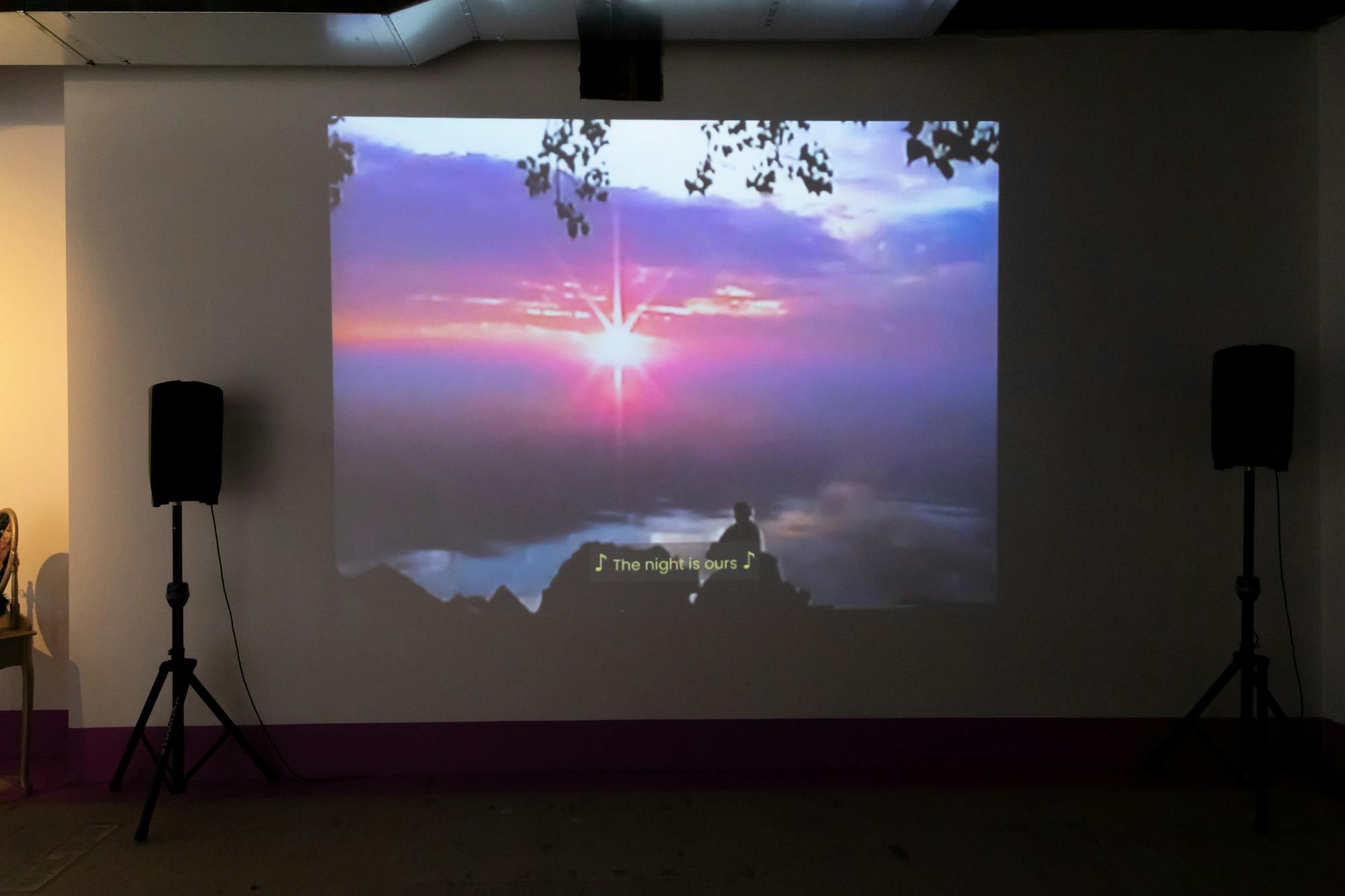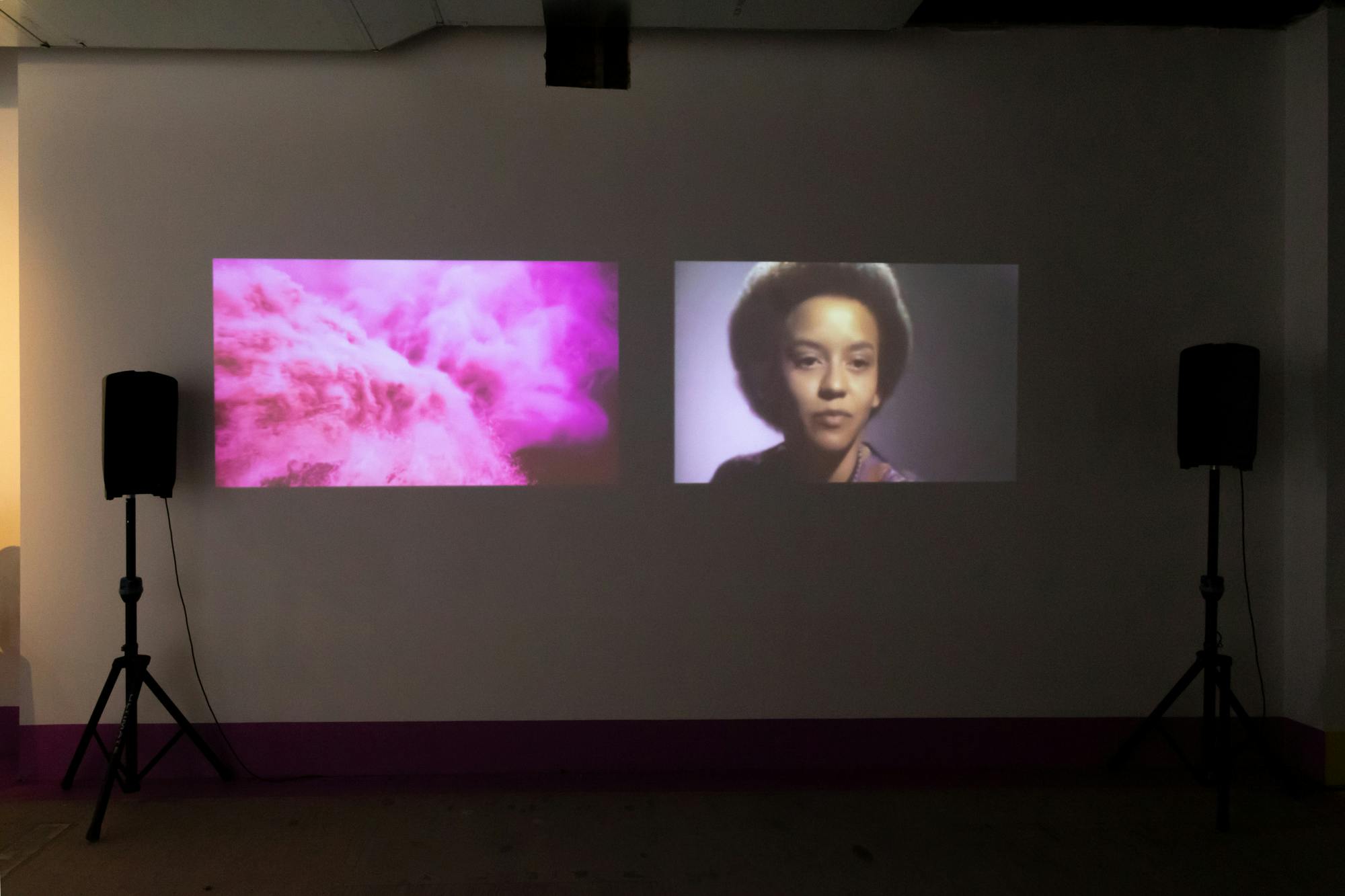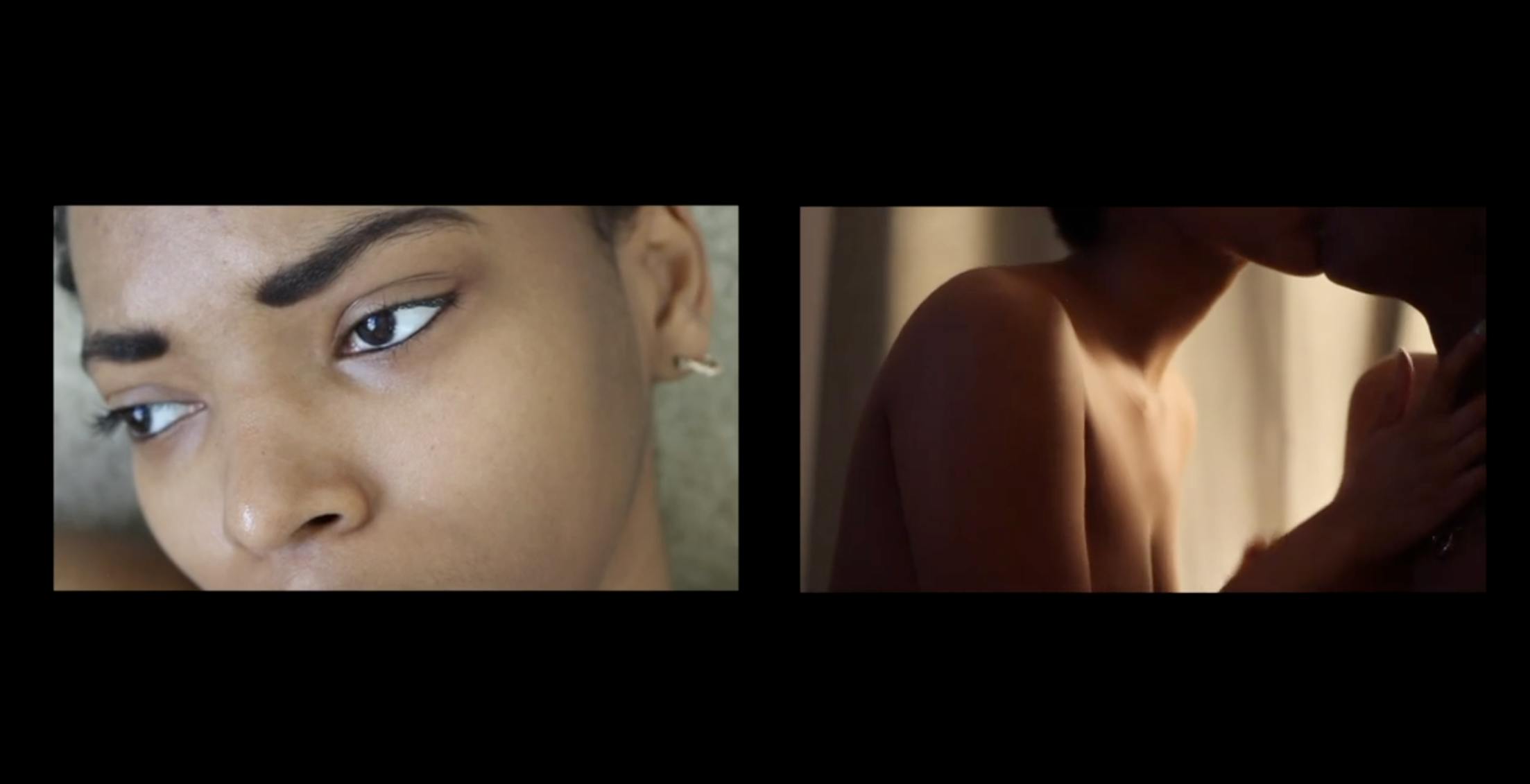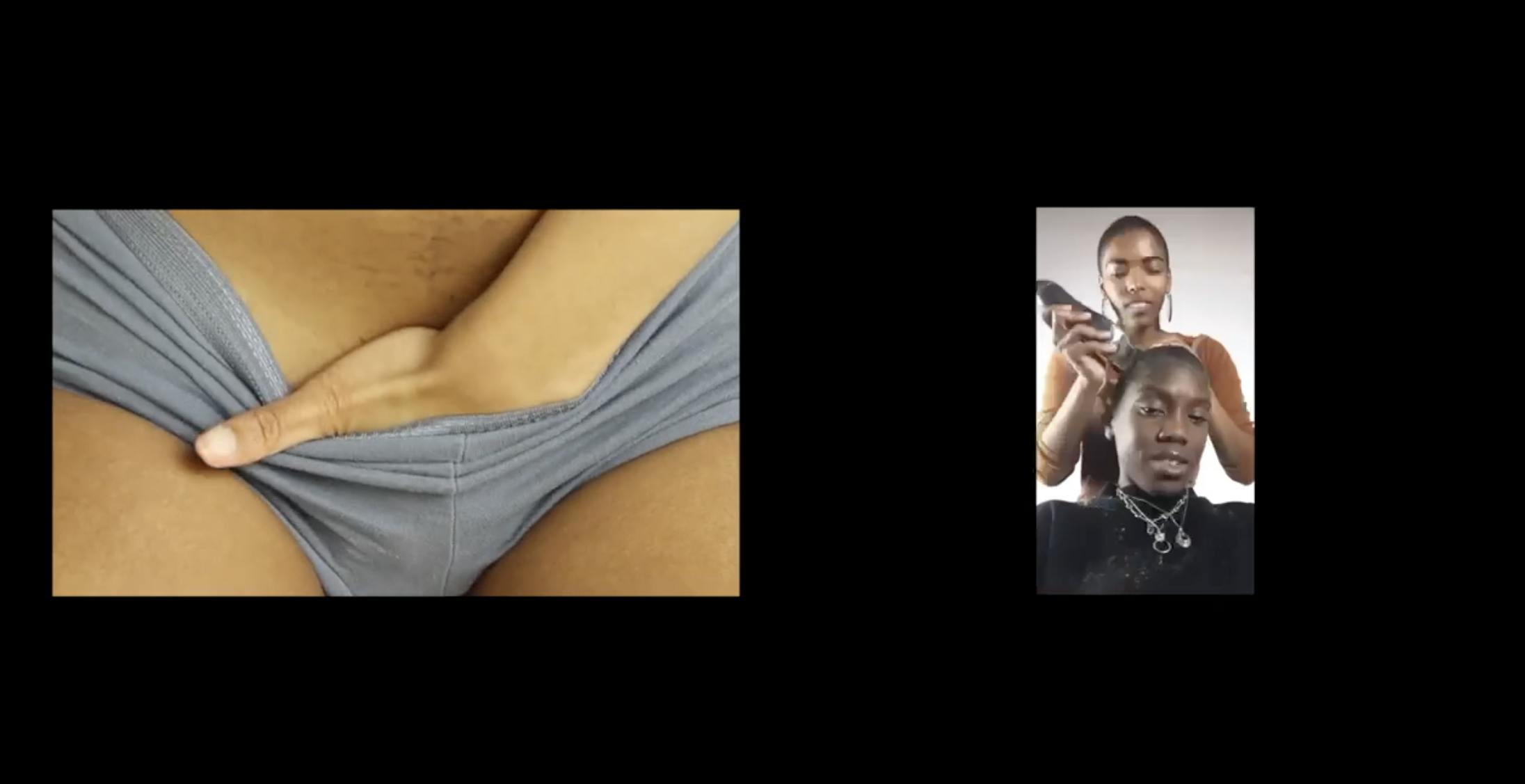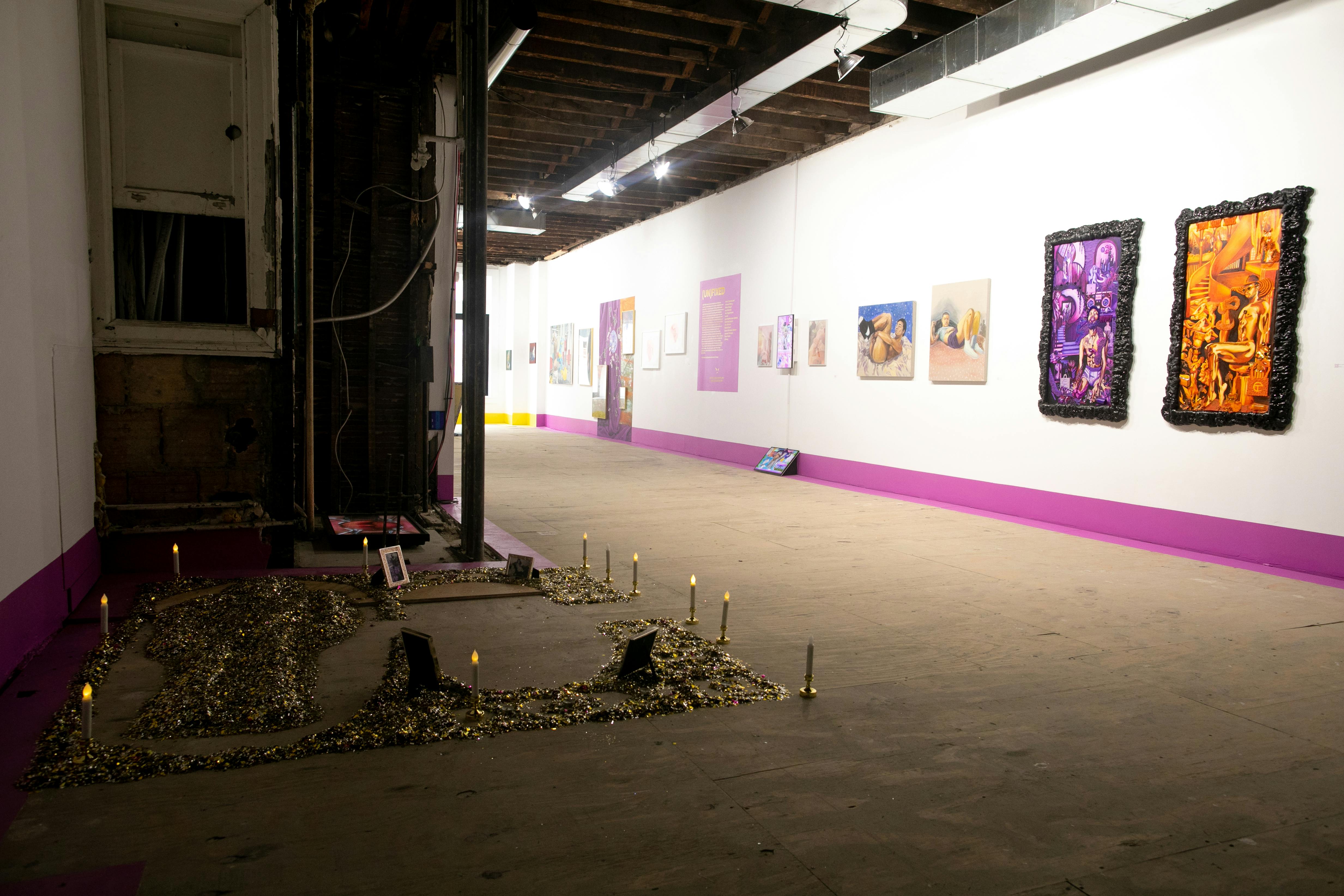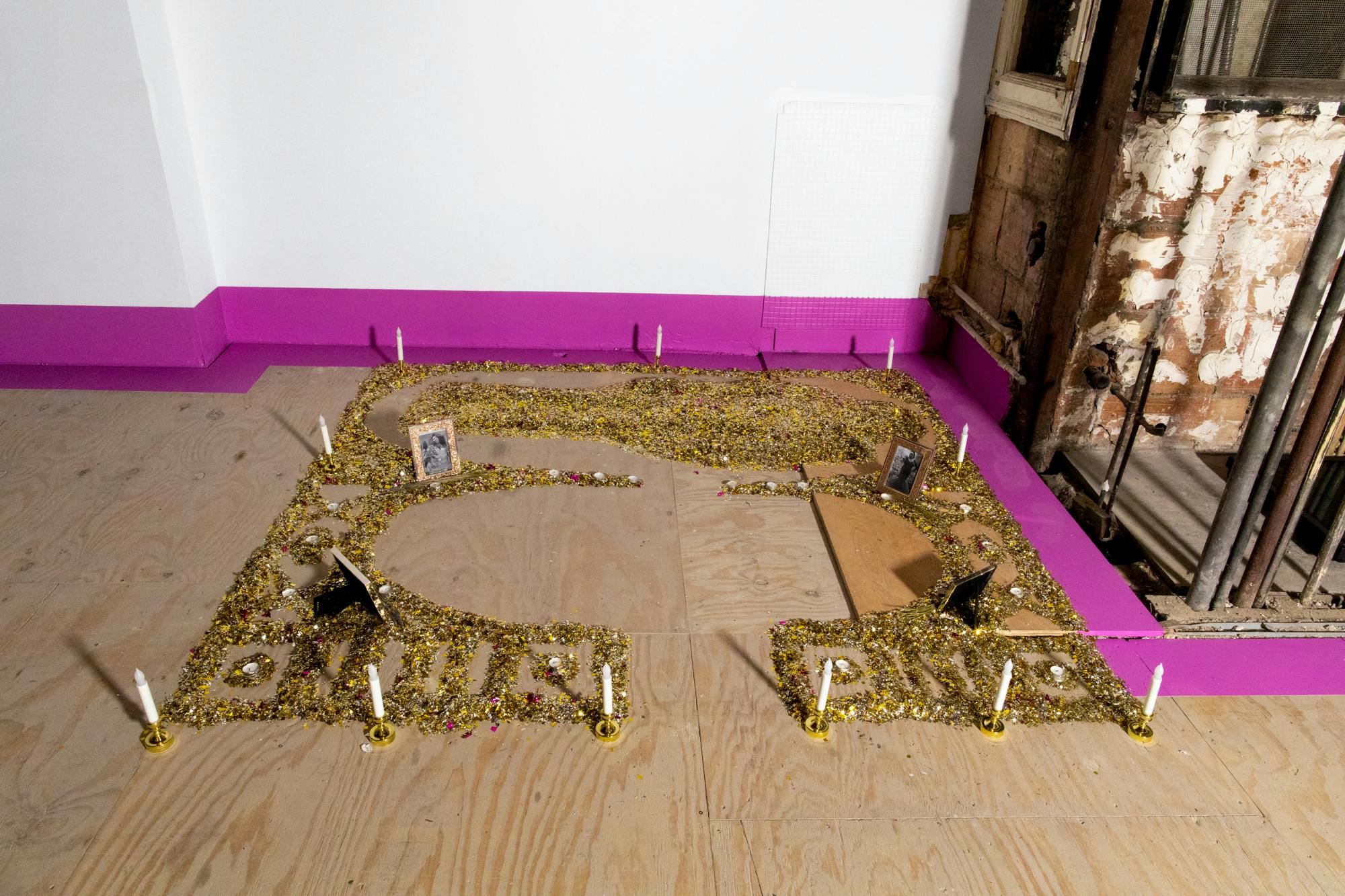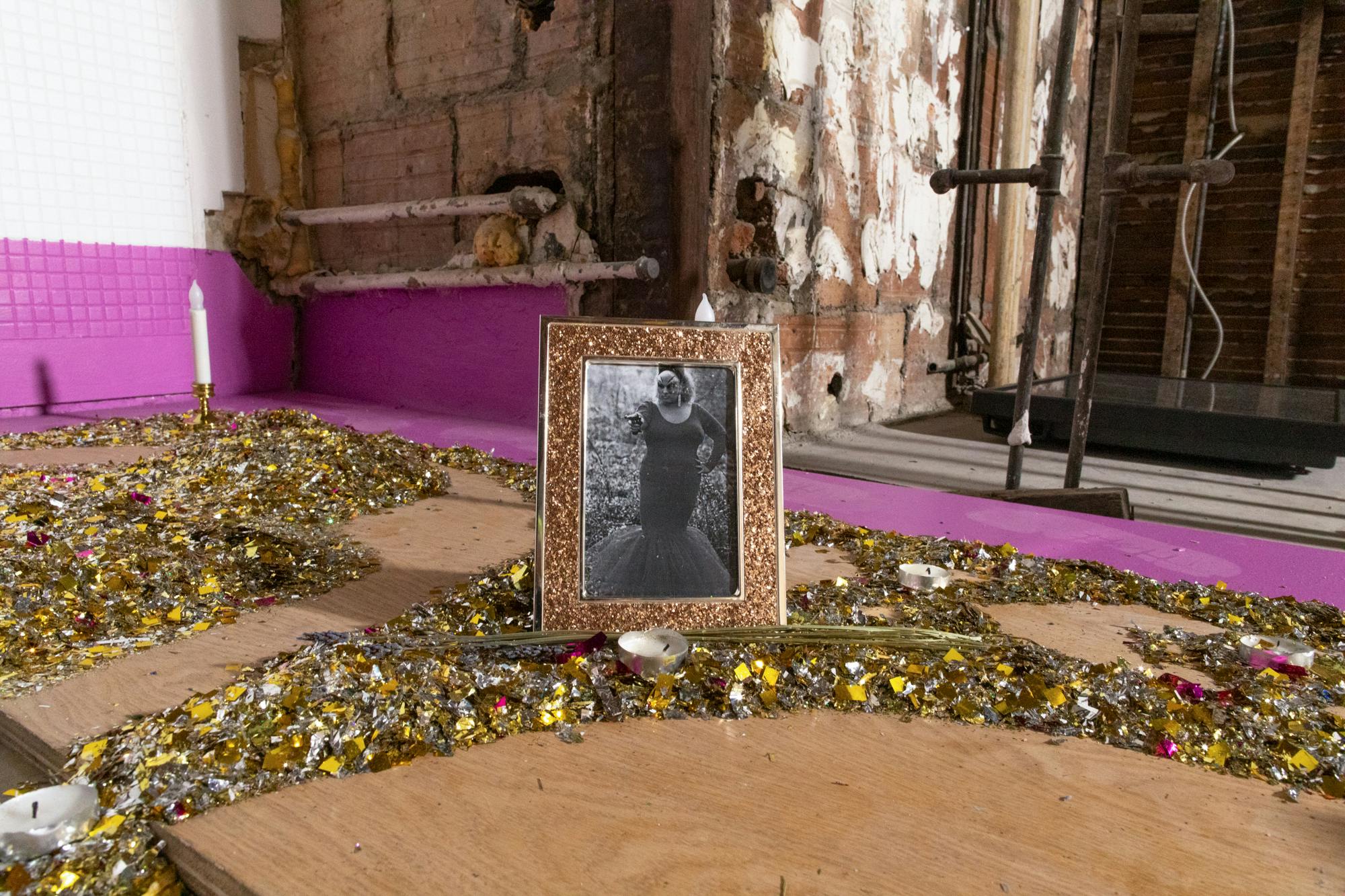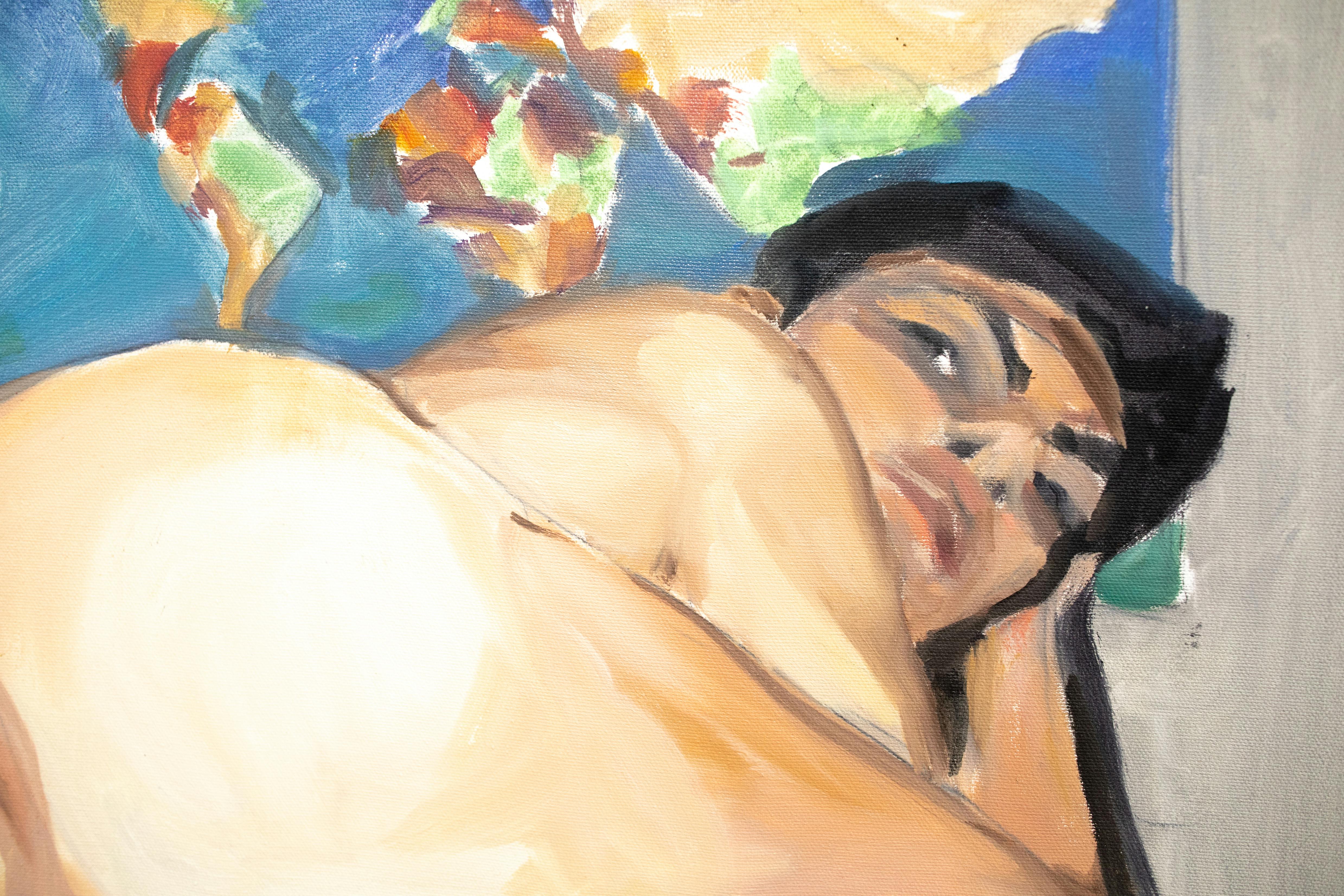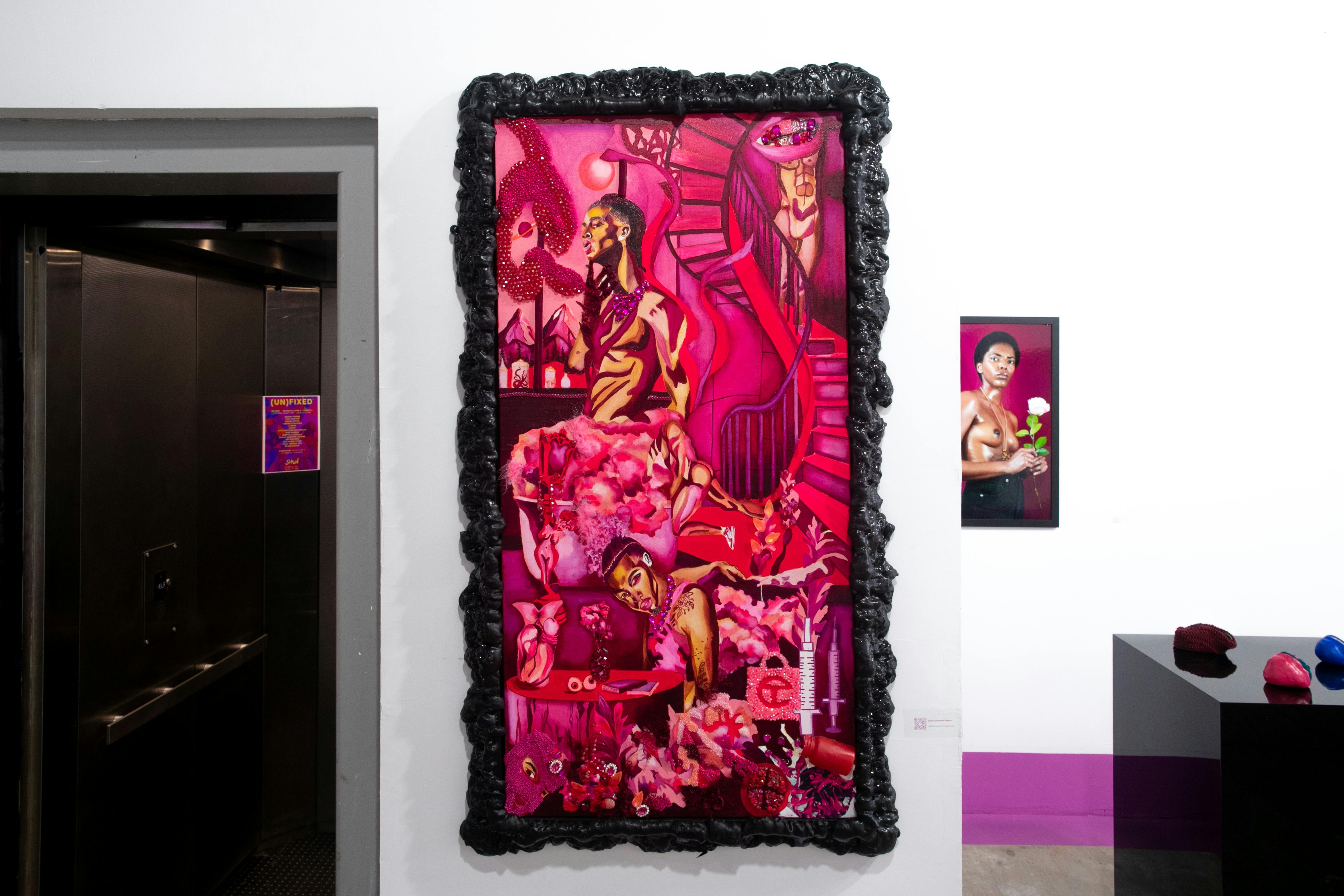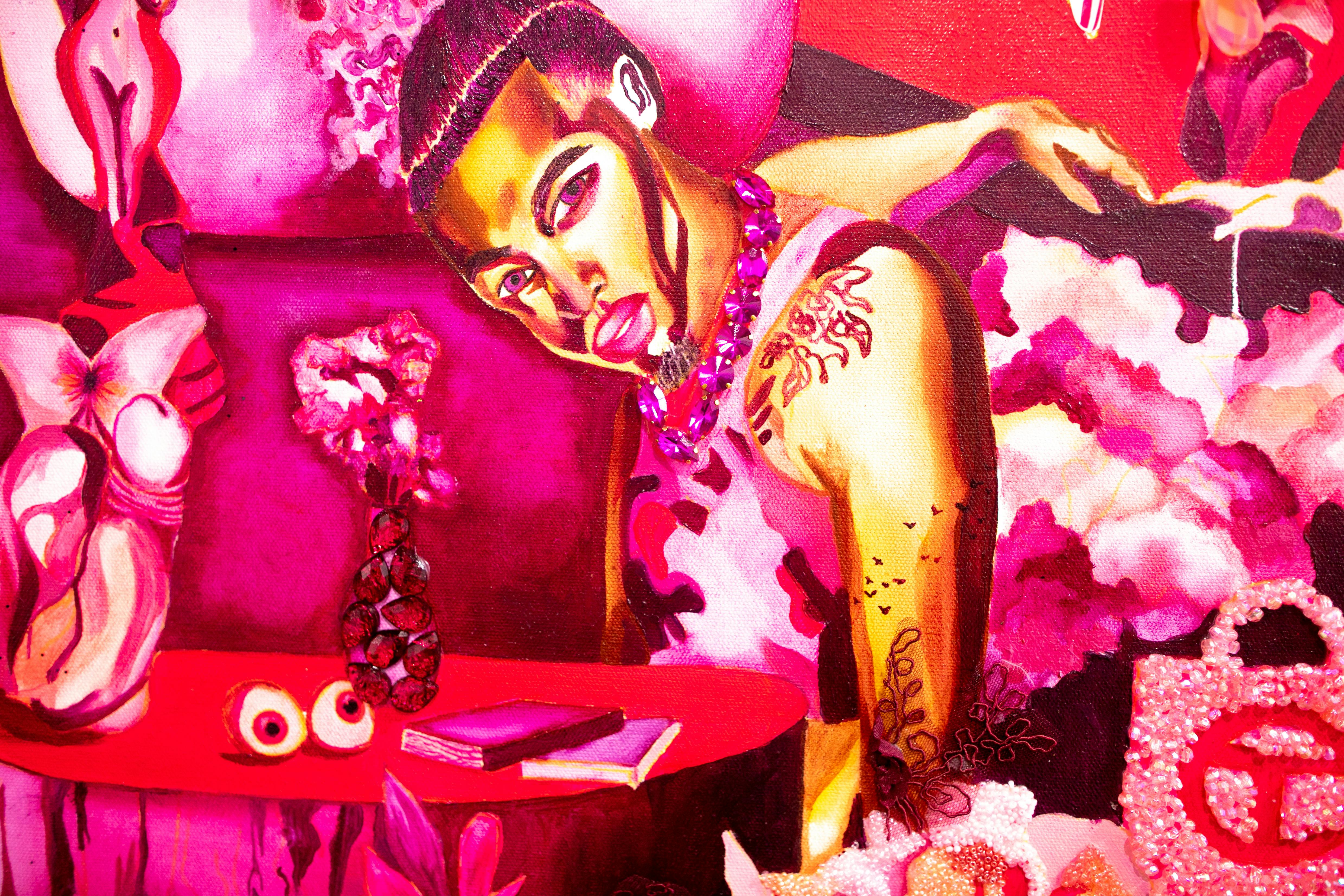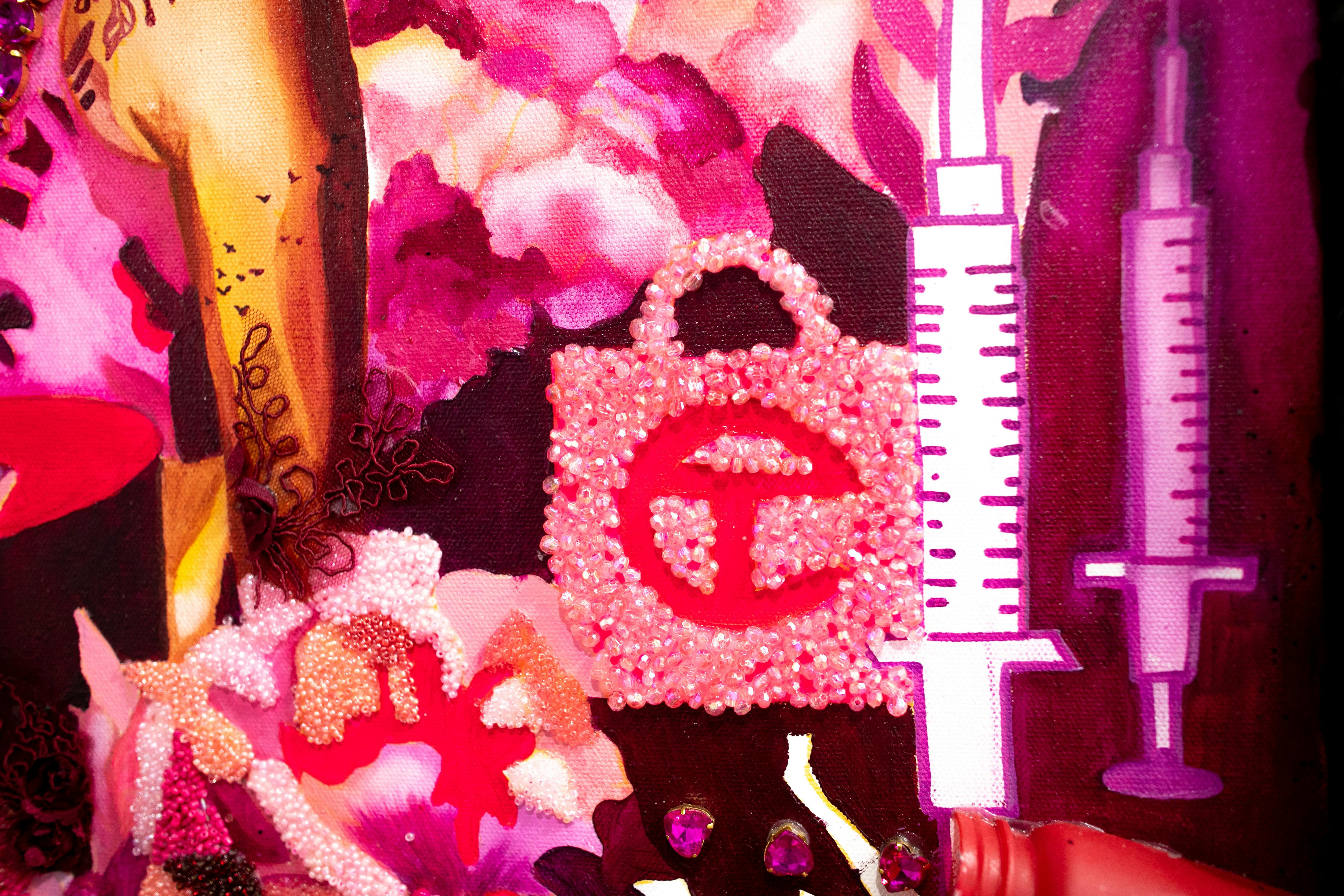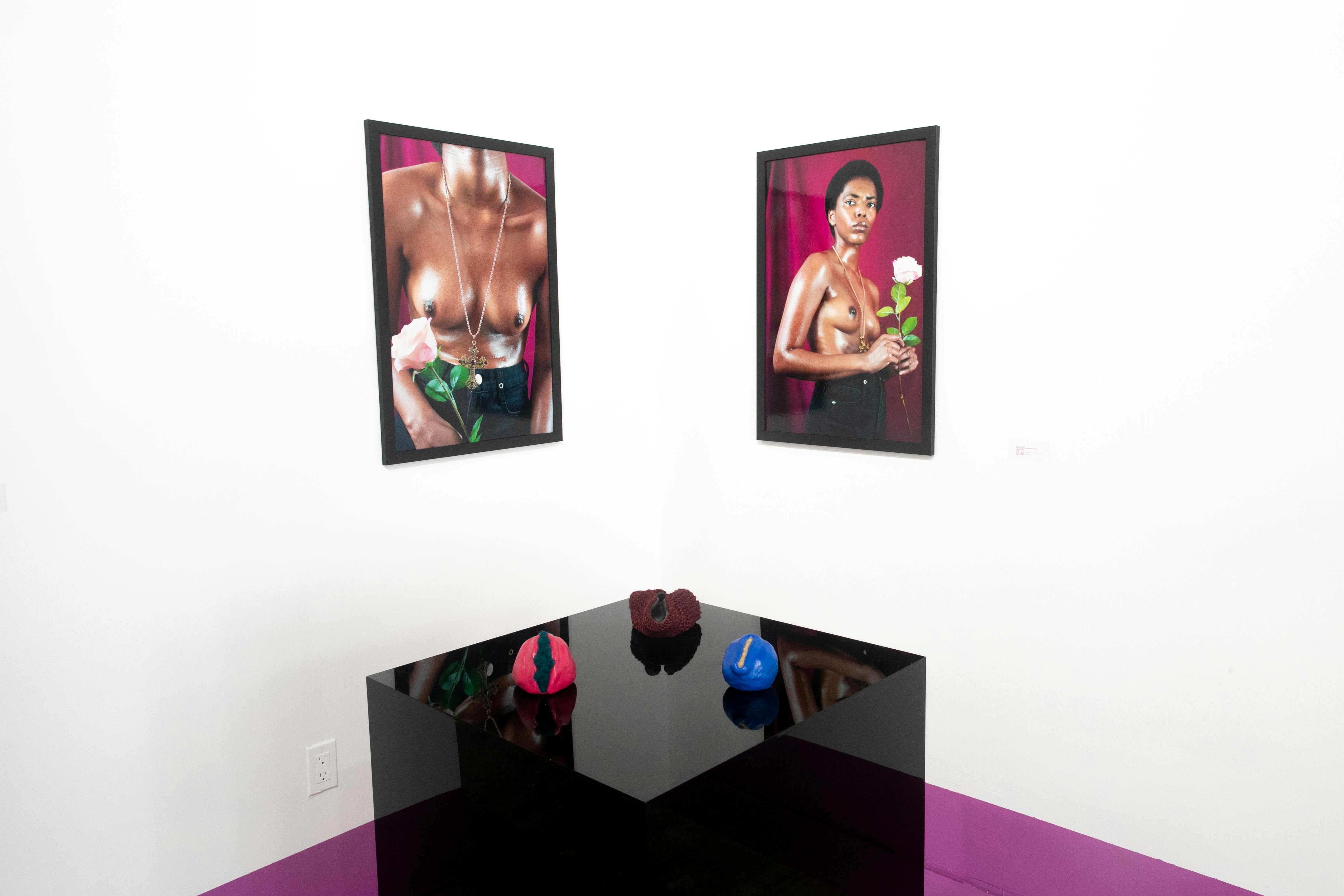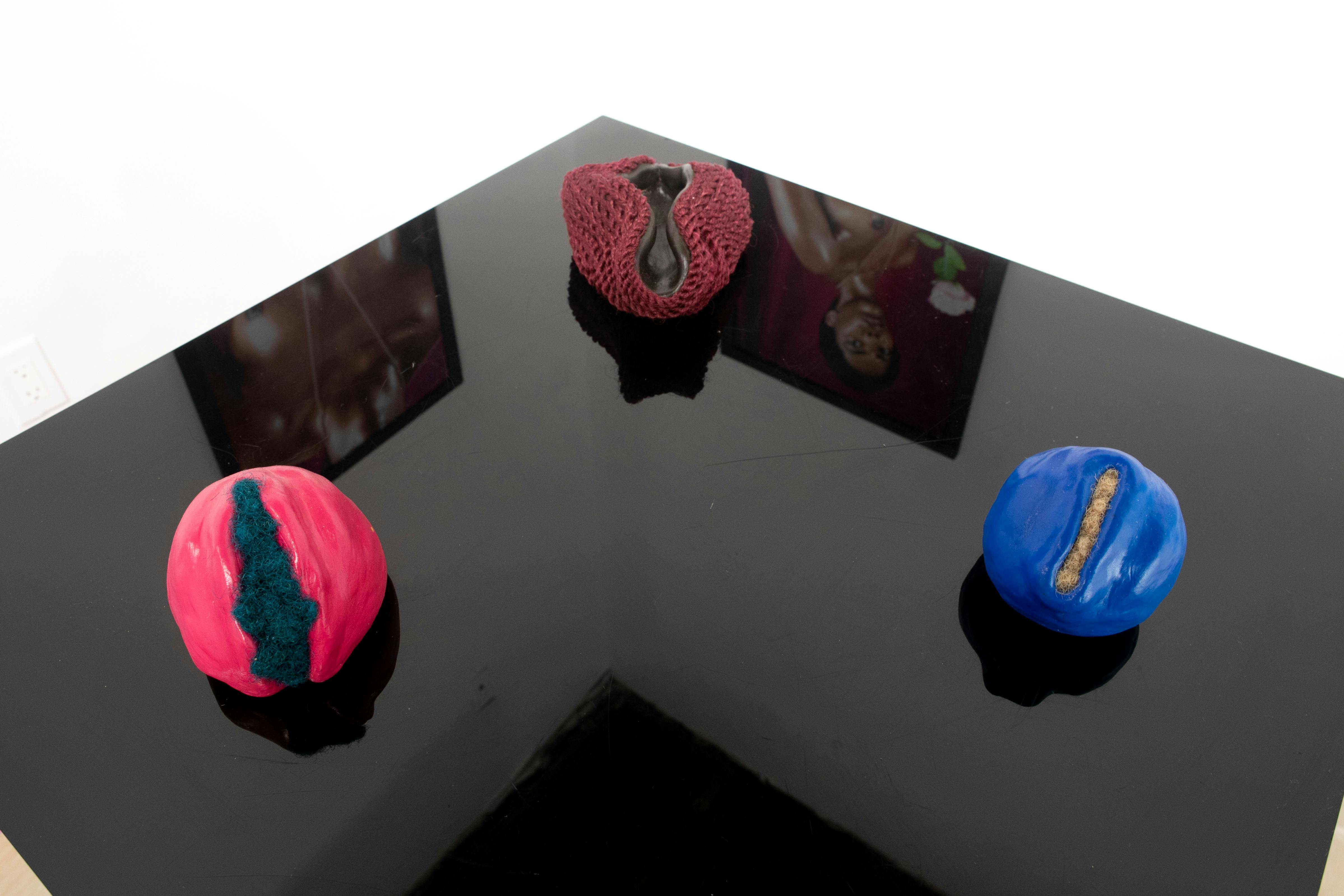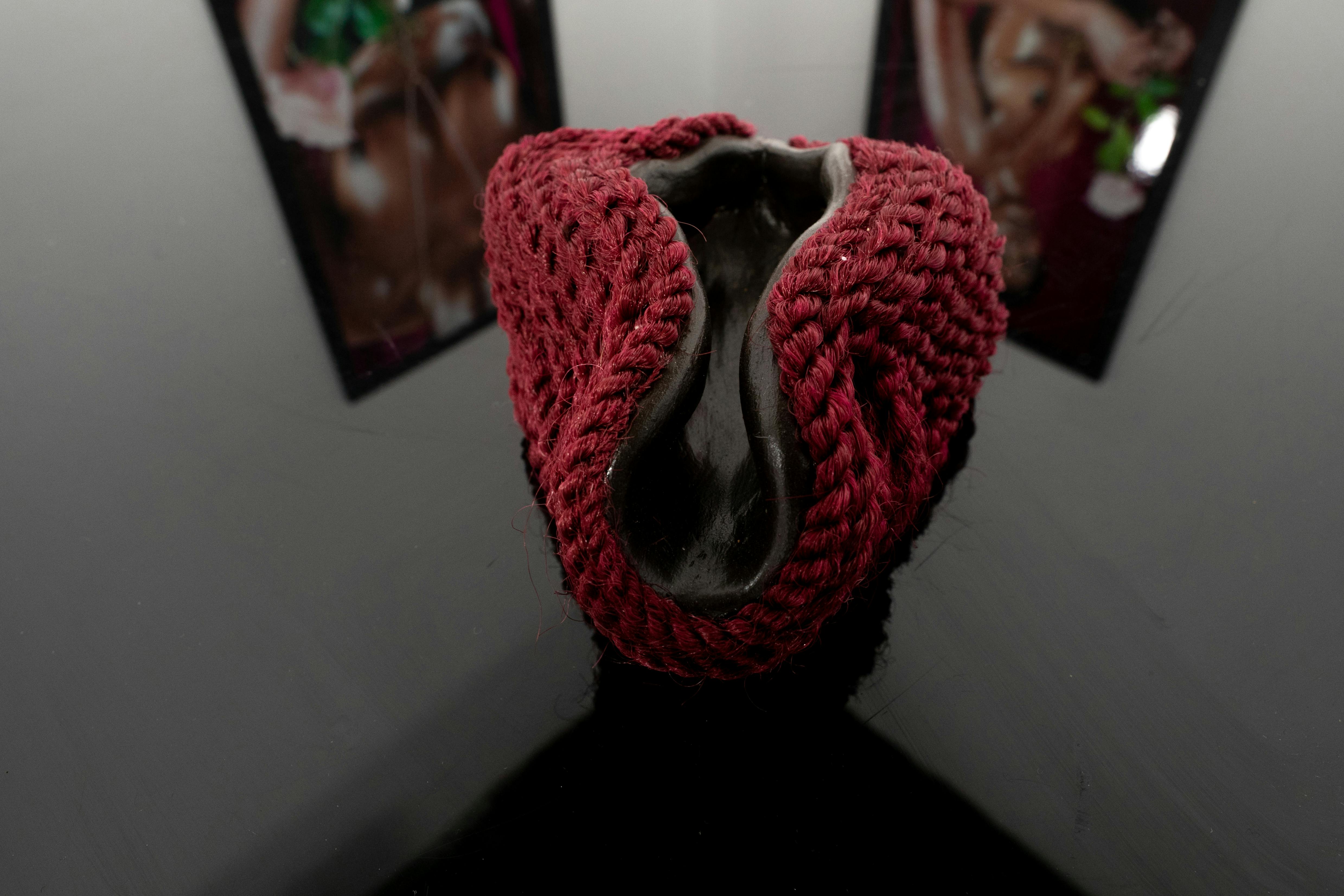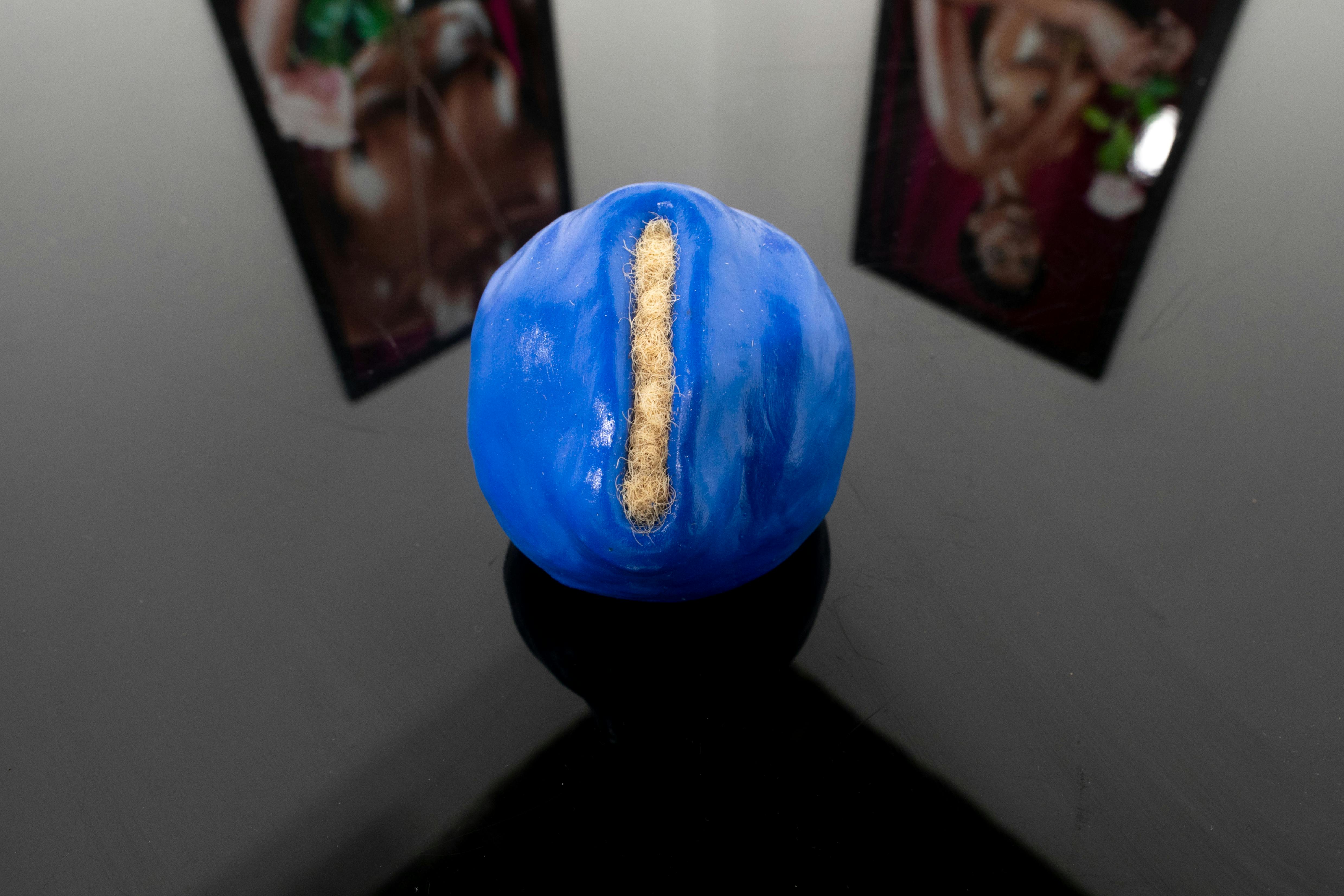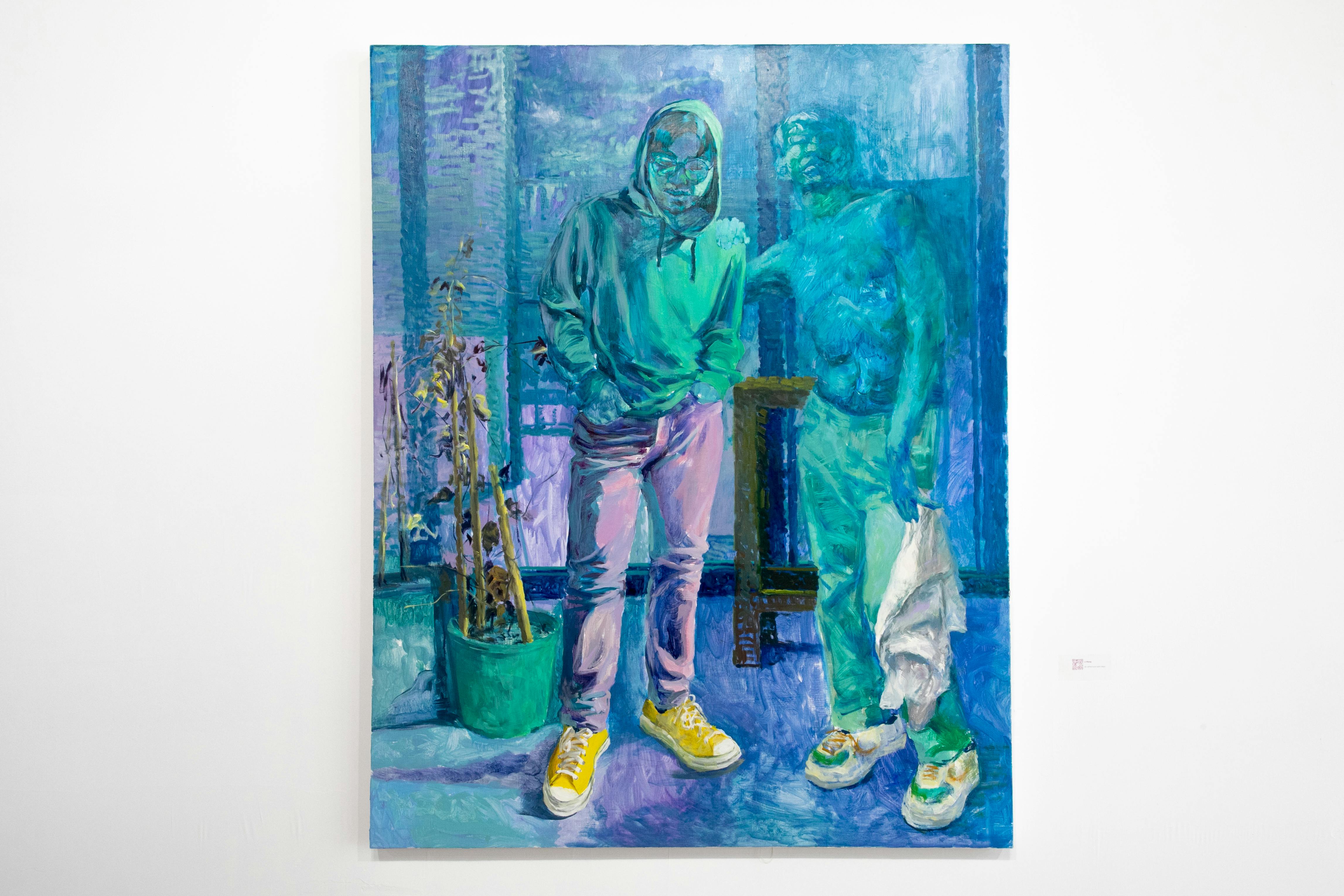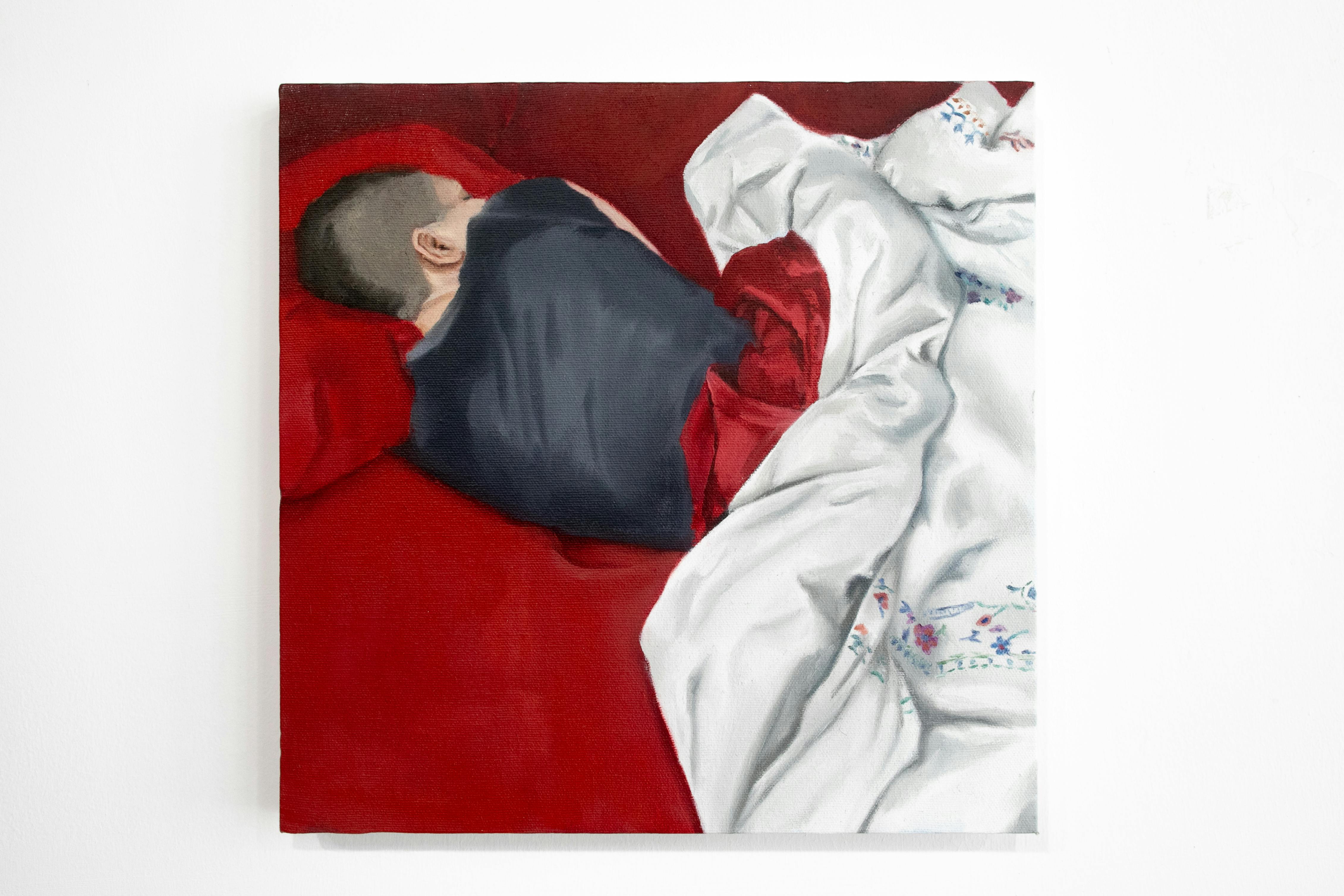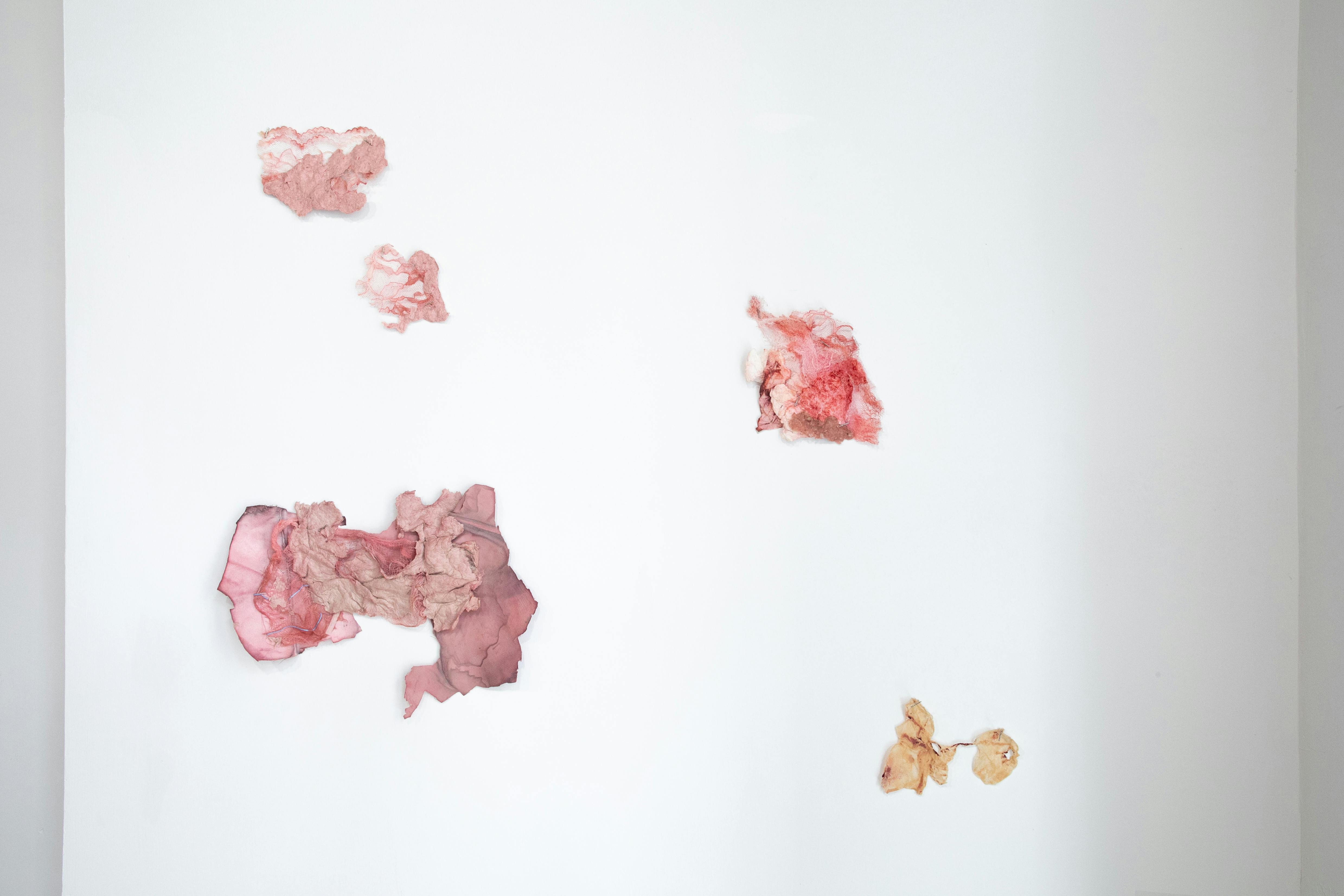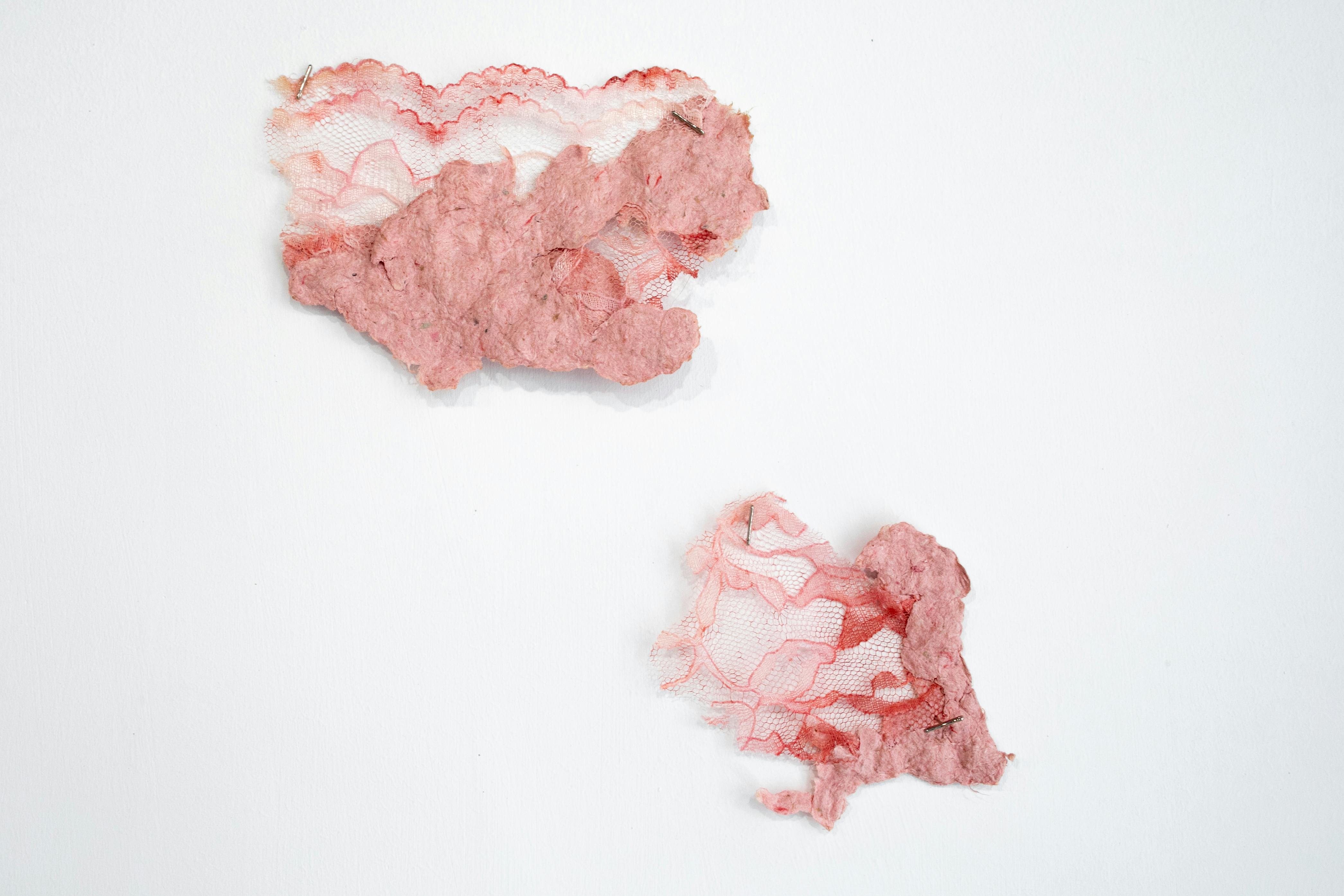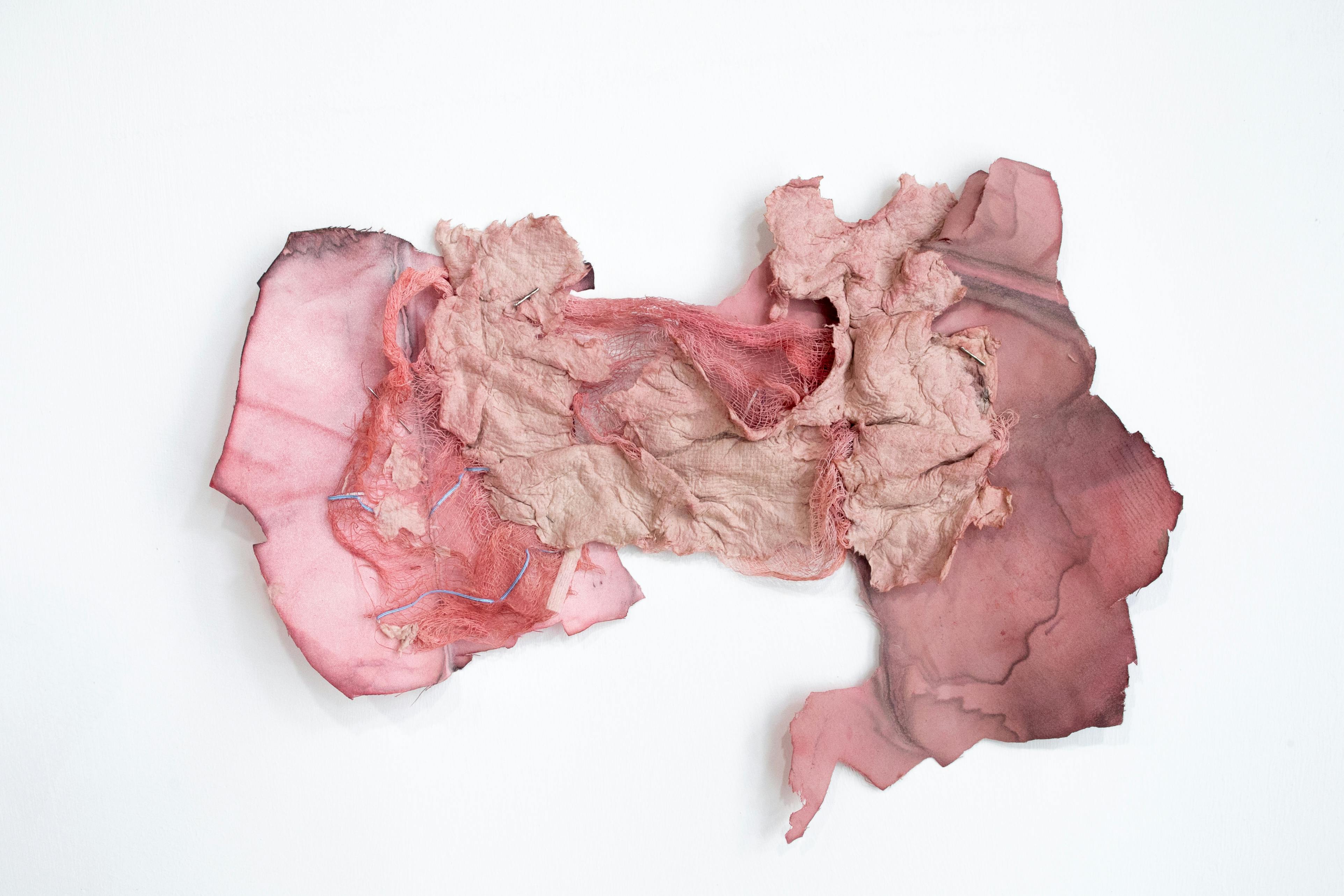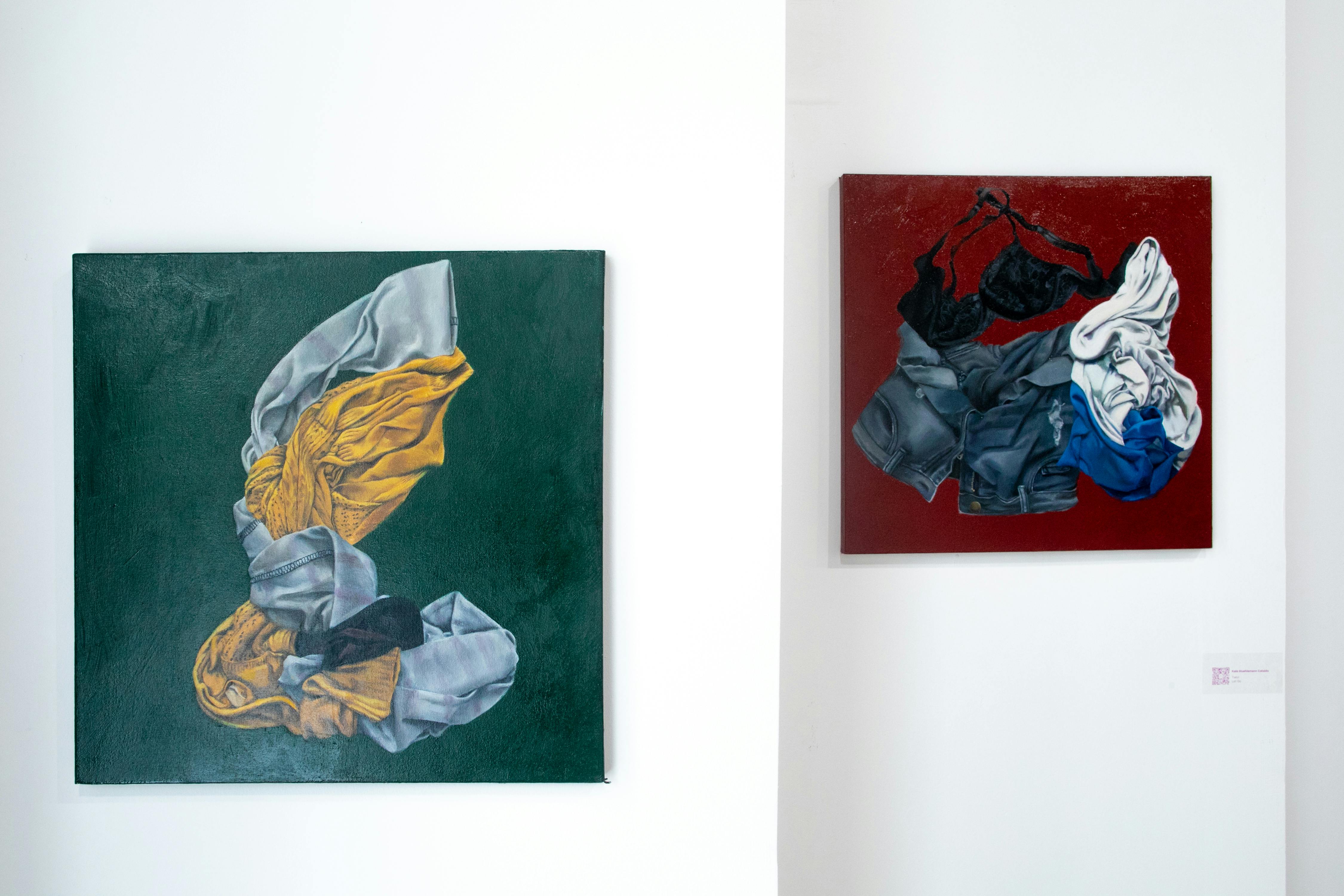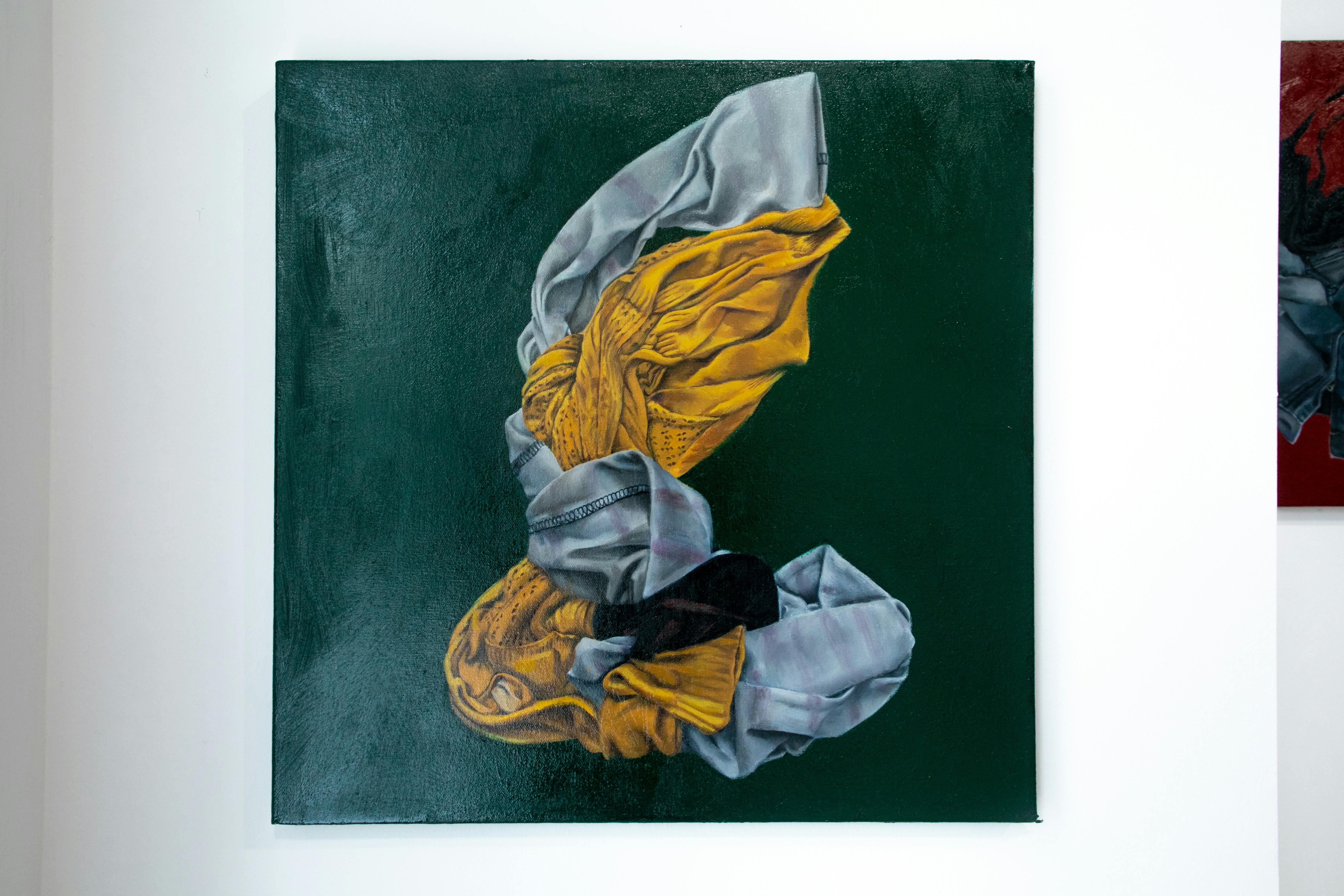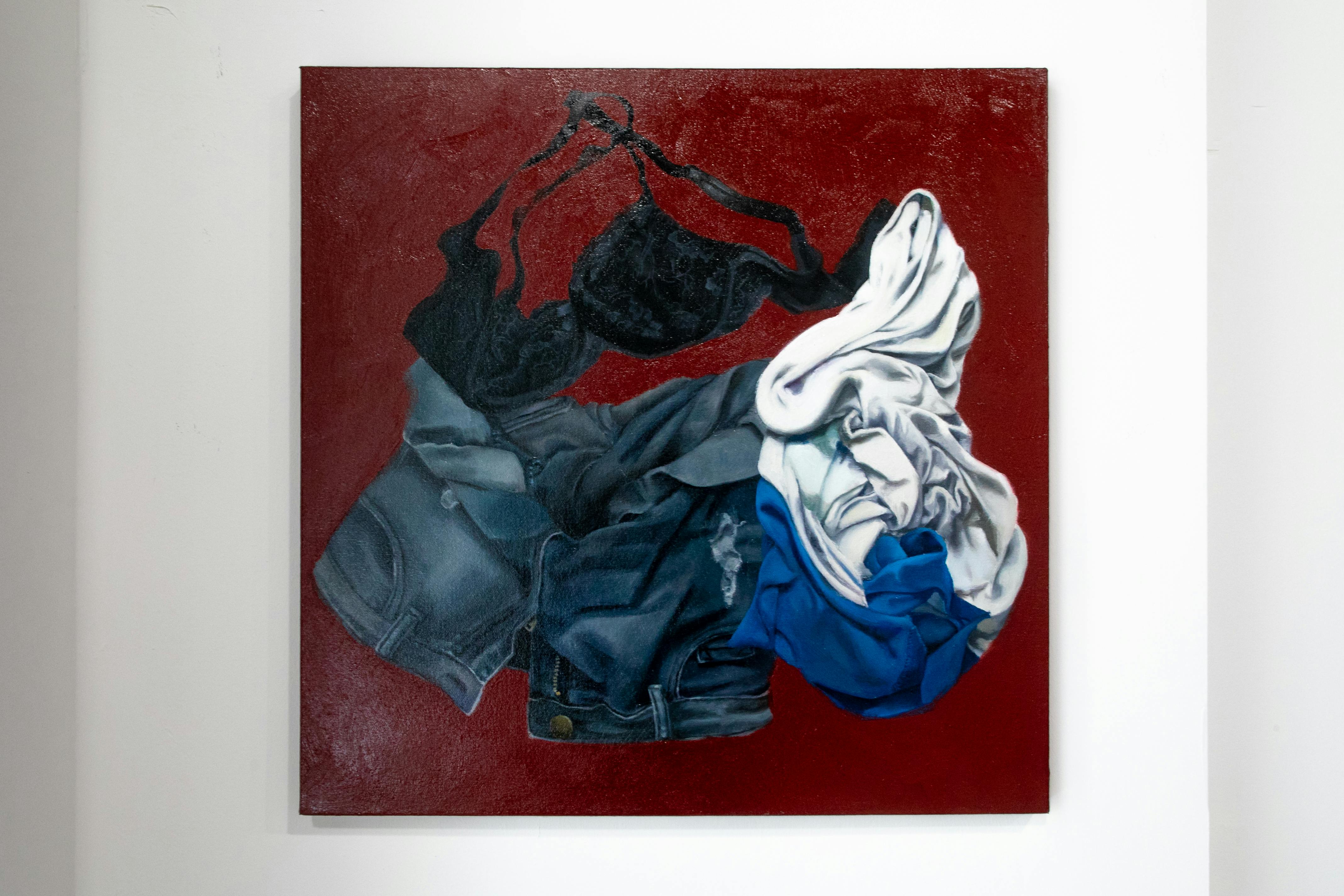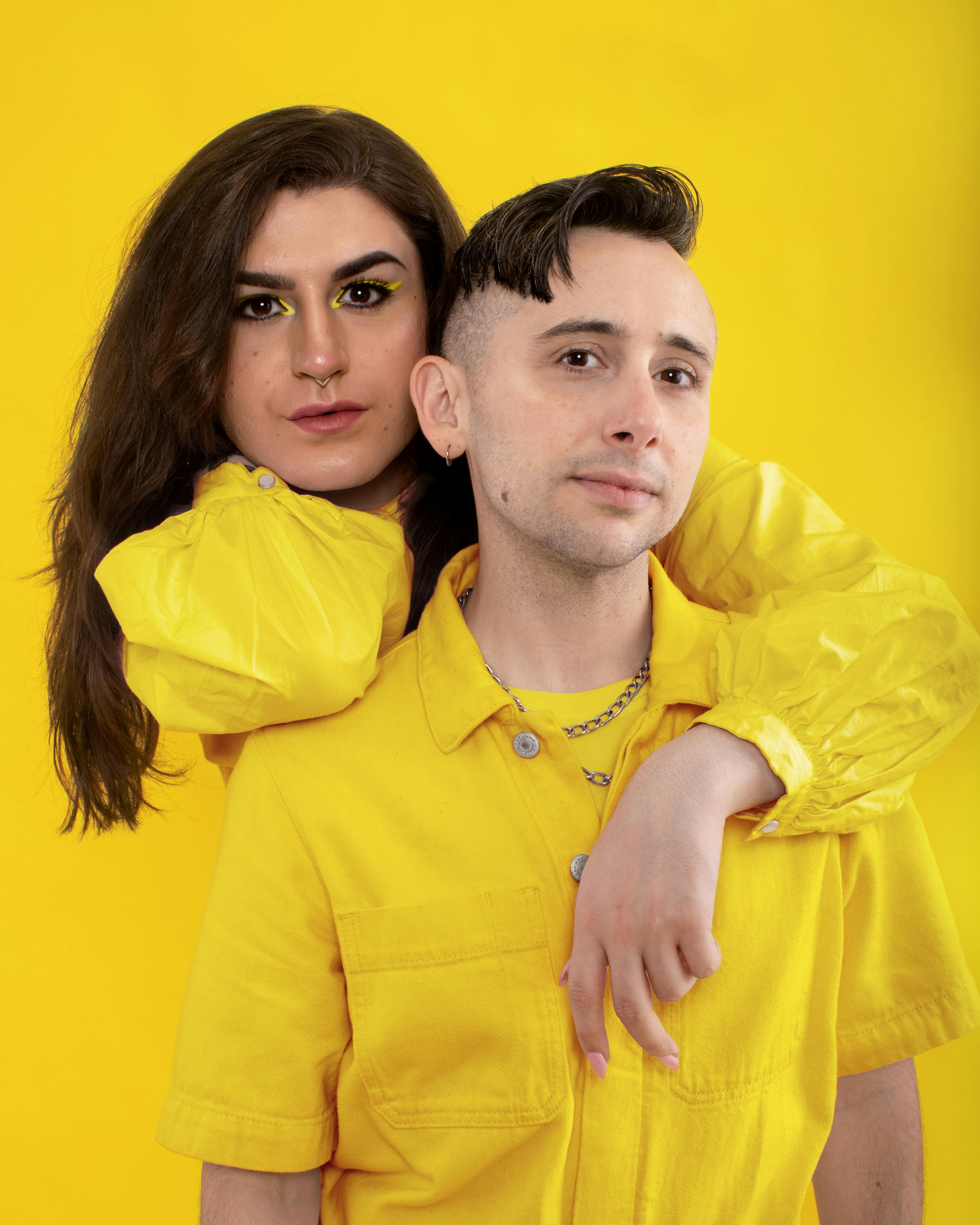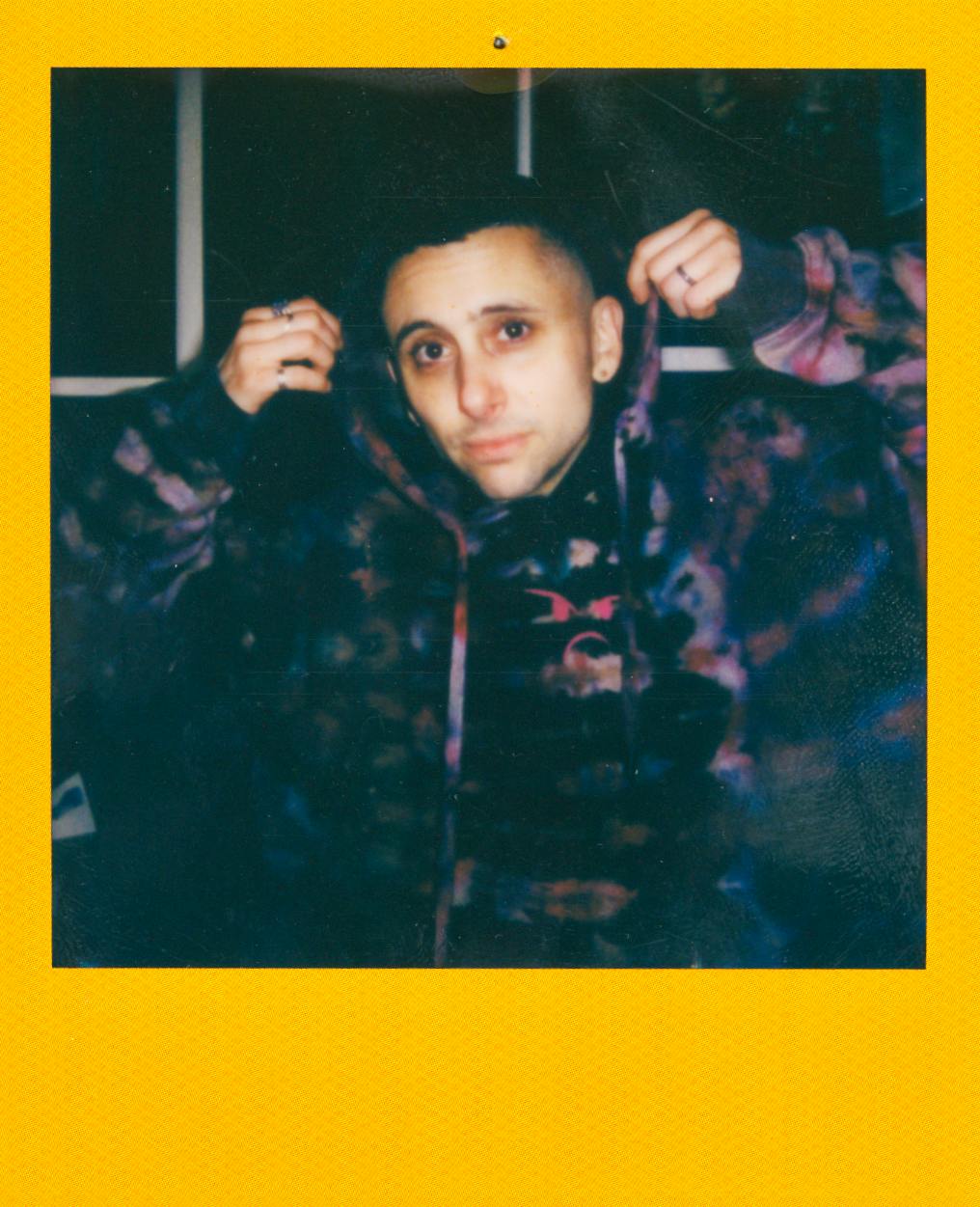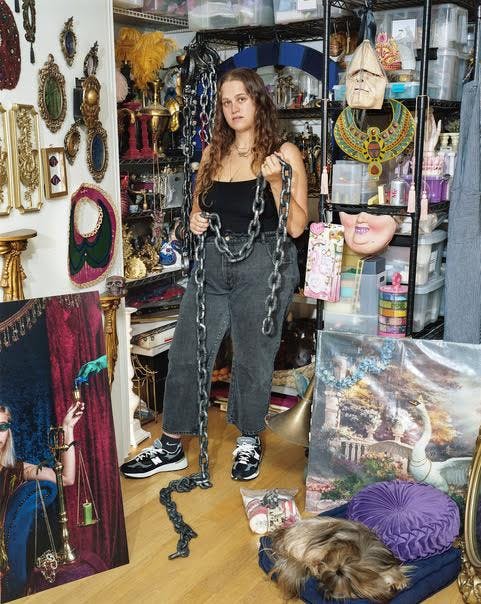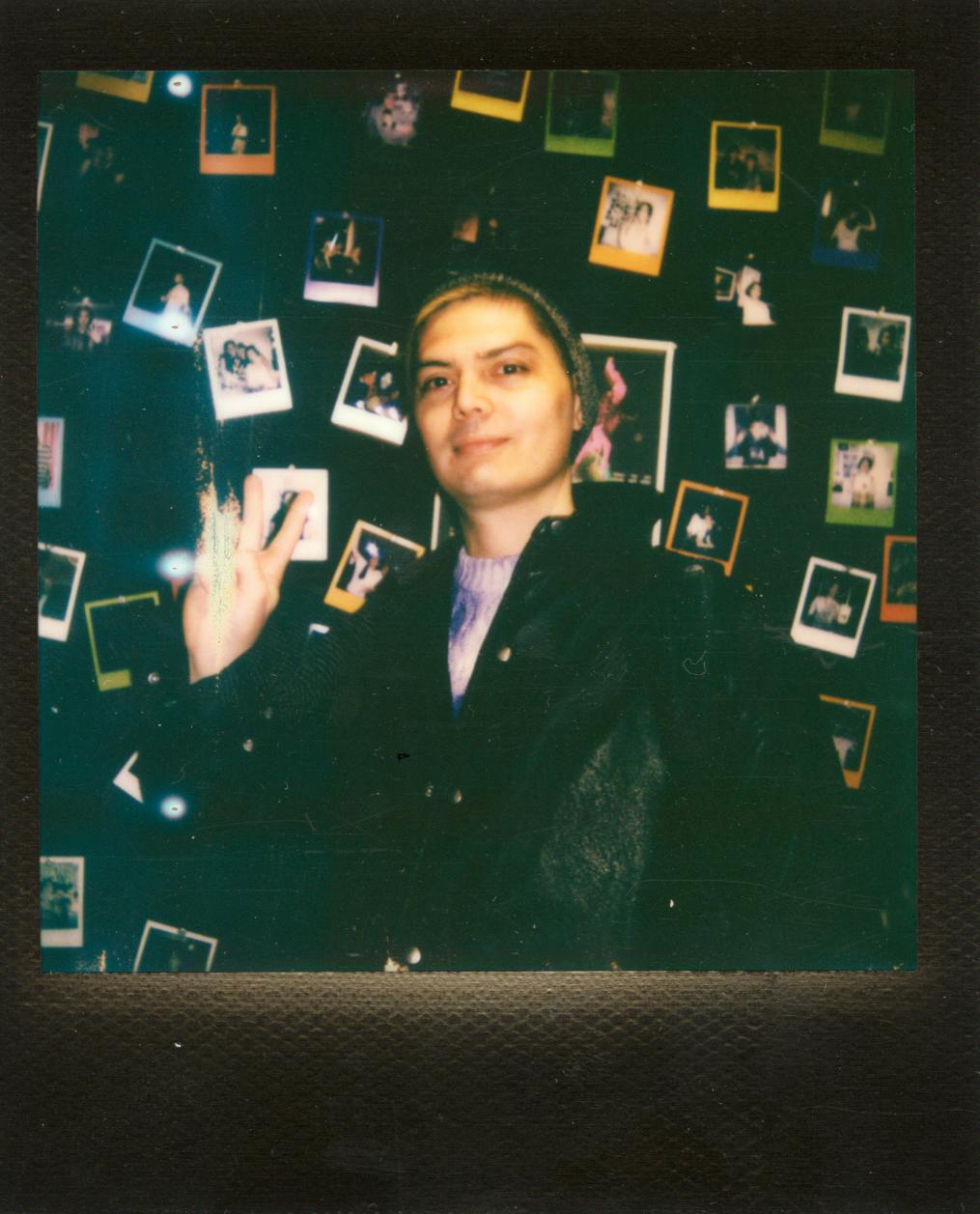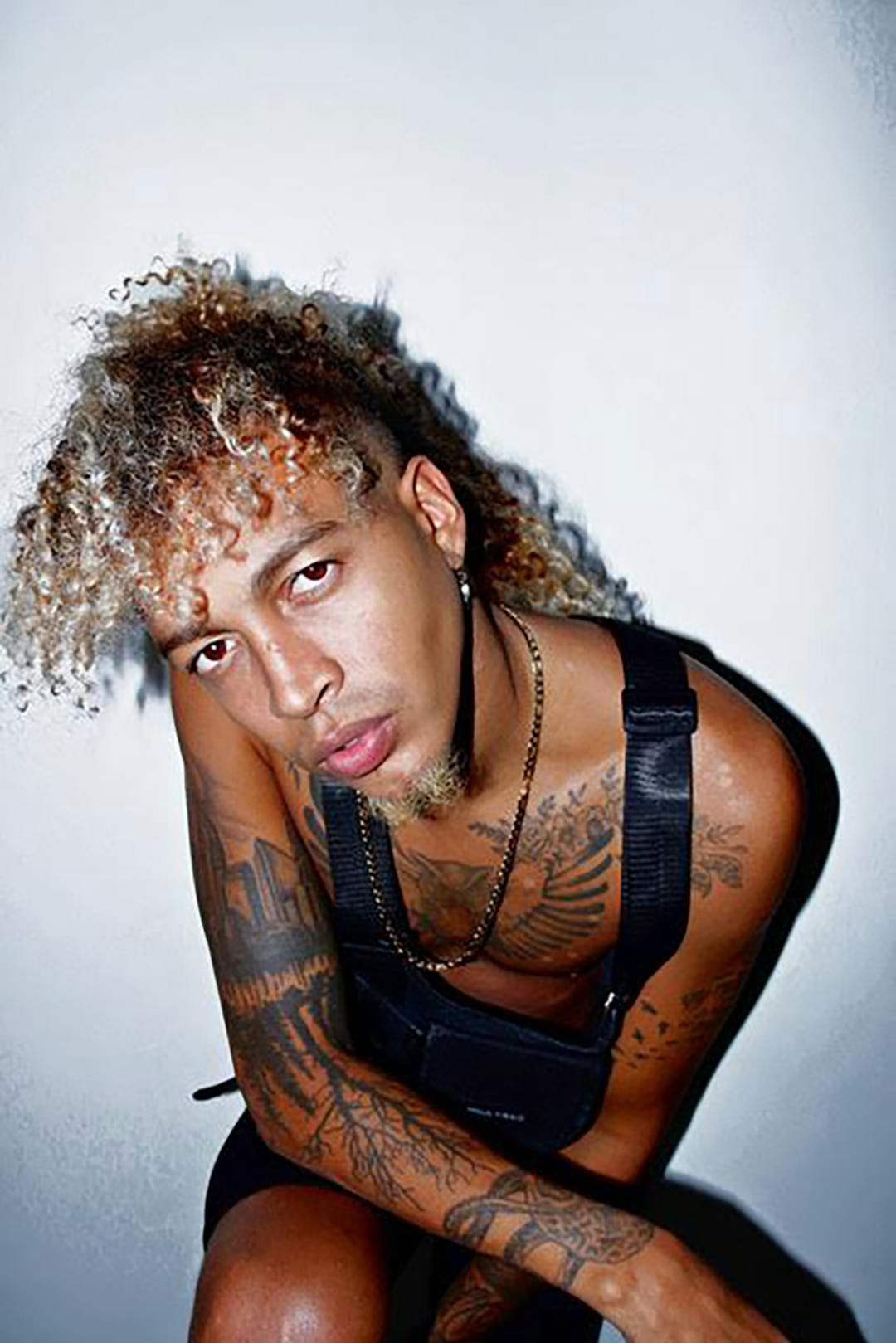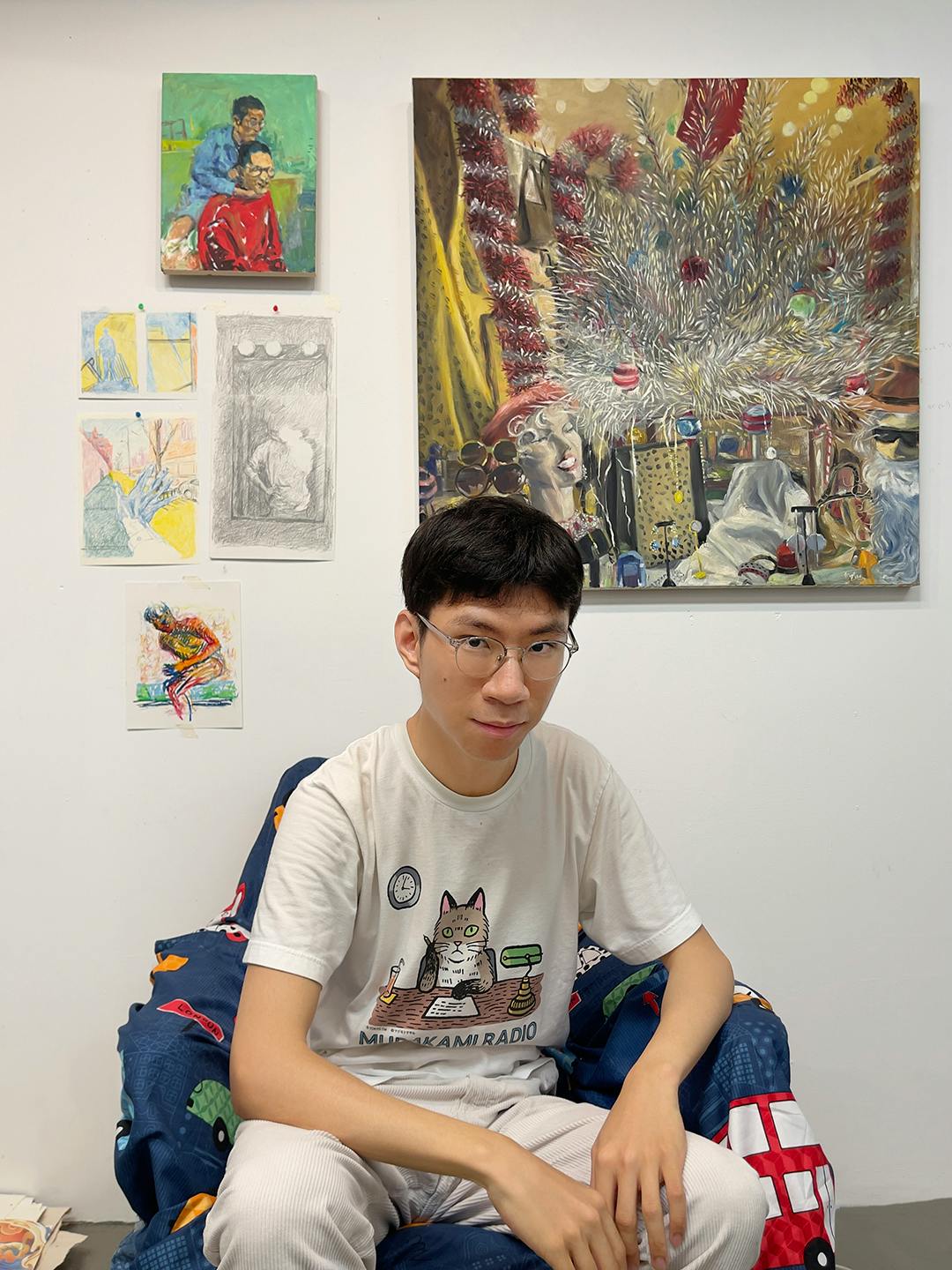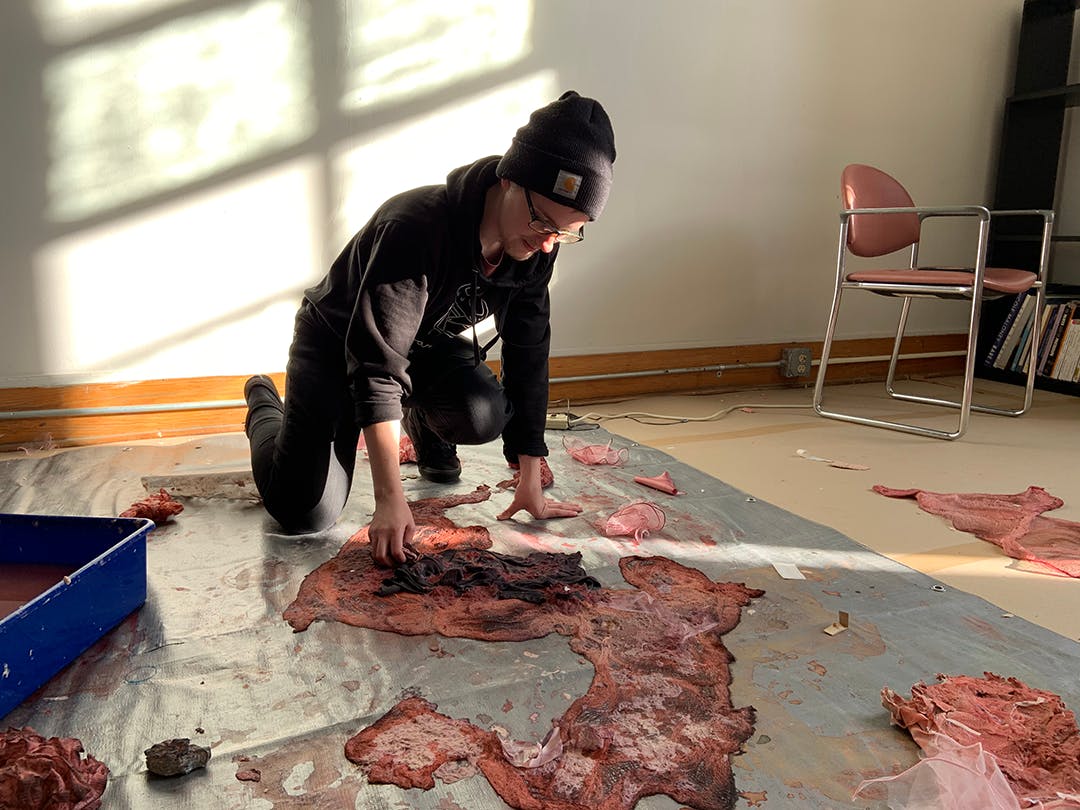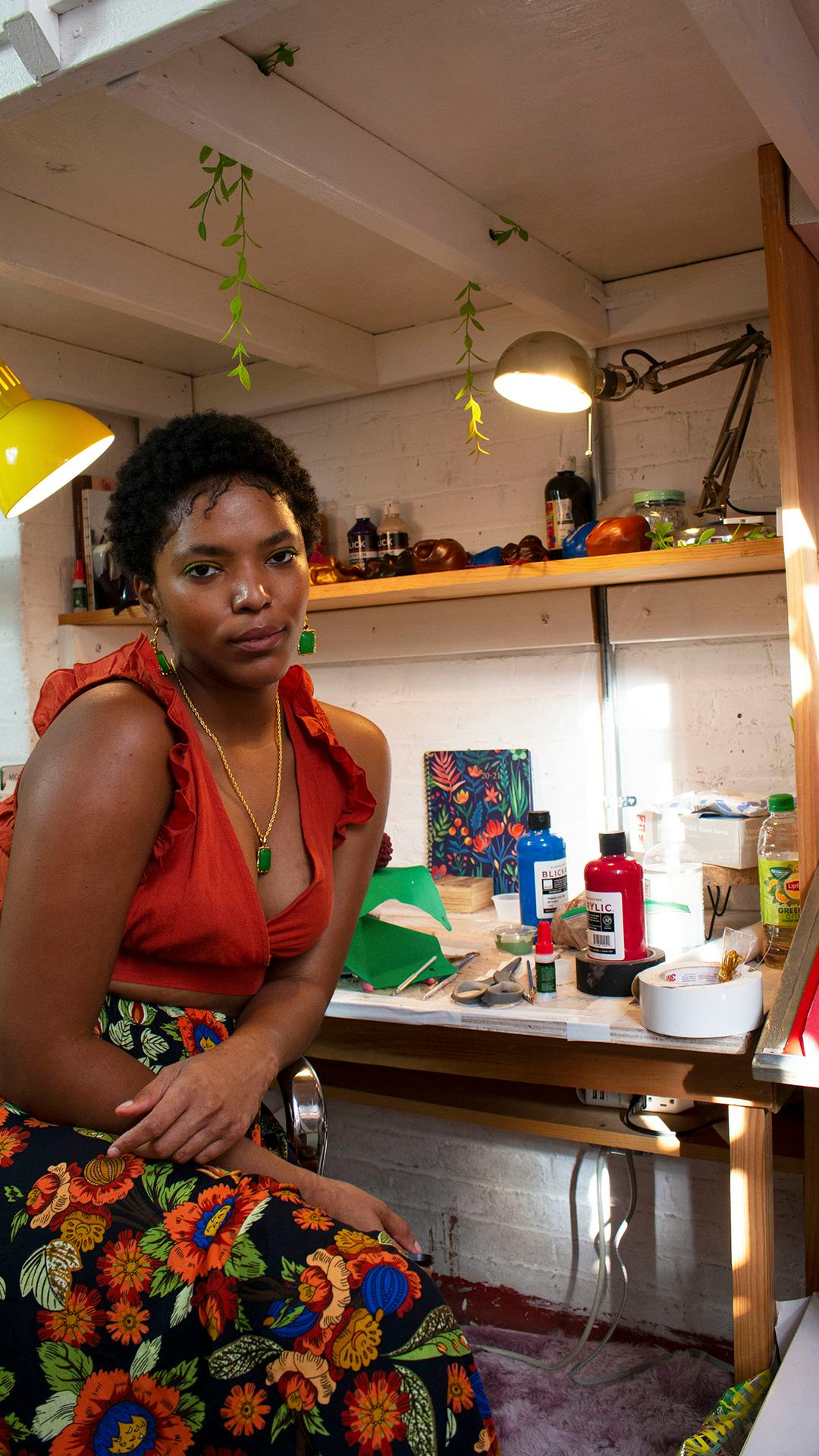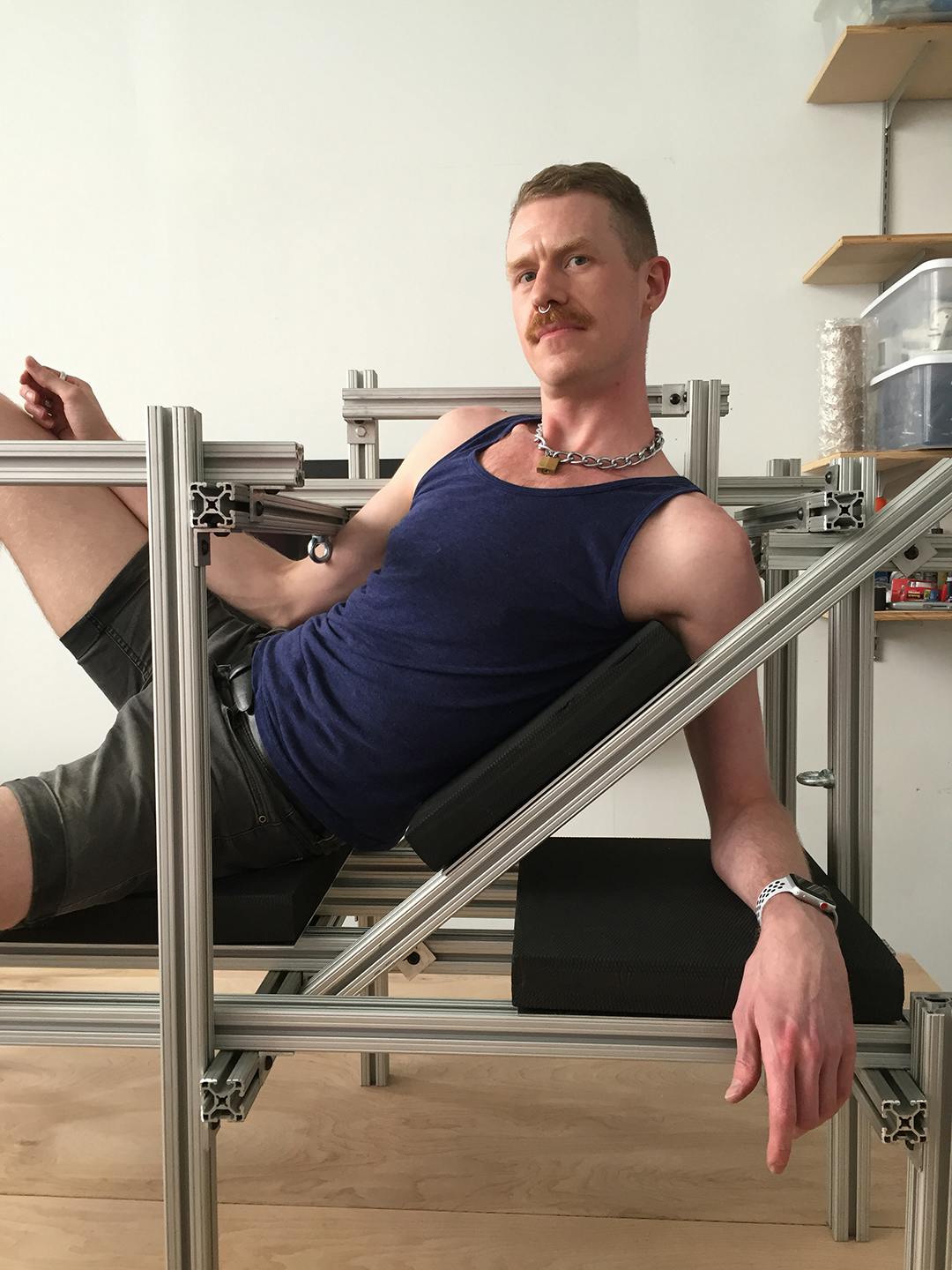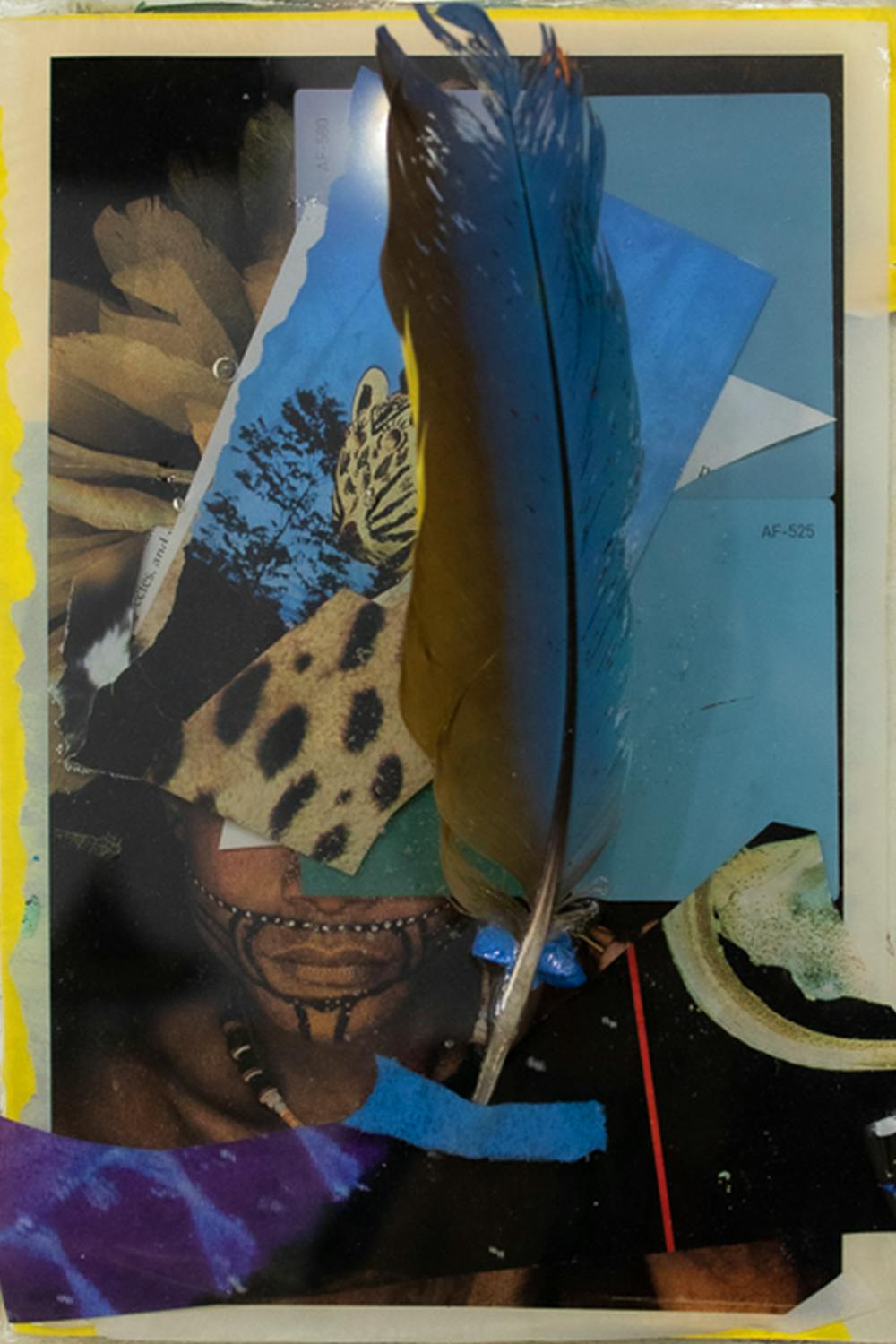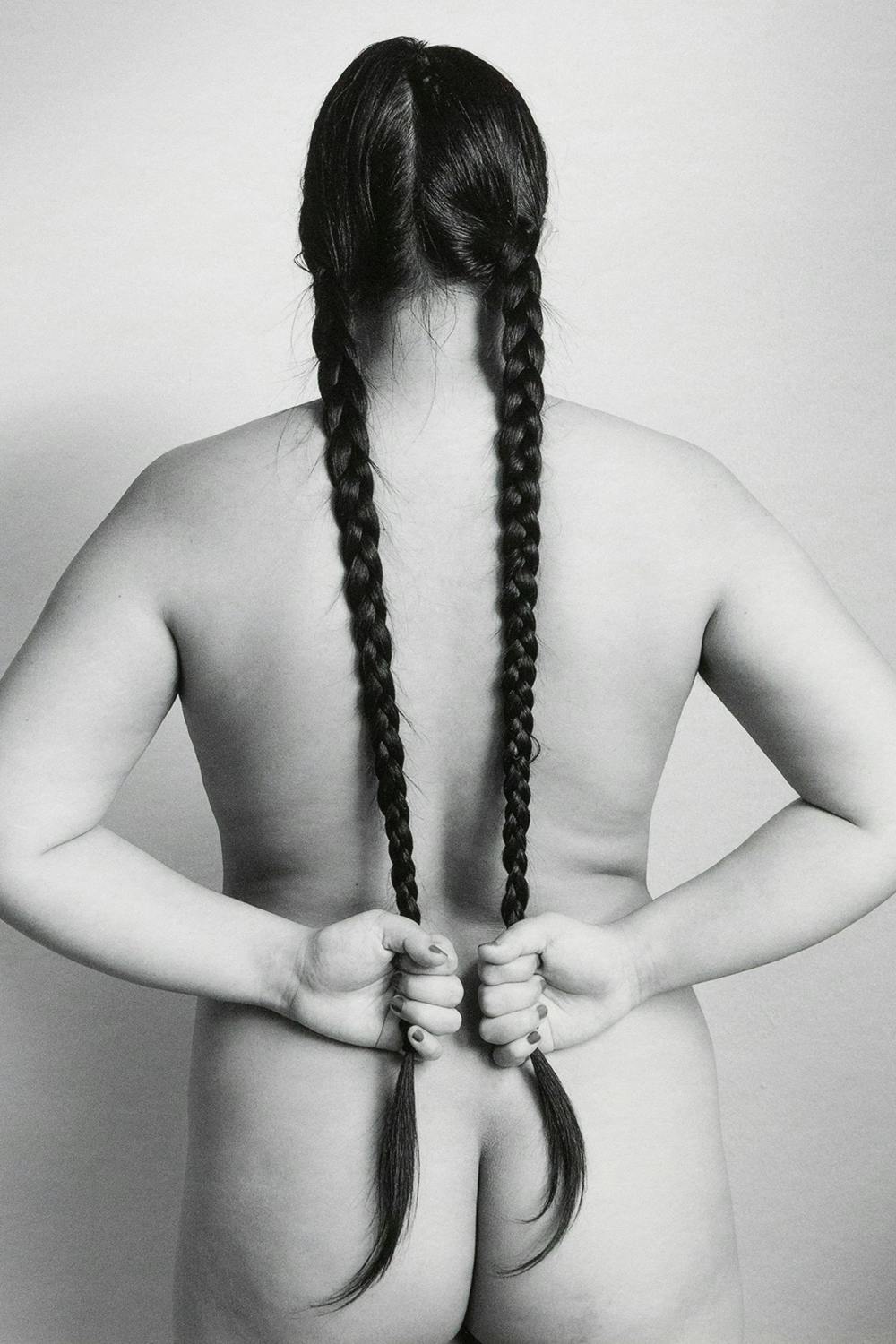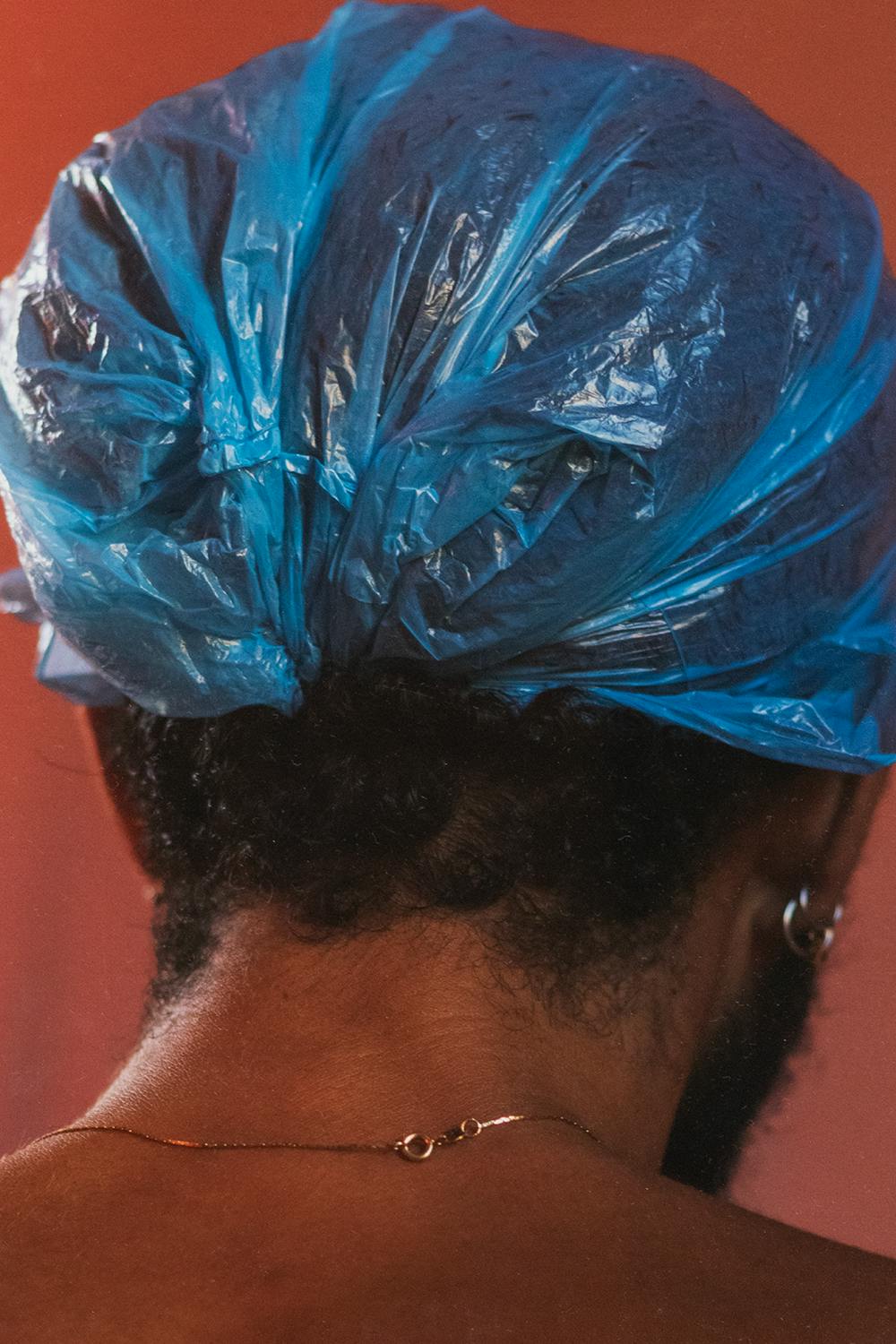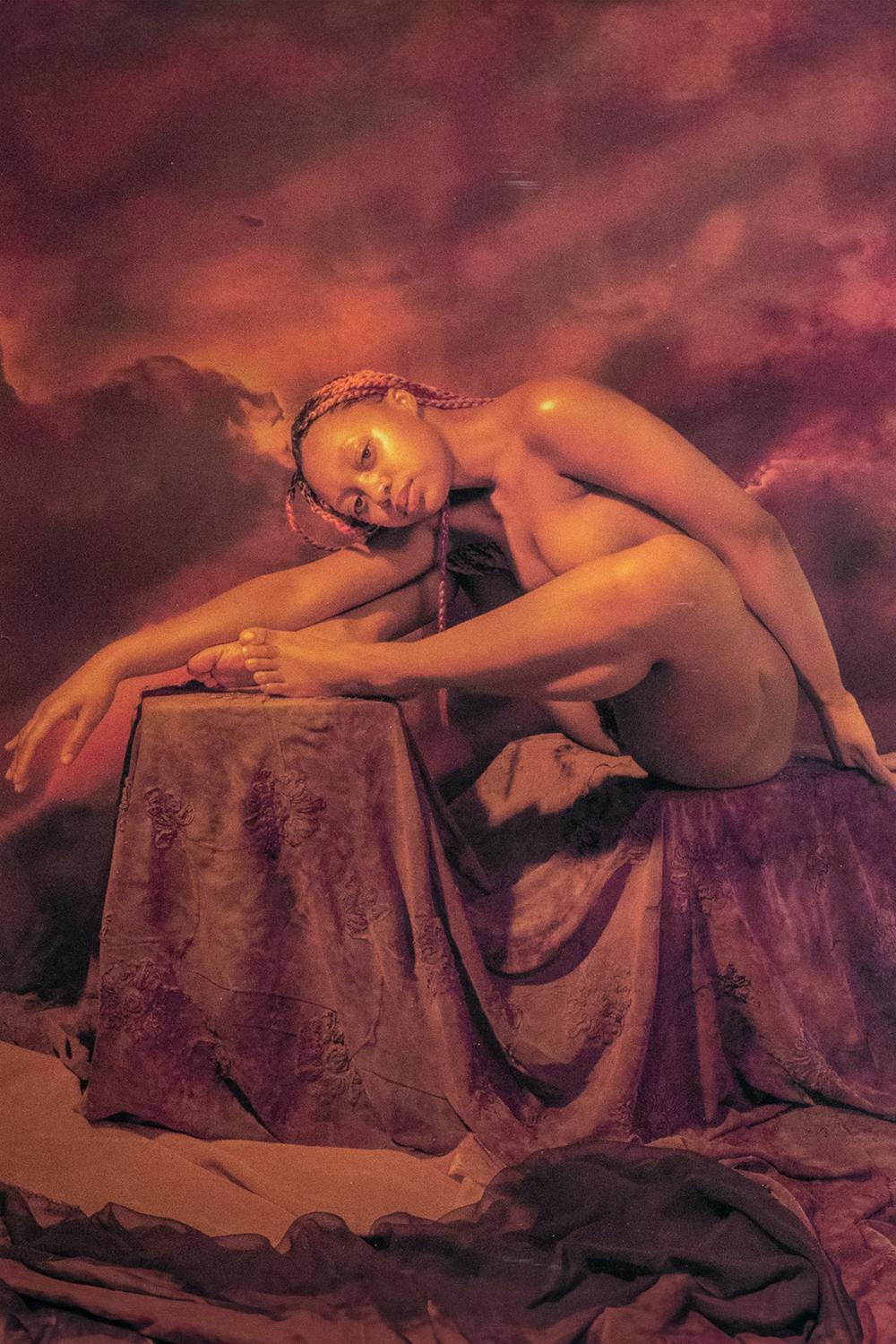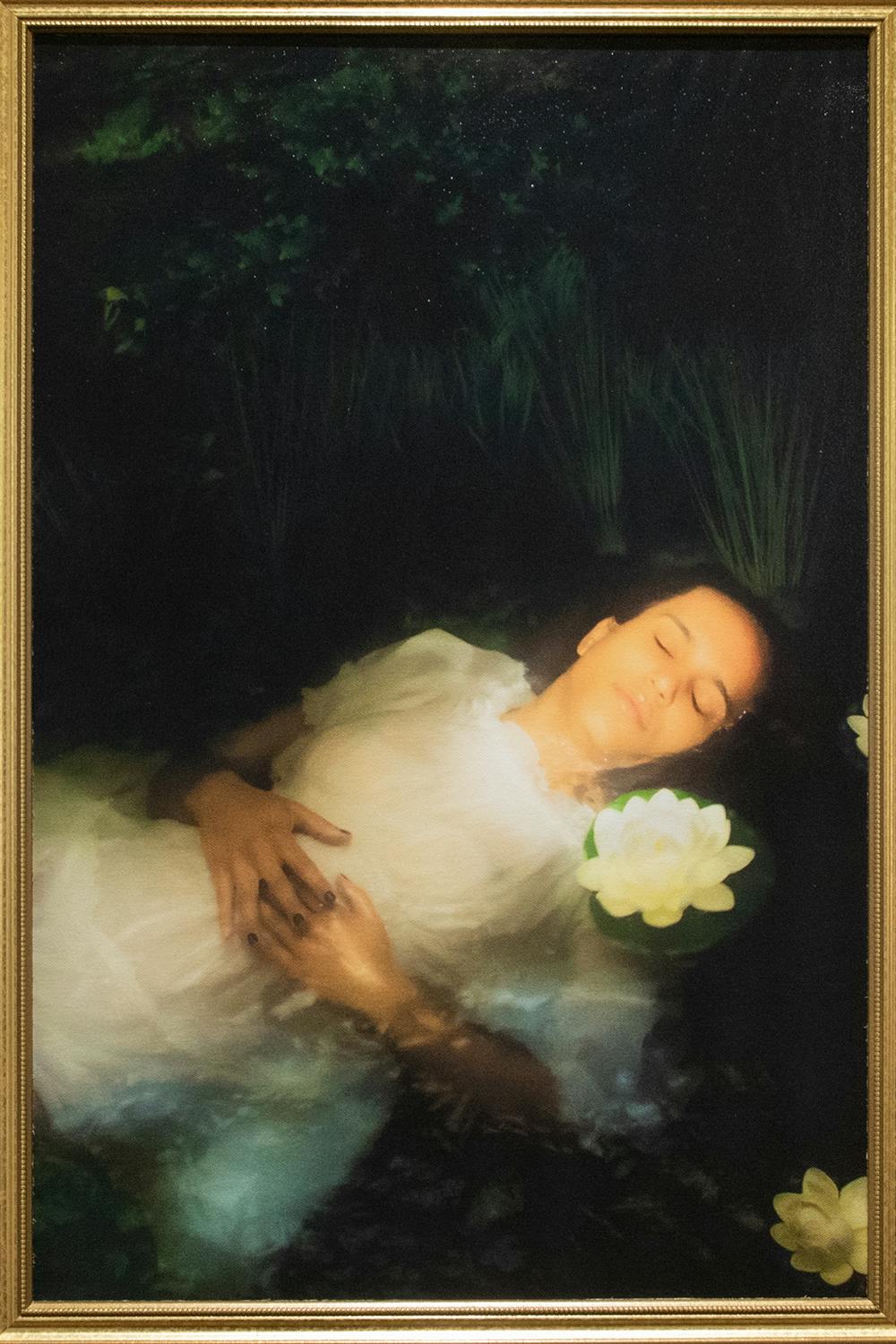(UN)FIXED brings together 12 artists selected by curators Jay Elizondo and Lorenzo Triburgo from an open call of 500 applicants.
(UN)FIXED takes as its conceptual grounding the curators’ relationships to trans*queer embodiment and their belief in expansive ways of being. While Lorenzo recently ceased taking testosterone as a performative attempt to embody gender abolition, Jay began taking estrogen this year. Although one might be tempted to conceptualize their experiences in the framework of a simple dichotomy or as irreconcilable contradictions—trans masculine/trans feminine, testosterone/estrogen, or ceasing and beginning—they seek to challenge misconceptions of “fixedness” and use a trans/queer lens to draw connections between the ways each of the artists included in the exhibition complicate the seemingly dichotomous. In painting, photography, video, sculpture, performance, and installation, the artists in (UN)FIXED demonstrate an understanding of the ways holding multiple truths is necessary for life outside the margins.
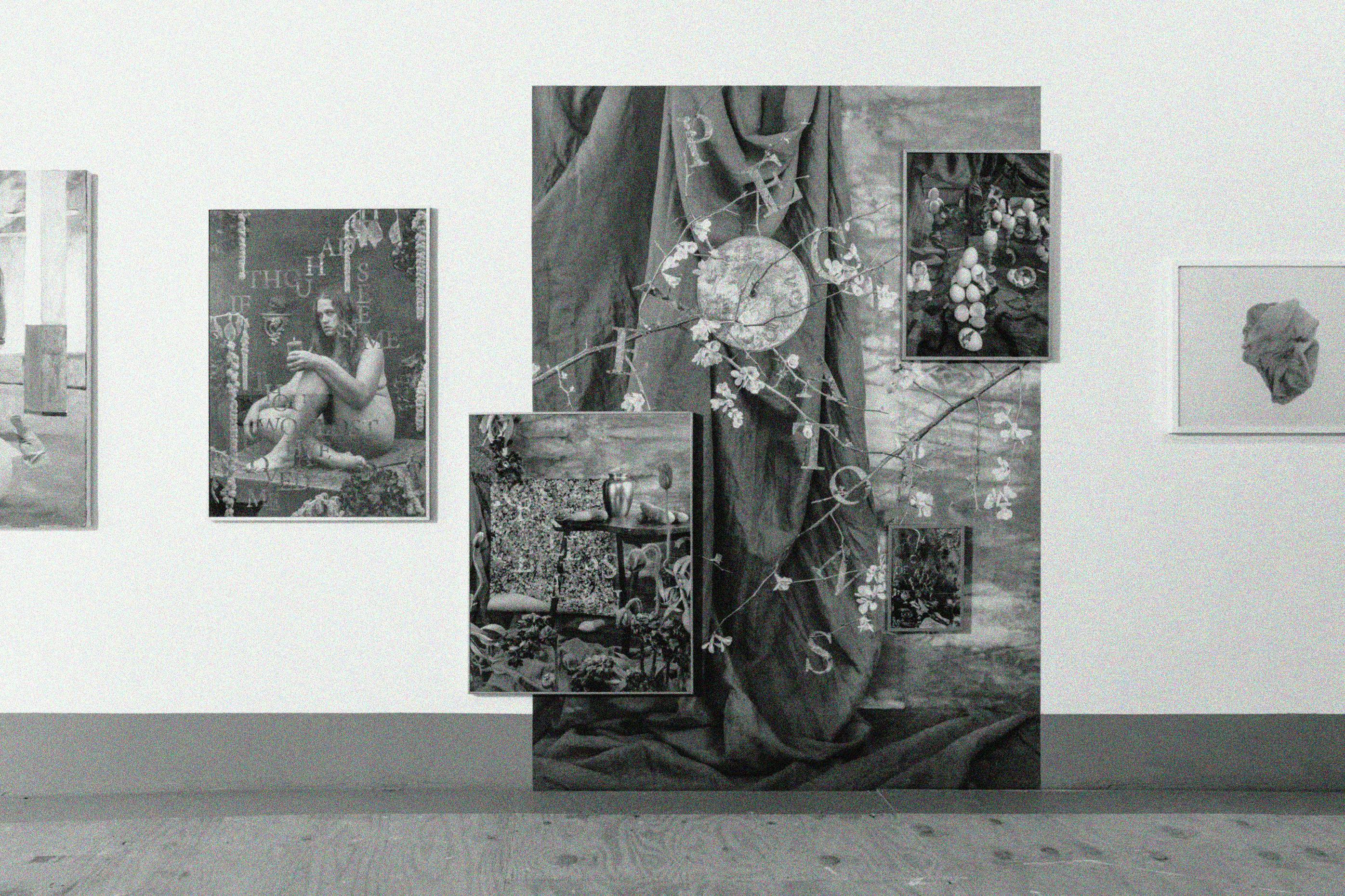
(UN)FIXED
June 17- August 5, 2022
On view June 17th - August 5th at SoMad Gallery, (UN)FIXED brought together 12 artists selected by the curators from an open call of 500 applicants—Vincent Chong, Theo Trotter, Rachel Stern, Li Wang, Lassai, Kate Muehlemann-Cataldo, Gino Romero, Gabrielle Randall, Darian Deshawn Stewart, Ash Hagerstrand, Aisha Tandiwe Bell, and Peter Clough—who engage with conflicting notions of transformation, temporality, embodiment and subjecthood. Video and installation work by Jay Elizondo and photographs by Lorenzo Triburgo are also included and speak to the additional (seemingly contradictory) experiences of agency and unknowing in relation to a trans/queer self. The artworks in the show are at once confrontational and intimate – they claim space, queer time, forge existence, and destabilize the foundation of systems we live within.
In the work of both Peter Clough and Ash Hagerstrand we observe a willingness to employ disquietude and prompt viewers to reconsider paradigms of wellness, pleasure, and comfort. Clough’s mesmerizing and hauntingly intimate two-channel narrative video work explores experiences as a queer submissive and exaltation more broadly, while Hagerstrand’s installation of gifs and still images prompts questions about relationships between “disabled” and cyborgian bodies in digital space, as threats or beacons of possibility.
Darian Deshawn Stewart deftly harnesses the allure of a bright color palette infused with rhinestones in his painted representations of queer blackness. According to Stewart, the figures in his paintings exist in spaces “made of trauma” but where bliss is found through the erotic. Theo Trotter’s latex and textile sculptural works also offer a complex view of trauma–not necessarily in opposition to bliss or transcendence, but as something inextricably linked to and in conversation with it. Rather than an aesthetic of rhinestones and glitter, Trotter veers towards beauty in the grotesque, an opposition made messy by the lens of trans embodiment.
In the figurative paintings of Kate Muehlemann-Cataldo and Li Wang the spaces and materials the figures exist within are as important as the figures themselves. While Wang’s figures are painted into everyday scenes upended by a surrealist collapse of space, and Muehlemann-Cataldo paints queer bodies and the fabrics that surround them in spaces of refuge, both prompt us to consider the vulnerability held in one’s body, queer desire, psychological safety, or lack thereof.
Musician and video artist Lassai and visual artist Aisha Tandiwe Bell each create work in contemplation of liberation. Bell’s sculptural “traps” are cardboard at their core, but lined with lush fabrics, painted gold, and adorned with multicultural prints. This inverse in material values speaks to the duality of meaning in Bell’s snares. Traps here are both the cultural, economic, and political stations we are confined within under systemic oppression, but also represent the spaces that we run to, or hide in for safety, perhaps contributing to our own mental or physical ensnarement. Lassai’s videos are filled with original music and theatricality in order to tell queer Black stories for healing and empowerment.
Vincent Chong, and Gino Romero create work that elevates queer community, connecting personal experiences to queer histories. Romero’s performance and installation work is at once tangible and ephemeral. Romero draws on a history of queer culture and Venezuelan spiritual practice to propose new, queer ways of mourning and honoring queer ancestors. Chong’s intimate figurative paintings of Queer & Trans Asian Pacific Islander community members engage with notions of tradition, family, body, and presentation.
Rachel Stern’s eight foot wallpapered photographs, layered with additional framed photographs of similar studio scenes, invite questions on the very foundation of how we make meaning. Stern’s inclusion of almost-hidden text in these visually dense, constructed scenes, unfixes the letters we see from their meanings. As Stern uses optical illusion and text-as-image to destabilize the process of signification, Lorenzo Triburgo’s ambiguous photographs prompt questions on the signification of the body. The bright pink bubble gum floating in white space at first appears to be of-the-flesh, perhaps an anatomical study. The questionable corporeality of the objects renders trans*queer embodiment as an unknowable, unfixed entity, reflecting a state of transformation.
Jay Elizondo’s photographs, short film and installation include a performance of the artist as her mother, emulating and recontextualizing models of femininity the artist was deprived of as an adolescent who was assigned male at birth. In Elizondo’s work the body and the object are both queered in the blending of still and moving image, memoir and fantasy, present and past. Gabrielle Randall also takes an interdisciplinary approach that incorporates an understanding of “being” as necessarily encapsulating a multiplicity of lived experiences, and the simultaneity of past, present, and future. Randall’s figurative photographs with their powerful red backdrops and specular highlights, in conjunction with bright sculptures and short video, work together to express the artist’s living Black, Queer, Femme experience.
(UN)FIXED was on view at SoMad Gallery June 17th through August 5th, 2022, with an opening reception on June 17th from 6-9pm.
The curators seek to exhibit artworks across mediums and personal identities that grapple with “fixedness” as a misconception. Drawing on their personal trans*queer experiences, wherein Lorenzo stopped taking testosterone after 10 years of transgender hormone therapy as a performative attempt to embody gender abolition and Jay started on estrogen as recently as last month, they recognized these dichotomies (estrogen/testosterone, ceasing/beginning), as entry points to a larger discussion. Considering the complex relationships between passing and privilege, the internal sense of self and external presentation of self are at once at odds, in communion, reductive or expansive. Further, the curators seek to explore a prominent contradictions in queer culture such as, the desire for anonymity and anti-assimilationist queer spaces, while negotiating the visibility trap.
"We came for “independent art space,” as two working artists and curators seduced by SoMad’s exhibition history, mission statement and experimental approach to programming. We stayed for “femme and queer led” as we’re both trans and queer ourselves.
We have been developing ideas for a curatorial collaboration since fall 2021, as a collaboration between us seemed all but destined. In 2018 we were both in The Unspeakable: A Dark Show at the Pfizer building (Brooklyn). In 2019, having never met, Lorenzo curated Jay into Criminalize THIS! at Amos Eno Gallery (Brooklyn), and most recently Jay and Lorenzo were both in Baxter St’s Artist In Focus exhibition and benefit, also having discovered that both are alumni of the School of Visual Arts.
We have a vision of transforming SoMad’s raw space into a maximalist exploration of trans*queer embodiment as a lens to address broader themes of (un)fixedness. We are excited that the DIY nature of the space will allow us to integrate the artwork with the space, as opposed to simply using the space as a showcase.
Jay Elizondo is an artist whose work seduces viewers into visceral confrontations with the trans queer body. She was born in Columbus, OH in 1996. She received an MFA from School of Visual Arts in 2020 and a BFA from COLUMBUS COLLEGE OF ART & Design in 2018. Elizondo’s work has been featured in exhibitions in New York including Idol Worship at Smack Mellon, Artist in Focus at Baxter St, The Unspeakable: A Dark Show, Whore Haus at Pfizer Building, Crashing the Party at Plaxall Gallery, Criminalize This! at Amos Eno Gallery, in Miami for 2018 and 2019 Satellite Art Fair and in Columbus for her solo exhibition preMATURE at Byers Gallery. Her curatorial projects include You Remember How Lonely Everything Was in The Beginning at Please Don’t Come to This Show and Talented, Brilliant, Incredible, Amazing, Showstopping, Spectacular, Never The Same, Totally Unique, Completely Not Ever Been Done Before, Unafraid To Reference Or Not Reference, Put It In A Blender, Shit On It, Vomit On It, Eat It, Give Birth To It at SVA Chelsea Gallery in New York, NY. She was a resident artist at The Chautauqua School of Art residency in Chautauqua, NY. In 2020 and at The New York Studio Residency Program in Brooklyn, NY in 2016. Elizondo is currently a featured artists for Smack Mellon’s 2021-2022 Hot Picks. She is a recipient of The 2020 Edward Zutrau Memorial Award, The Jeff F Hilson Memorial Fund, The Edith Smilack Fund and a nominee of The 2018 Association of Independent Colleges and Universities of Ohio Award for Excellence in the Visual Arts. Her work has been published in the Brooklyn Rail, Daily Lazy, Sidewalkkilla, Front Runner Magazine, Nobody’s Fashion Week Zine “Issue 1”, That Way Zine “Issue 1” and Hiss Mag “Issue 3”. Elizondo is a co-founder of Please Don’t Come to This Show, an online project space and arts community that reflects on the complex relationship to online omnipresence and digital information through virtual exhibitions, fundraising and more. Elizondo lives and works in New York.
Lorenzo Triburgo is a Brooklyn-based artist employing performance, photography, video, and audio to elevate transqueer subjectivity and cast a critical lens on notions of the “natural.” They were a 2019 Workspace Resident at Baxter St/CCNY and an AIM Fellow at the Bronx Museum of the Arts in 2020. Lorenzo has exhibited and lectured in major cities across the U.S., Europe and Asia. Select venues include Bruce Silverstein, NYC; Photoforum Pasquart, Biel, Switzerland; Kunst und Kulturhaus, Berne, Switzerland; Dutch Trading Post, Nagasaki, Japan; The Henry Art Gallery, Seattle, WA; Museum of Contemporary Photography, Chicago, IL; Magazzini del Sale di Palazzo Pubblico, Siena, Italy; and Oude Kerk, Amsterdam, the Netherlands. Their artworks are in the permanent collections of the Museum of Contemporary Photography in Chicago and the Portland Art Museum in Portland, OR. Jay Elizondo has an MFA in Fine Arts from The School of Visual Arts. Her work has been featured in exhibitions including Idol Worship at Smack Mellon. Elizondo curated You Remember How Lonely [...] at Please Don’t Come to This Show and Talented, Brilliant, Incredible [...] at SVA Chelsea Gallery in New York, NY. She was a resident artist at The Chautauqua School of Art residency in Chautauqua, NY. She is a recipient of The 2020 Edward Zutrau Memorial Award. Her work has been published in The Brooklyn Rail, Front Runner Magazine & Hiss Mag. Elizondo is the co-founder of Please Don’t Come to This Show. She currently lives and works in New York.
